

Marriages of majesty FREE Vol. 11 No. 7 • May 2011 • melb@indianlink.com.au • www.indianlink.com.au MELBOURNE PO Box 80, Chadstone Shopping Centre, Chadstone VIC 3148 • Ph: 03 9803 0200 • 1 8000 15 8 47 • Fax: 03 9803 0255

2 <> MAY 2011 INDIAN LINK
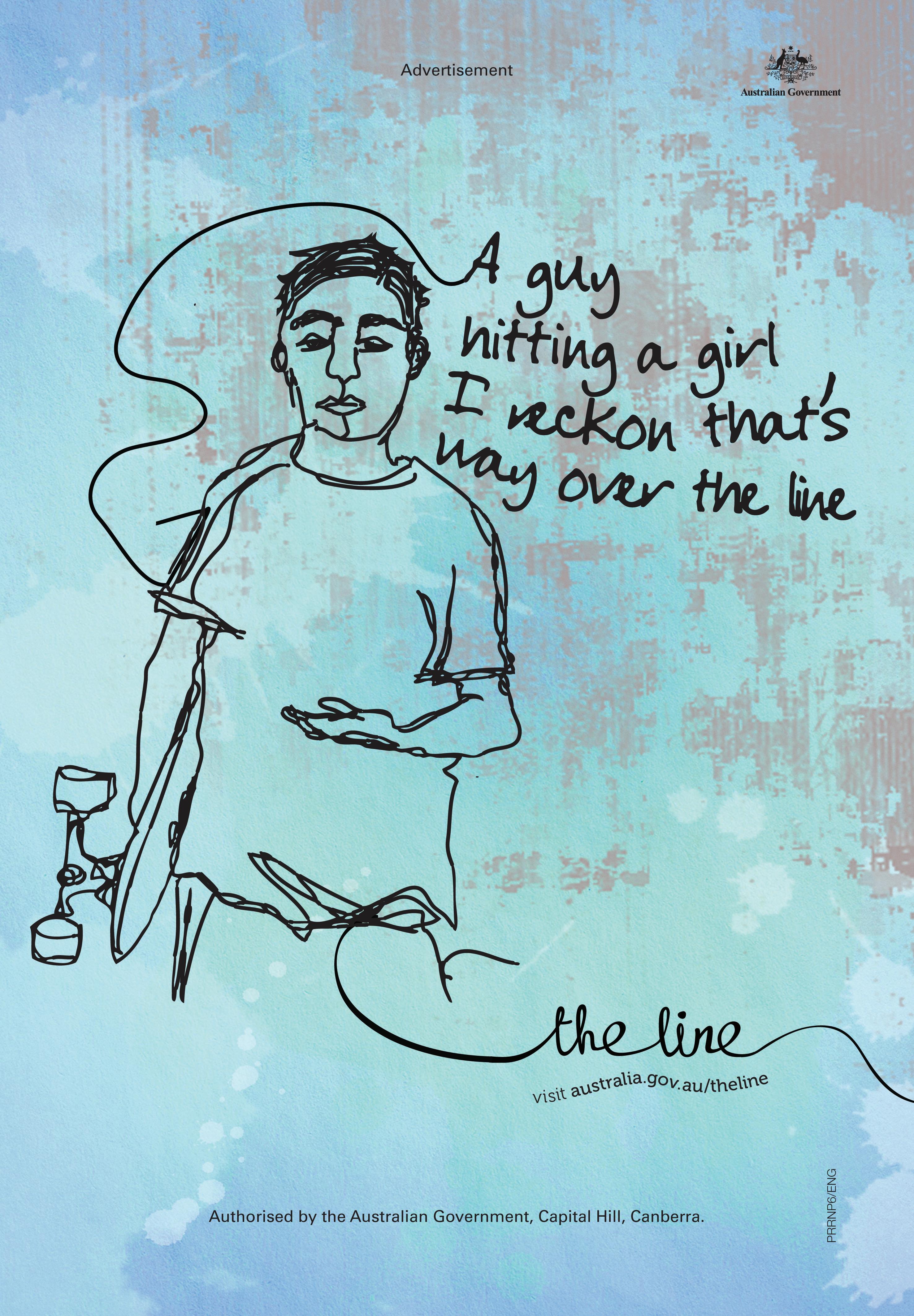
MAY 2011 <> 3 INDIAN LINK

4 <> MAY 2011 INDIAN LINK
INDIAN LINK
PUBLISHER
Pawan Luthra
EDITOR
Rajni Anand Luthra
ASSISTANT EDITOR
Sheryl Dixit
MELBOURNE
Preeti Jabbal
CONTRIBUTORS
Tim Blight, Neeru Thakur, Gaurav Pandey, Priyanka Tater, Roy Lange, Noel DeSouza, Sandip Hor, Chitra Sudarshan, Petra O’Neill, Geeta Khurana, Minal Khona, Saroja Srinivasan, L P Ayer, George Thakur, Nancy Sood, Farzana Shakir.
ADVERTISING MANAGER
Vivek Trivedi

02 9262 1766
ADVERTISING ASSISTANT
Drishya Sharma
02 9279 2004
GRAPHIC DESIGN AND LAYOUT
Kaye Martin
Indian Link is a fortnightly newspaper published in English. No material, including advertisements designed by Indian Link, maybe reproduced in part or in whole without the written consent of the editor. Opinions carried in Indian Link are those of the writers and not necessarily endorsed by Indian Link. All correspondence should be addressed to Indian Link
Level 24/44 Market St, Sydney 2000 or GPO Box 108, Sydney 2001
Ph: 02 9279-2004 Fax: 02 9279-2005
Email: info@indianlink.com.au

Will India harden its stance on terrorism?
The killing of Osama in Laden is being described as a tectonic shift in the plates of the fight against terrorism. It took the United States 10 years and USD 1.3 trillion to avenge the attacks of September 11, 2001, but they were clear in their objective of bringing Osama to justice. He masterminded a series of coordinated attacks on the US, and boasted publicly of killing over 3,000 people, including bringing down the iconic Twin Towers in New York. Osama had to be punished, and there was a bounty on his head of $25 million to get him dead or alive. Ten years passed before their objective was met and the message to the rest of the world is clear. The United States does not forget its enemies.
The entire saga however, does raise a number of issues. The first was the obvious relentless pursuit of the United States of its own personal interests - and the rest of the world be damned! They wanted Osama and got him, irrespective of any political fallout from other superpowers of the world – Russia, China, and the country in which they had their boots on the ground, Pakistan. Obama built a strong case for the United States when he said, “….and yet we know that the worst images are those that were unseen to the world. The empty seat at the dinner table. Children who were forced to grow up without their mother or their father. Parents who would never
BY PAWAN LUTHRA
know the feeling of their child’s embrace. Nearly 3,000 citizens taken from us, leaving a gaping hole in our hearts.” These words left no doubt that revenge would be sought.
President Obama has said that he is simply responding to the fact that the American people were victimised and “terrorism came to our shores and started with the senseless slaughter of our citizens.” He could well have been referring to the Mumbai attacks of 26/11 when the city of Mumbai and the country of India were brought to a standstill through the acts of terrorism!
The difference is that India seems to be in no hurry to avenge the murders on their shores, as the apprehended terrorist and his minders in Pakistan are still mocking their victims. There has been no justice for the Indian lives lost. Is Indian blood so cheap? Shouldn’t a final sentence be passed on Afsal and Kasak, and can’t India do the same with Dawood Ibrahim? –These men have mocked India for years and have got away with extreme acts of terrorism against the Indian people. Are the Indian government and its leaders too impotent to protect all things Indian?
The other issue that is being examined very closely and giving rise to all manner of speculation, is the connection between the proximity of Osama’s hiding place and the capital of Pakistan. President Obama was clear in his announcement to the world that this was a United States operation with no input from Pakistan. The Pakistanis have since been keen to get the word “we” included in their comments, but the US in not having any of that. If, as many suspect, it becomes clear that the Pakistani security services have been complicit in providing Osama bin Laden with the cover and patronage during his years on the run, relations between the US and Pakistan will doubtlessly sour. A country with a puppet Prime Minister backed by a strident army will be hard pressed to avoid the label of state-abetted terrorism. If the nexus between US and Pakistan changes, one suspects that China would step in to pick up any slack. China has often been accused of helping Pakistan build its military might, and will be keen to use this country bereft of any interference from the United States, to keep the Indian tiger at bay. The United States will be more inclined to work closely with India in this changing scenario. One is very aware of which way will Australia jump.
There have been tectonic shifts, yes, but will this cause a tsunami in the world of politics which will ride India’s way?
MAY 2011 <> 5 INDIAN LINK www.indianlink.com.au EDITORIAL
Aussie women cricketers head to India
Under-18 Female Talent camp, designed to put our best young talent through their paces with a view to setting up development programs for these players for next pre-season and in-season,” Richard said.
Seven Australian women cricketers, members of the Commonwealth Bank Southern Stars squad, will take part in a nine-day training camp at Global Cricket School in Pune, India from May 17 to 26.
The camp will provide the players with valuable experience in the sub-continental conditions ahead of three key series in the region over the next 18 months.
“I think it will be a good experience for the players. The wickets over there are slower and we’ll need to adapt our game to suit those wickets,” Rachael Haynes, one of the selected players, said.
Coach Richard McInnes and team Physiotherapist Claire Stokes will accompany the players. “The goals for this camp will be two-fold: batting against spin in spin friendly conditions and secondly, the ability to bowl on subcontinent wickets, for both our pace and spin bowlers,” Richard said. “This will be the first trip to India for
all of these players and is part of the reason they have been selected to attend.”
The tour underlines ongoing efforts on part of Cricket Australia and AIS to improve women’s cricket in the country. “We have a strong focus on becoming better at playing spin, as women’s cricket in all formats is heavily influenced by slow bowlers. There is no better place to learn how to play spin than in India” Richard said, adding “Ideally, we will look to conduct this trip annually to assist in our player development programs.”
Cricket Australia and the AIS jointly run the female cricket program in Australia which involves series of training camps at the Centre of Excellence (CoE) in Brisbane, overseas trips and also state visits by national coaching staff and CoE specialist coaches to assist in developing players and coaches around the country.
“The AIS also recently hosted the National
Indian consulate for Perth
The Government of India has approved the opening of a Consulate General of India in Perth, WA.
The Consulate General will be headed by a Consul General, who will be of the rank of Joint Secretary to the Government of India and will cover Western Australia (WA) and Northern Territory (NT).
The need for a formal Indian diplomatic presence in Perth has been long felt, in view of the strategic importance of Western Australia from the political, economic and defence viewpoint and its important location with
respect to sea-lanes in the Indian Ocean.
The establishment of a Consulate General of India in Perth will also immensely benefit the growing Indian community in Western Australia. A large Indian community of approximately 40,000-45,000 resides in WA (about 10% of the Indian community in Australia), which is growing faster than in any other state in the country. There are also estimated to be about 8,000 Indian students in WA and NT. The demand for consular services from this area has thus increased significantly in recent years.
Additionally, the AIS assists with the men’s scholarship program, run at the CoE during the Australian winter.

Acting AIS Director Phil Borgeaud, in a press release said that he was extremely proud of the AIS program’s role in the development of men and women’s cricket.
“Watching young cricketers develop and reach new heights is very exciting, and to know that the Australian Institute of Sport has played a major part in that development is a tremendous reflection of the program’s success.”
The players who have been chosen for the tour are: Rachael Haynes, Meg Lanning, Jess Cameron and Annie Maloney from Victoria; Sarah Coyte from New South Wales; Jessica Jonassen from Queensland, and Rene Farrell from Western Australia.
The Consulate General will also be responsible for issuing visas for India in respect of applications received from WA/NT.
An important aspect of the Consulate General’s work will relate to promotion of economic, trade and investment relations between India and WA and NT. WA accounted for 55.70% of Australia’s total exports to India in 2009-10; exports from WA in this period were A$ 8.6 billion out of total Australian exports to India of A$ 15.4 billion. Indian investment has also been growing significantly in WA in recent months.
The Perth Consulate is expected to become fully functional in the next few months.
Attack on Auburn Temple alarming
It was really depressing to read that the Auburn Hindu temple was sprayed with bullets by goons who hid behind masks. It is true as Pawan Luthra quoted that different religions coexist peacefully in India. Growing up in Mumbai there was a Hindu temple behind our block of flats, on the right was a Catholic church, a little ahead was a Mosque and towards the left was an Agyari (Parsi temple). Never have I heard or seen anyone entering these premises to vandalise these places of worship. Let’s hope that the authorities catch the culprits. Children should be taught at a very young age to respect all religions regardless of what religion they belong to.
Premila Singh Strathfield NSW
6 <> MAY 2011 INDIAN LINK
S
Seven members of Southern Stars squad will participate in a training camp in Pune
Gaurav Pandey

MAY 2011 <> 7 INDIAN LINK
Adelaide hosts Sikh Games
Galli Patowala and Jaskarn Golia are keen kabaddi players. They have been competing in this traditional wrestling-like sport for many years now. Their team – Singh Sabha Sports Club, Melbourne.
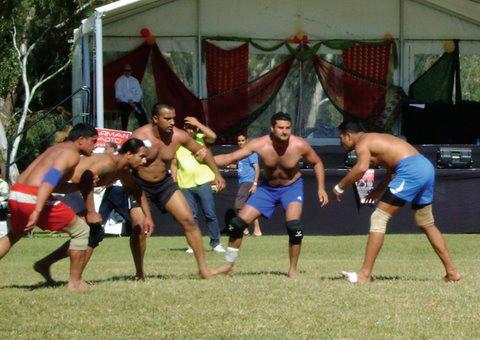
At Easter this year, they led their team at a unique annual sports meet. All the other athletes at this meet were, like them, of Punjabi background.
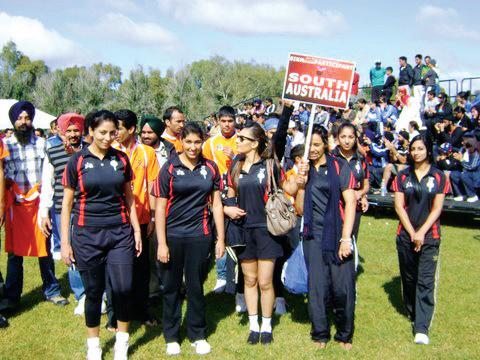
And there were no less than 1100 of them.
They came not only from all over Australia, but also from Malaysia and New Zealand. Their families traveled with them, and made up an audience of over 6000.
The event – the 24th Annual Australian Sikh Games, held at Adelaide, SA.

While the rest of the community takes a hard-earned break at Easter every year, the Sikhs in Australia organise a national-level sports tournament.

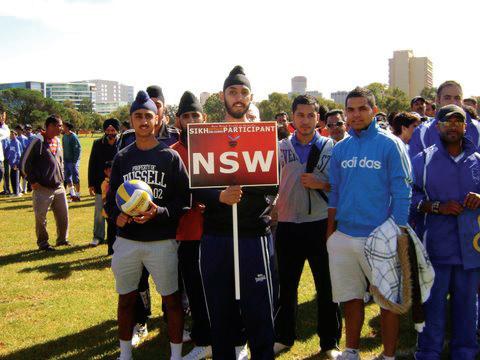
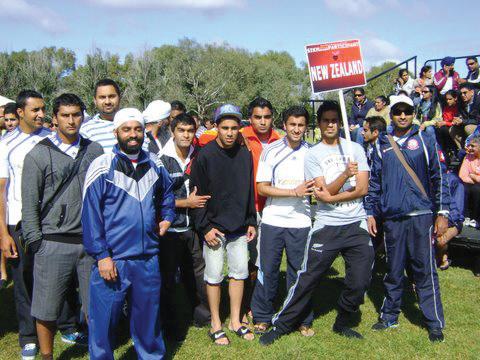
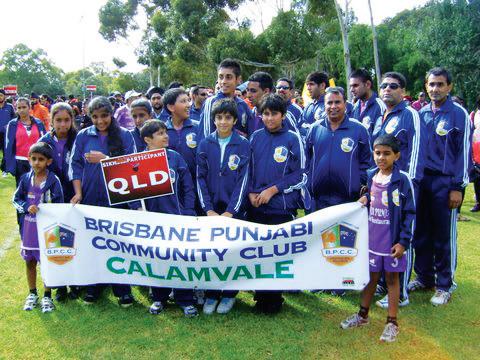
History
It all began right here in Adelaide, in 1986, when a bunch of hockey-mad Sikhs decided to host a friendly tournament in the Easter holidays between the Adelaide Sikhs and the Port Augusta Hockey Club. The hockey was fantastic, and the bhangra and the partying afterwards so much fun, that they decided to make it an annual affair. Two years later in the Bicentenary Year, the decision was made to invite other hockey teams from interstate. A Melbourne hockey team won that year, and decided to host the event the following year.
An annual tradition had begun. Soon more events were added, and teams began to come from Malaysia, Singapore, NZ, Fiji, and occasionally even the UK and USA.
The 2011 Games
The 2011 Games were organised by the president of the Guru Nanak society of Australia Mr Mahanbir Singh Grewal. Mintu Brar (President, Punjabi Cultural Association South Australia) was in charge of operations.

“This year we had competition in the sports of cricket, hockey, soccer, kabaddi, tennis, netball, volleyball and athletics,” he told Indian Link. “Golf unfortunately had to be abandoned due to inclement weather half way through. A new event this year was soccer for the over-45 age group, which Brisbane won”.
The games were all played at the grounds of the Hockey Club of Adelaide and the Pulteney Grammar School at South Terrace.
An Adelaide boy through and through, Mintu revealed proudly that visitors proclaimed the venues the best ever in the Sikh Games. “They couldn’t believe that we have such lush green grounds in the heart of the city!”
Barar and his organising committee started the Games off in traditional Sikh style in which teams paid obeisance to the saffron-coloured flags of the Sikh tradition and marched under banners to the beat of the dhol. “At the same time Australia’s national anthem was sung as well, and then followed by the
Indian national anthem in the presence of SA Premier Mr. Mike Rann and his wife Mrs. Sasha Rann, and the multicultural minister Ms. Grace Protolesi”.
This year, the organizing committee have received valuable sponsorship from community members such as the Grewal Brothers of Mildura Victoria, well-known badam growers and producers of Golden Brand atta. (They won the crowds over with their generous presents of 5 kg almond packs to all winners and 2 kg packs for runners-up). As well, Mr Mike Rann announced a government contribution of $20,000 cash and the same amount in kind.
“Apart from all the action on the field, we also had cultural events,” Brar revealed. “We had a Sikh forum which discussed the Sikh religious issues. The Punjabi Cultural Association of South Australia discussed language issues, and organized a Punjabi art gallery. We also had cultural nights, a disco night for the kids, and the much-awaited dinner-dance event. This time round, we even had a book launch!”
An added attraction was the presence of film star Jimmy Shergill, who came to launch his new film Dharti
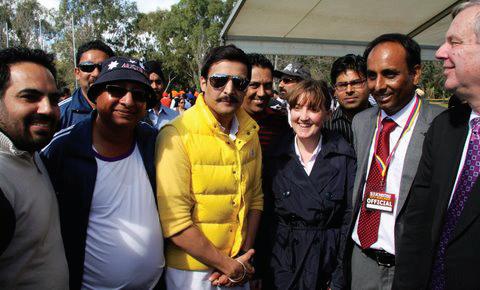
And how did the star kabbadi players Patowala and Golia finish up? They bagged the Best Raider and Best Stopper awards respectively. But it was NZ hockey player Amit Bhargava who took home the Player of the Tournament Award this year.
Rajni Anand Luthra
8 <> MAY 2011 INDIAN LINK AUSTRALIAWIDE
Results
Kabaddi
1st: Singh Sabha Sports Club, Melbourne
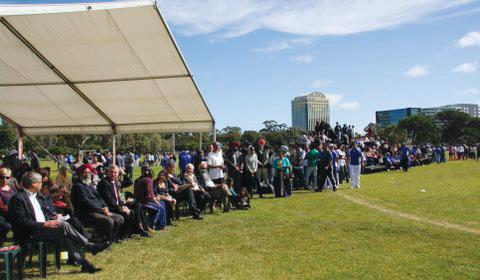
2nd: Punjabi Sports Club, Melbourne
Hockey
1st: SCSAS, Sydney


2nd: Kalgidhar Lions, New Zealand

Tennis
Singles:
Winner: Sukraj Singh (Shane) from Punjab Warriors Sports & Cultural Club, Melbourne
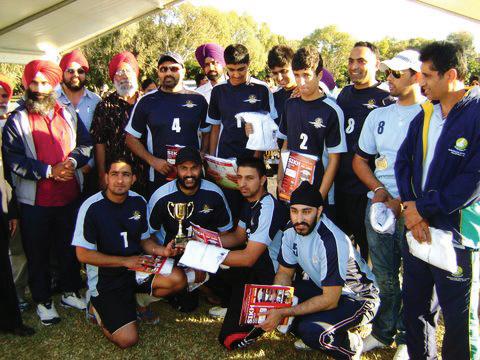
Runner Up: Prabjeet Singh from Punjab Warriors Sports & Cultural Club, Melbourne
Doubles:
Winner: Prabjeet Singh & Sukraj Singh from Punjab Warriors Sports & Cultural Club, Melbourne
Runner Up: Bray & Dilsher Singh from Penola
Netball
1st: Sydney Sikhs Netball Team, Sydney
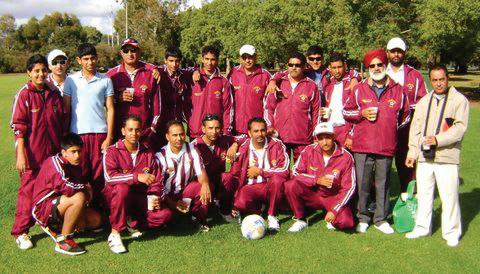


2nd: Perth
Soccer (Seniors)
Division 1
1st: Khalsa Lions Club, Melbourne
2nd: Sikh Unite, Brisbane
Division 2
1st: Western Sydney
2nd: Punjab Lions, Adelaide
Soccer (Juniors)
1st: Melbourne Khalsa Club, Melbourne
2nd: Brisbane
Volleyball
1st: Sydney
2nd: Melbourne
Athletics
5-10 yrs Boys (50 metres)
1st: Romanpreet Singh
2nd: Dilraj Singh
3rd: Arman Singh & Davinder Singh
11-15 yrs Boys (100 metres)
1st: Arshdeep Singh
2nd: Jashanpreet Singh
3rd: Takhat Gill
Above 15 yrs Boys (100 metres)
1st: Harmanjot Singh
2nd: Gagandeep Singh
3rd: Bhupinder Singh
5-10 yrs Girls (50 metres)

1st: Navleen Kaur
2nd: Jasmine Kaur
3rd: Avneet Kaur
11-15 yrs Girls (100 metres)
1st: Simran Kaur
2nd: Amrita Singh
3rd: Jasmeet Kaur
MAY 2011 <> 9 INDIAN LINK www.indianlink.com.au
Future initiatives set at FIAV’s AGM
The Federation of Indian Associations of Victoria (FIAV) held its Annual General Meeting outside Melbourne for the first time, in the rural city of Traralgon on April 30. Attended by major community figures and hosted by the Latrobe Indian Association and Traralgon Indian community, the conference reviewed FIAV’s achievements over the past year, elected the executive committee and set out goals for the year ahead. The AGM was followed by an inclusive cultural presentation by talented members of the Latrobe Valley Indian Community.

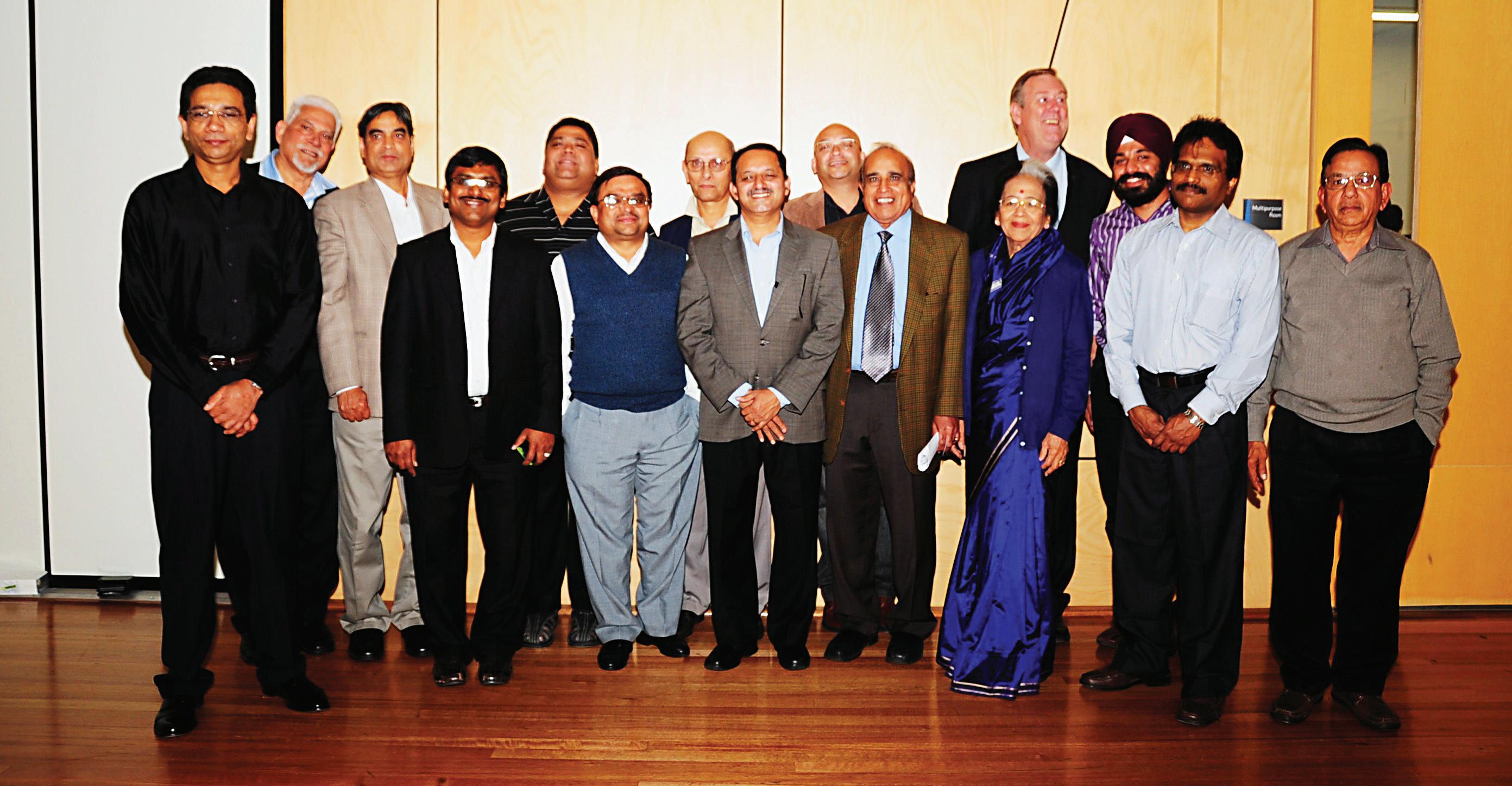
Key announcements included plans to establish an Indian community centre to serve the community in Victoria, the establishment of full time staff for FIAV and an exciting proposal for a Little India project, akin to that of Singapore or London’s Indian precincts. Additionally, FIAV discussed the possibility of relocating their office to better serve the Victorian Indian community, and the future of the organisation’s newspaper. FIAV President Mr Vasan Srinivasan welcomed attendees, while extending a special welcome to representatives Mr Rajiv Chowdrey of the Rajasthani Kutumb and Mrs Anjali Tikoo of the Kashmiri Pandit Cultural Association, who joined FIAV in the past twelve months. Also present were Savita Soni of SBS Radio and Goldy Brar, Electoral Officer for the Northern Metropolitan Minister for Planning.
At the AGM, much of the discussion of the community centre was based on former Victorian Premier John Brumby’s announcement of a $70,000 funding boost for a study into a cultural hub in the city of Manningham in Melbourne’s eastern suburbs. Despite the change in government late last year, the project remains in progress with a shared Indian, Chinese and Iranian precinct on the agenda. A full-fledged integrated cultural centre is also being planned, with council members meeting on soon to decide on a land parcel for the community hub. Additionally, FIAV is involved in an Indian-oriented aged care project in the city of Dandenong.
Dandenong would also be the centre of a proposed Little India precinct for which FIAV is currently lobbying at all levels of government. Victorian Minister for Multicultural affairs Nick Kotsiras recently visited Dandenong to speak with shop owners who have formed their own committee.
Aided by FIAV, the Victoria India Business Council is now working alongside Indians in Dandenong to promote the establishment of the cultural zone.
Hosting the event, Vasan Srinivasan pledged that the Federation is not a competing entity but rather a supportive organization to facilitate Indian community relations in the state of Victoria. Demonstrating this, FIAV sponsored $5000 towards the inaugural Federation of Indian Music and Dance Victoria event last August. Pledging his support to the Indian community in the Latrobe Valley, Mr Srinivasan mentioned several examples of FIAV’s contribution to the local Indian community over its past 800 days of existence.
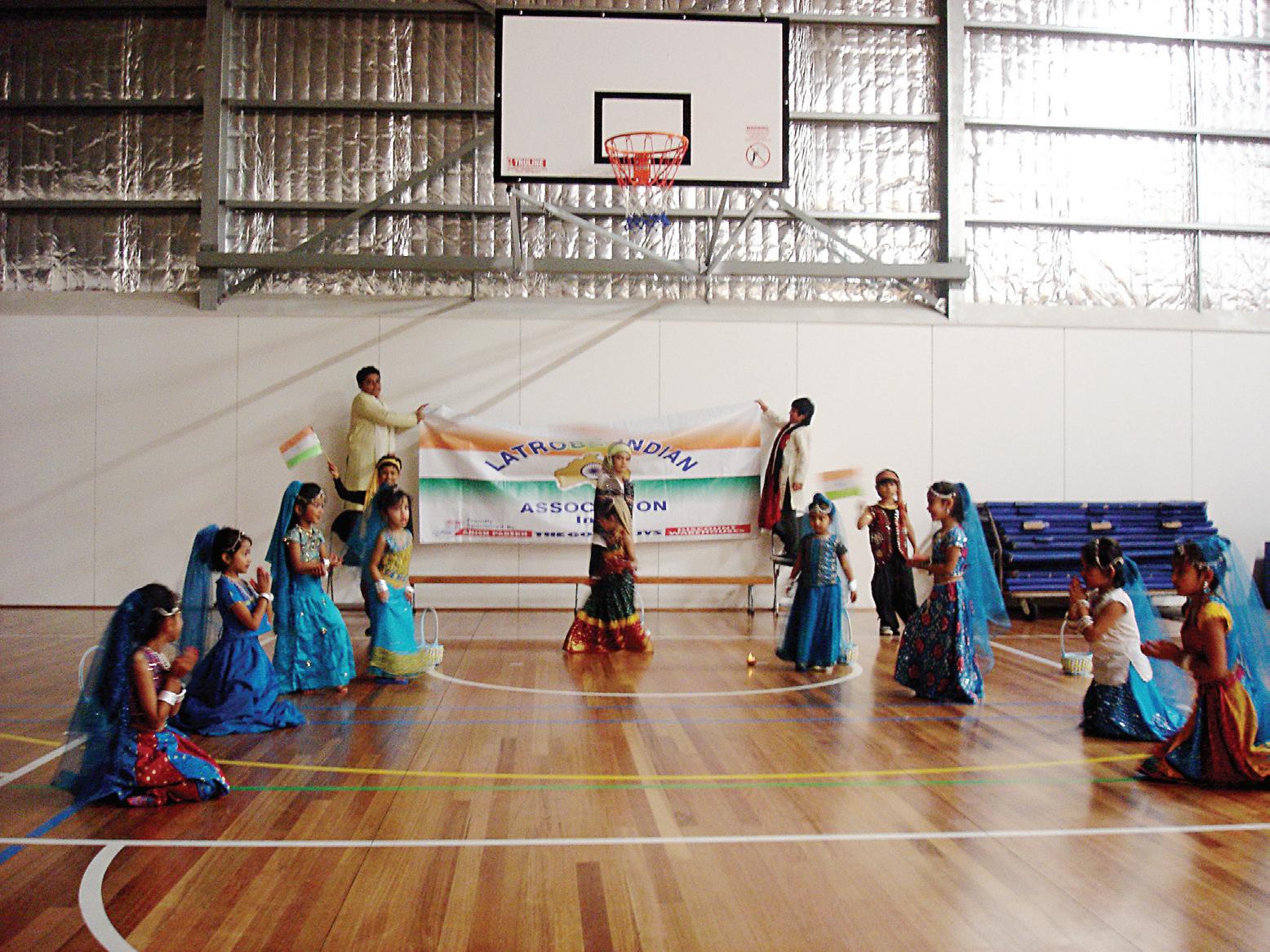
Underlining FIAV’s pivotal role in the community, it aims to establish Indian Community Legal Services in the future to complement their domestic violence helpline service. A review of the domestic violence action panel shows nineteen cases from both genders dealt with, and a panel of psychologists, community workers, senior Indian
community leaders and lawyers was established. Four victims of domestic violence were assisted with obtaining Australian residency. Other victims of violence have been aided, with FIAV playing a key role assisting the family of murdered toddler Gurshan Singh as well as other, lower profile cases. Humanitarian contributions also included the Pakistani Flood Appeal in the inner Melbourne suburb of Collingwood in October 2010.
FIAV has also conducted TV, radio, online and podcast interviews in the past year, along with press conferences and over 150,000 emails to community and government organizations to promote the Indian community in Victoria. FIAV also played a part in last year’s announcement that Air India would begin direct services to Melbourne from the Indian capital. Thanking the members of the FIAV committee, Mr Srinivasan also extended particular gratitude to Indian Consul General Anita Nayar, Tandoori Junction for their support, FIAV’s official photographer Mr A P Guruswamy, Dr Sayyad and Dr Ravi of the Barathma Trust and Indian Link, among other community figures. Additionally, the Deakin Nursing Students Union expressed thanks to FIAV for lobbying the federal government after changes to education assessment law threatened to render their qualifications invalid.
Among other achievements of Victoria’s Indian community were the establishment of a temple project at Mill Park in Melbourne’s northeast; the graduation of Victoria Police’s first turban-wearing Sikh police officer; and the establishment of Malayalam, Telegu, Tamil and Sanskrit language classes in Melbourne, with a mention of Hindi Niketan’s Dr Sharad Gupta possibly inaugurating Hindi language classes in conjunction with the Federation. FIAV was also instrumental in Mrs Krishna Arora being awarded the prestigious Shilling Wall Tribute Certificate,
acknowledging the achievements of Victorian women. Mrs Arora is the first woman of Indian descent to be awarded this respected title.
The AGM concluded with the election of the Committee, with Councilor Phillip Dow returning as election officer. Mr Vasan Srinivasan was re-elected as President; Mr Thomas Joseph as Vice-President; Mr Subra Ramachandran as Secretary and Mr Andrew Mendes as Assistant Treasurer. Dr Sharad Gupta was elected as Vice President - Community Services; Mr Hemant Amin as Treasurer and Mr Gurpreet Tuteja as Assistant Treasurer. Retiring treasurer Harish Kumar’s was specially thanked for his hard work and support to FIAV. La Trobe Association families then treated visitors to an hour of dance, singing, theatre performances and prayer before dinner was served. Many of the attendees had travelled by chartered bus from FIAV’s Dandenong office, and were returned to the metropolitan area after dinner.
Upcoming FIAV events include a community consultation on August 7, the second FIMDV Dance Festival on August 13 and the Indian Independence Day dinner on August 14, to which both Prime Minister Julia Gillard and Victorian premier Ted Baillieu have been invited. Diwali celebrations, as always, are planned for the festival of lights in October. For more information, visit fiav.asn.au. FIAV is currently seeking volunteers to assist with emails and administrative matters, please contact operations@fiav.asn.au, if interested. For information regarding FIAV’s successful domestic violence reach-out service, please contact 1800 342 800.
Tim Blight
10 <> MAY 2011 INDIAN LINK
www.indianlink.com.au COMMUNITYSCENE
The newly elected FIAV committee
Mr Vasam Srinivasan speaks at the FIAV AGM
Latrobe Indian Association’s cultural performance
Learning about leadership at Balagokulam
The fifth Balagokulam event was once again a great success, with April’s theme being leadership from the Mahabharata. Balagokulam is a great program for children of all ages who wish to learn more about India’s culture, while enjoying spending time together. The whole purpose of Balagokulam is to develop well-rounded personalities by imparting ethical values to young children. In the April event children were taught about leadership, an essential life-skill that everyone requires in daily life.
An important aspect of good leadership is the ability to work and relate with others, and that needs to be incorporated as early as possible. Stories of legendary heroes from the Mahabharata sparked the children’s interest in Hindu culture and heritage to the extent that they asked their parents many intriguing questions about the stories they heard at Balagokulam. This is obviously a testament of the lasting impression the organisation has on the tender minds of children.
At the event, the 2-5 years age group were occupied with two main activities, cutting and colouring in the flag of India, followed by a story-telling session. Balagokulam has the theme of the Mahabharata running through all its sessions this year. Leadership qualities were illustrated via stories of Sri Krishna and Abhimanyu, and the children were asked which of these heroes they were inspired by the most, and why. Despite the young age group, it proved to be a very engaging activity for them.
The 6-9 years age group were stimulated by story-telling from the Mahabharata, with

a discussion of the different definitions and qualities of a leader. This was followed by learning the Devanagri script, the alphabet of which forms the basis of many Indian languages including Sanskrit, Hindi, Marathi and many more.
The 10 and above age group were involved with leadership-orientated games –mainly via sports, followed by an intellectual discussion about the theme and how they exemplify it in their lives.
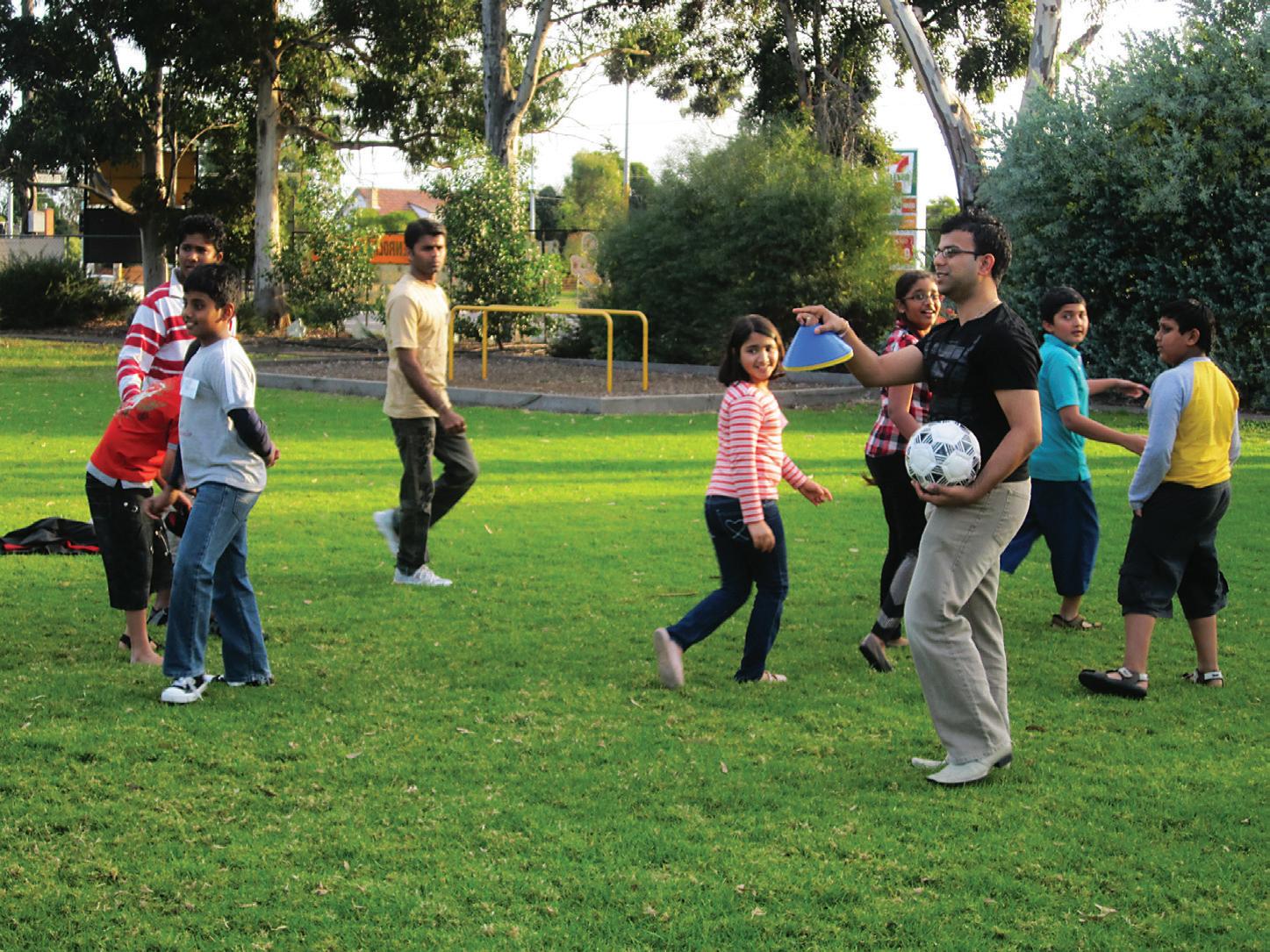
The above structure of Balagokulam which has been consistent for the past 5 sessions, seems to attract a constant, but more importantly, enthusiastic group of children and parents who appreciate the importance of learning and applying the values of Hindu culture within the setting of our great Australian society. After all, these universal values are consistent with the ultimate objective of ‘Vasudaiva Kutumbakam – the whole world is one family.’
Last but not the least, the parents enjoyed a yoga session conducted by Shri Kuldeep Bhagat, a qualified teacher from Patanjali with over a decade’s experience in the field. Yoga has been a big success among parents, to the extent that a free weekly session has been organised every Sunday morning for an hour at Clayton South Primary School. For more information, please contact Jay Nair at 0434315953 or Vikrant Thakur at 0409174714.
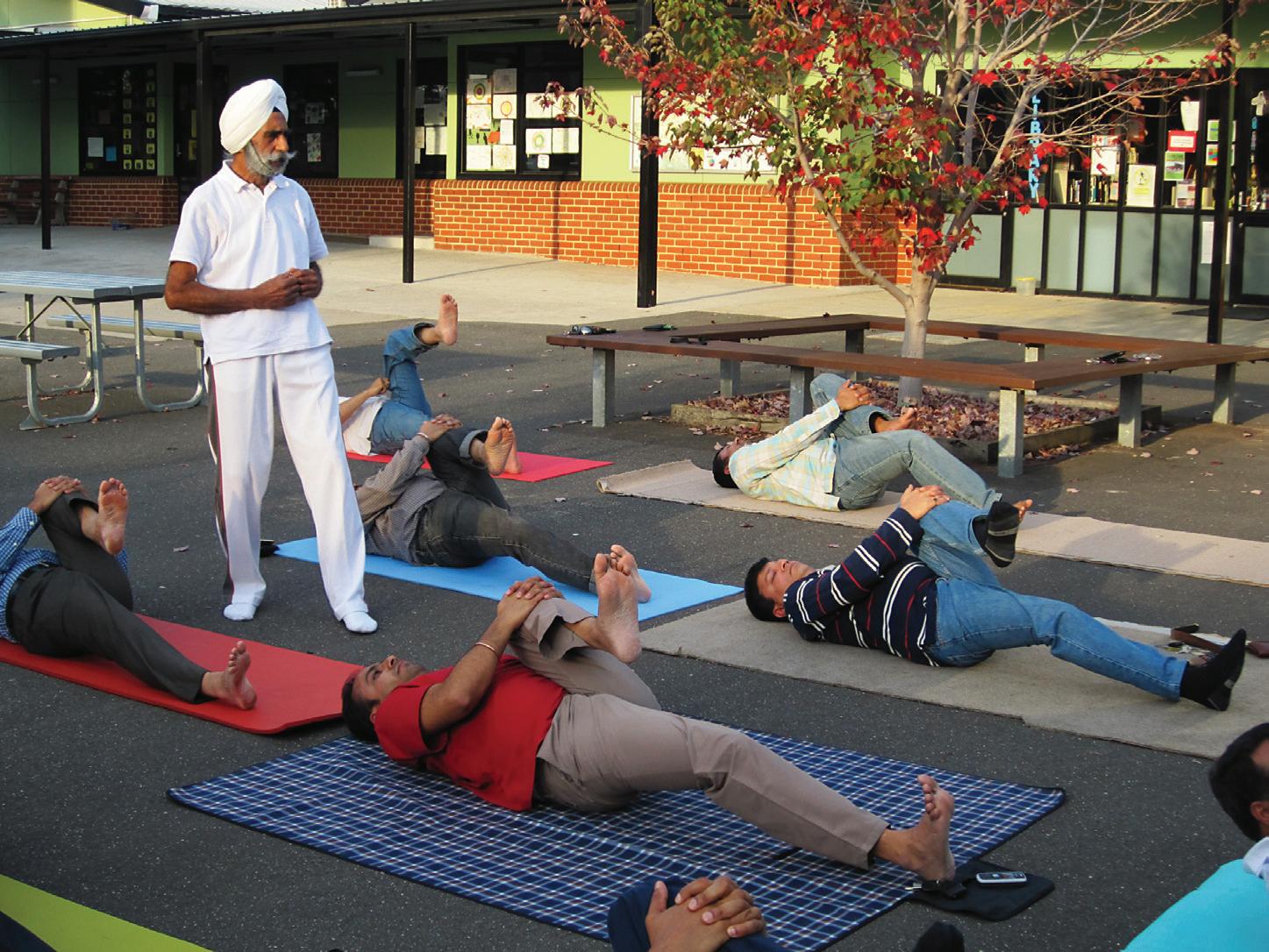
MAY 2011 <> 11 INDIAN LINK COMMUNITYSCENE
www.indianlink.com.au
Neeru Thakur
Building bridges through music
BY GAURAV PANDEY
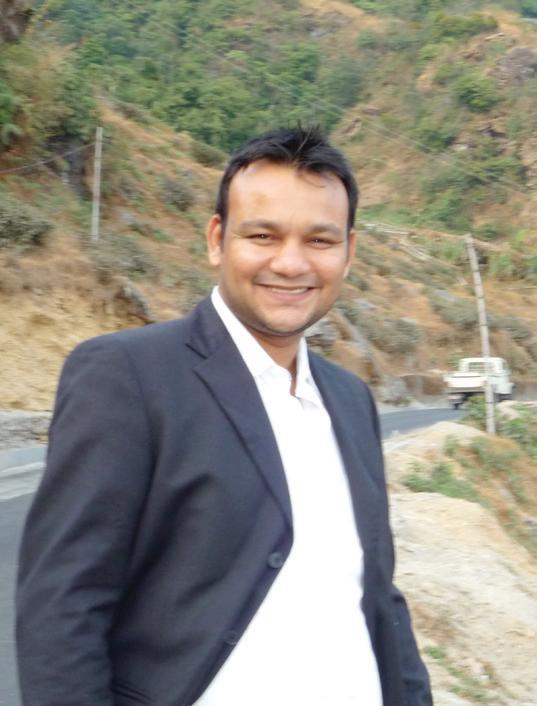
For a long time, a small section of Australian musicians have been working to spread awareness of Indian classical music in the country. Many of them began with an inspiration that fuelled a lifetime’s passion and their journeys highlight - even savour - the importance of a quality less evident in this age of instant gratification: perseverance.
Indian classical music is one of the more popular non-Western classical music traditions. Its students go through many years of training, often under the watchful eyes of a guru, before they find their authentic voice. The credit for preserving India’s ancient music and its culturally exotic image must also go to the numerous musicians who have been performing and teaching tirelessly for years.
Propounding the classical
Among the Australian practitioners of Indian classical music, Adrian McNeil is perhaps the most recognised name. His instrument of choice – the sarod – is not easy to master, but Adrian’s discipline and effort have made him a worthy exponent.
His current role is that of Director of Higher Degree Research and Convenor of Improvisation Program at Macquarie University’s Department of Media, Music and Cultural Studies.
Adrian has undergone intensive training in Indian classical music from leading musicians for more than two decades in India. Apart from regular performances in Australia and abroad, he spends a fair bit of time in academic activities. He writes on the social and cultural history of Indian classical music, the political economy of music and improvisation in music, and has authored a much-acclaimed book on the sarod, Inventing the Sarod: A Cultural History
Adrian has a PhD in ethnomusicology and has been teaching music for many years. His own music education, though, happened under the guru shishya parampara . In an interview to Indian Link in 2007, Adrian had expressed his admiration for the tradition: “It seems that some forms of knowledge are best preserved and taught according to this method. Classical music is still very much organised around the workings of this institution and till date, it is still recognised as the best way of gaining the proper knowledge and skills to become a professional musician.”
Through his music, writings and teaching, Adrian is striving to ensure the coming generations are not deprived of the beauty of the intense notes of the sarod.
Sensational sitarist
Another Australian string instrumentalist who embodies the richness of Indian classical music is Josh Bennett. “For some reason, when I heard Indian music it excited me, and I wanted to understand it and immerse myself in it. But why Indian music touched me in particular is a mystery,” said the accomplished
sitar and dilruba player whose “main musical outlet” is through string instruments – an affair that is more than 20 years old.

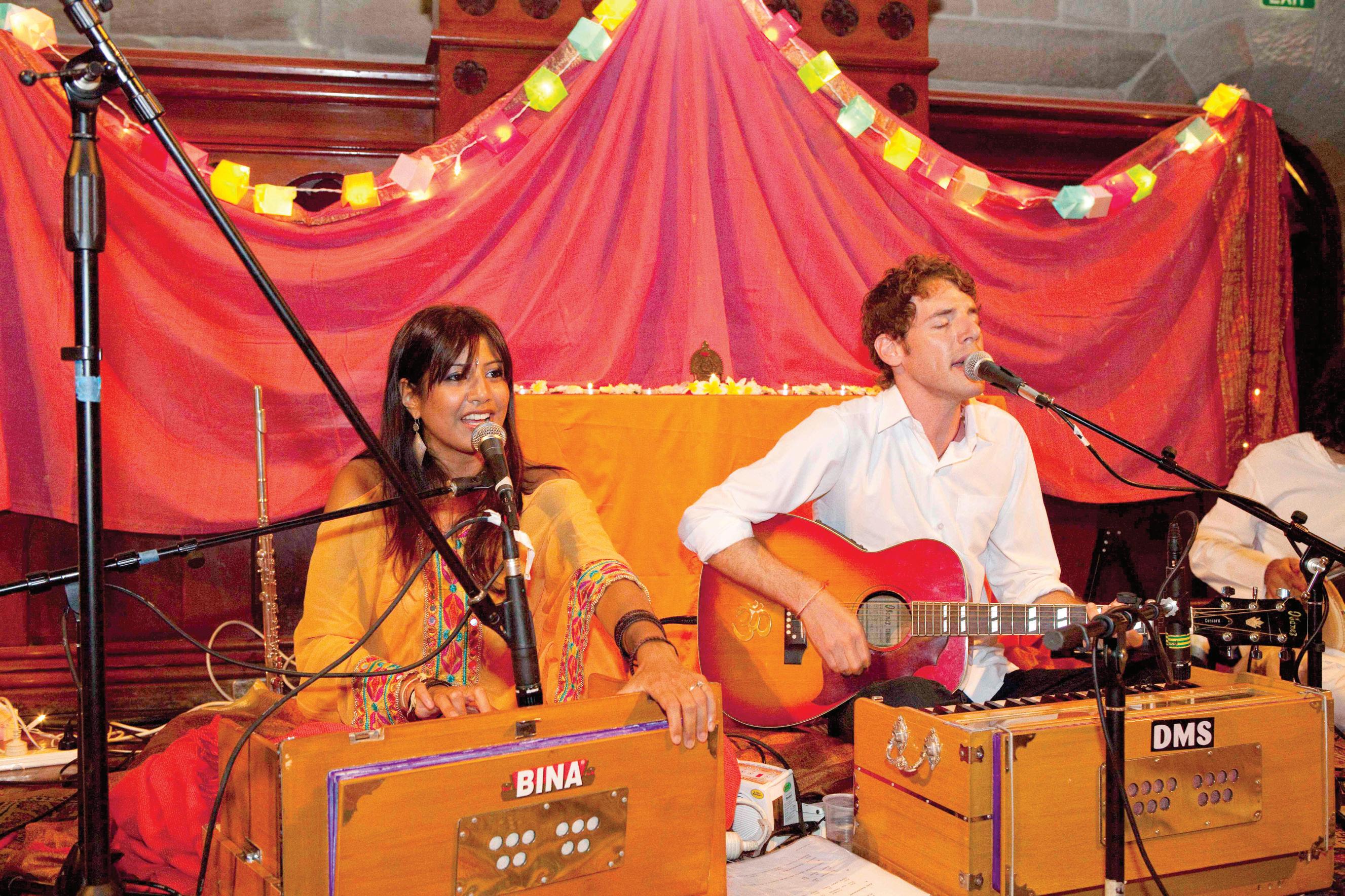
Being a left-hander brings with it a curious set of issues. His instruments, for instance, are either made specially or found by chance. The dilruba is an example of the latter: “I was in a music store in London, and asked the shop-keeper if he had any left-handed sitars. He didn’t, but he pulled out a left-handed dilruba that was in the corner gathering dust,” revealed Josh. He’d never heard of the dilruba before, he recalled, but “recognised it immediately” when the storekeeper demonstrated its sound. “The rest is history.” His journey, like that of many who choose to follow their passion in life, has not been a straightforward one. “Like any classical form, Indian classical music requires dedication, persistence and tens of thousands of hours of practice, which can be a challenge living in Australia where one is surrounded by a culture of fast-food and three-minute pop tunes,” said Josh.
Many of the problems faced by international musicians wanting to learn Indian classical music have begun to ease to a certain extent with more accessible international travel, video and audio recordings, and resources such as the internet. However, beyond the basic familiarity, Josh said, “You need a teacher to pass on the intricacies and subtle nuances that are almost impossible to assimilate otherwise.” He added that he had been “extremely fortunate to have a guru who has such a wealth of knowledge and is willing to pass that knowledge on to
12 <> MAY 2011 INDIAN LINK
“(Indian classical music) is not just about learning an instrument: it is an approach to life, a philosophy and requires so much time and dedication to progress.”
Edo Kahn
2 1 INDOPHILE
whoever has the passion to learn it.”
At the end of the day, Josh seems content with what destiny has offered him. “It is a blessed life to be able to spend my time making people happy by playing music, and without people to play for, there would be little point. I particularly enjoy exposing audiences to music that they may not otherwise come across, and present it in a way they can understand and relate to,” he said.
These days Josh is busy practicing hard on the sitar in preparation for the National Folk Festival in Canberra. He regularly performs within Australia and internationally, and is also a part of “a 60s/70s Bollywood big-band” called Bombay Royale . “Due to my familiarity with both western and Indian music, I can act as a bridge between them - like a musical translator,” he said. “My goal is it to be performing music for as many people as possible, and for as long as I’m still breathing!”

A spiritual rejuvenation
Passion can hardly be objectively defined and, in many cases, the music itself is only a sub-set of a larger, more meaningful purpose. The journey of Edo Kahn and Jo Mall, popularly known as ‘Edo and Jo’, is a fine example of this.
They have spent considerable time in the service of music and humanity and are popular among many Australians for their kirtans ; Edo has been working as a musician and a music therapist in the
area of disabilities and aged care over the last 12 years, for the past 3 years with his partner Jo.
They live in India half of the year and are actively involved in volunteering, learning and teaching music and yoga at many Indian villages and orphanages.
“We have embarked on the path of music as a means of expressing, experiencing and sharing divine love,” Edo said.
“The first time a friend gave me a recording of the chant Om Namo Narayani , I had it on repeat on my ipod for a year, it is like a lullaby for my soul,” Edo recalled.
Their story is no different from that of many who have been drawn to India as much for its culture, as the music. The experience was intense for Edo: “I went to India on a spiritual search and I knew I would not be coming back the same person. It was a rebirth. And it gets deeper and deeper the more I dive into it.”
Edo journeyed extensively through India where he was exposed to “sounds that bring peace to the soul and connect us to the divine” and has been learning mantras , classical Indian music and sacred sounds from Nature.
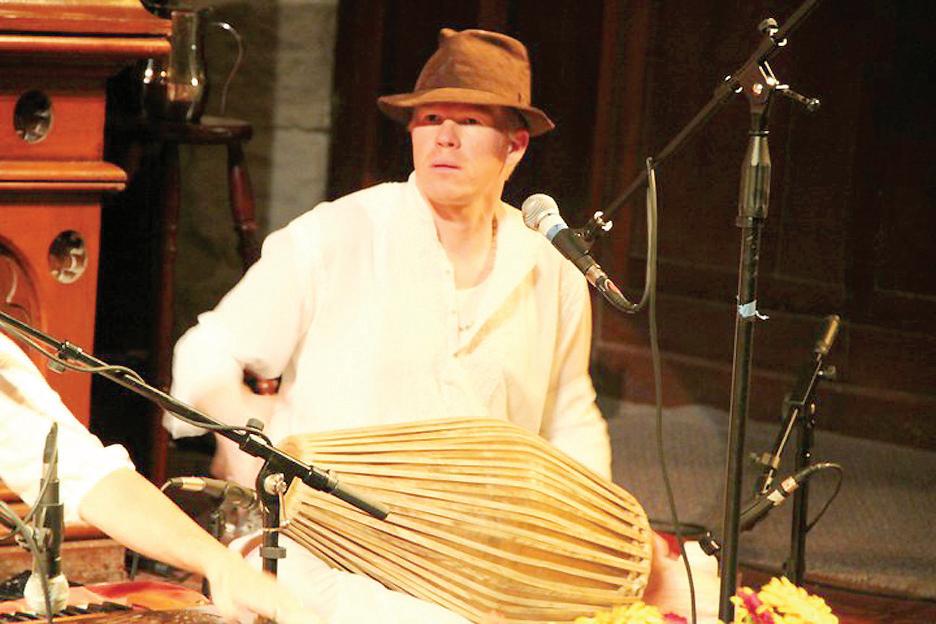
Jo first visited India three years ago and saw her two day trip turn into 6 months! She has been returning to India every year since to delve deeper into her yogic and music studies. “I felt unconditional love and joy, and every trip to India uncovers more love,” she said.
“Indian classical music is so vast, transcendental and deep. It is not just
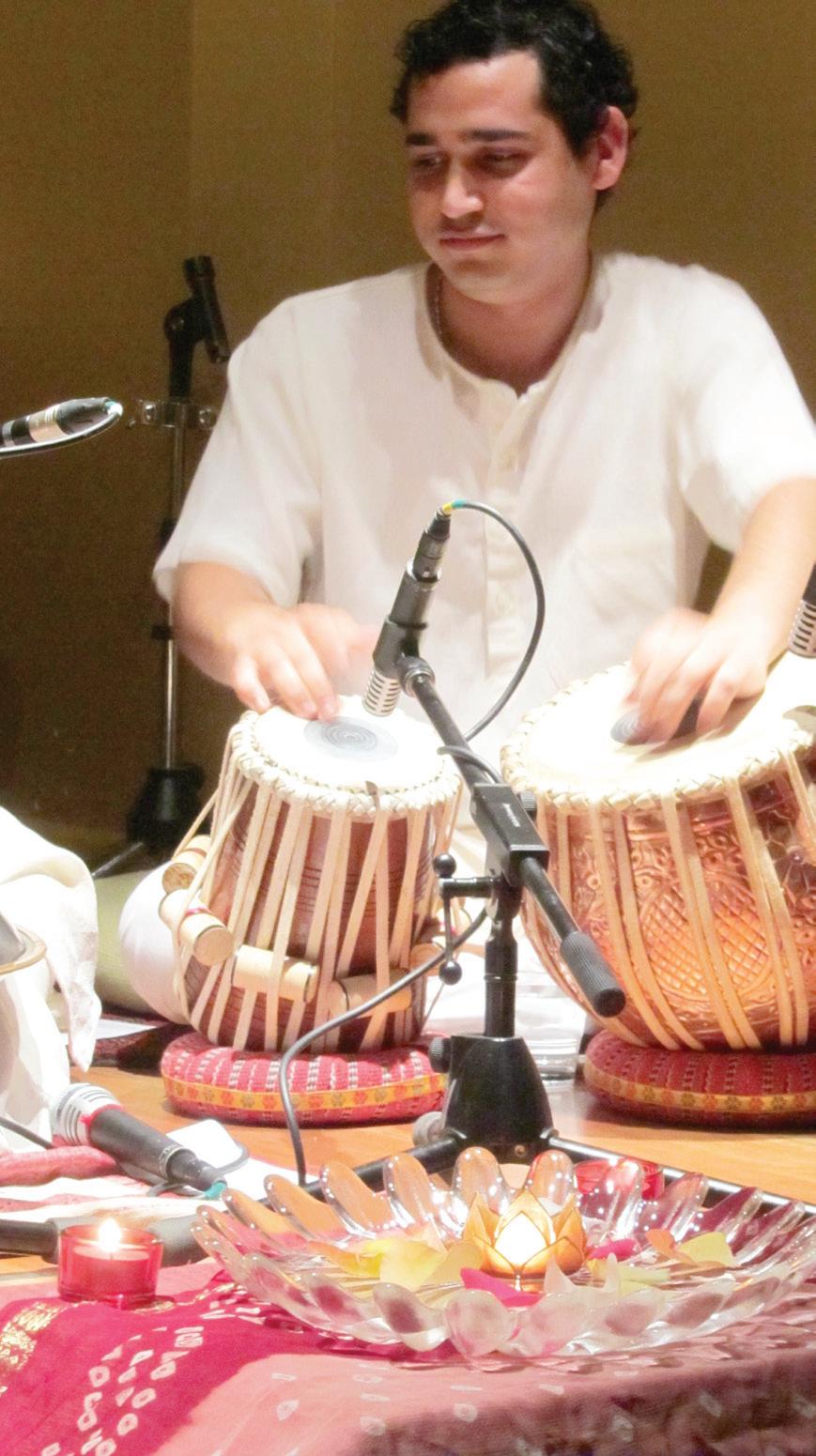
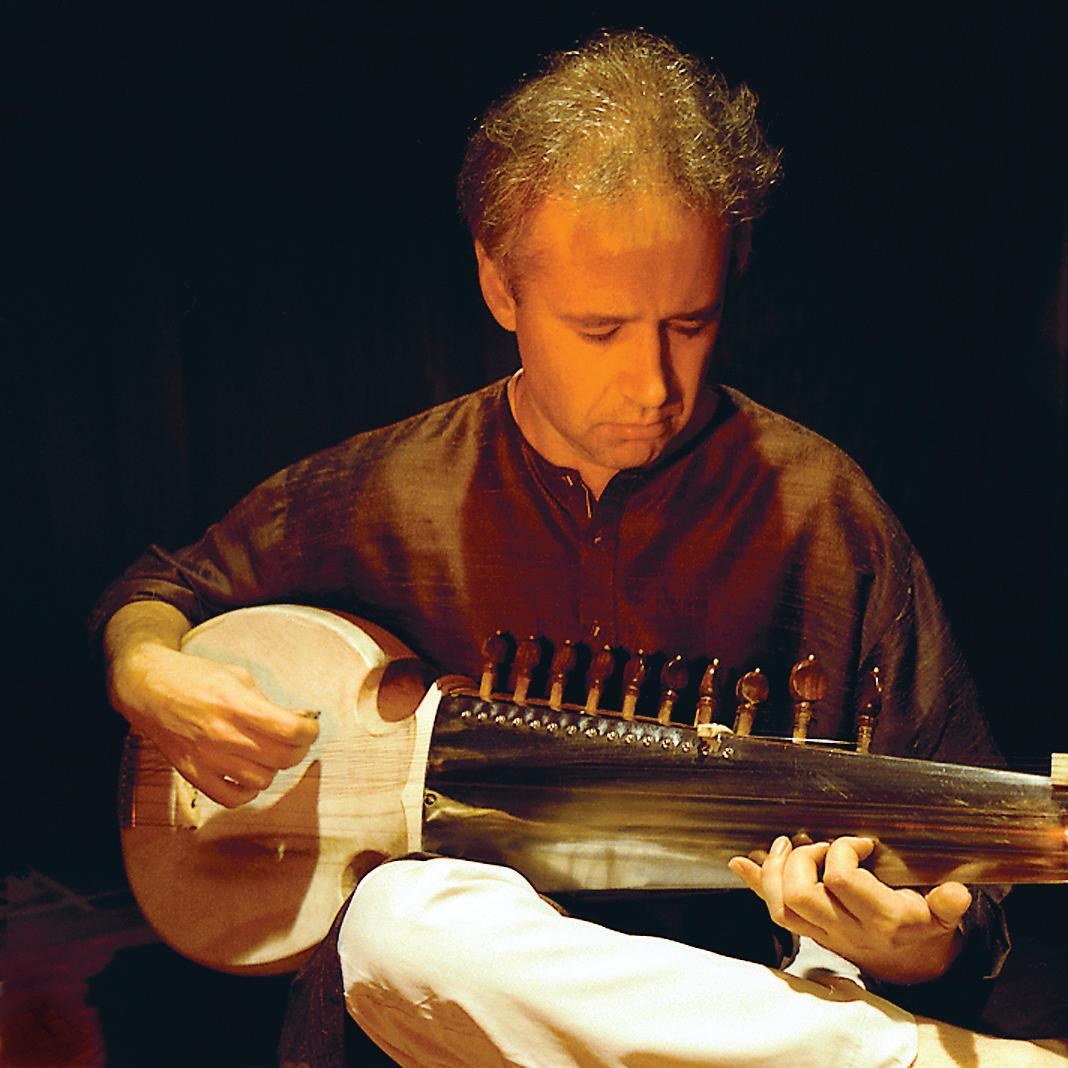
For Jiva Berry, a long-term devotee of India’s culture and classical music, it all started with the seemingly innocuous Hare Krishna community programmes he attended as a child. “During the school holidays one year we went up the coast to visit the Hare Krishna farm near Murwillumbah for a Rath Yatra festival. While we stayed on the farm I made friends with some of the others studying at the traditional gurukul there,” he recalled.
“I liked it there so much that I didn’t go home with my parents from that holiday,” he added. After a couple of years at the gurukul in Murwillumbah, Jiva was encouraged to fly to India to attend high school at the Bhaktivedanta International Gurukul in Vrindaban. That Jiva ended up
spending 10 years in India at vedic gurukuls underlines his devotion and the virtues of the traditional system of discipleship followed at these institutions. The time he spent in India is still vivid in his memory. “ Kirtan and bhajan were so much a part of our daily life and I enjoyed playing the khol and harmonium. I had lessons but didn’t really put much energy into the study of music. I would watch and listen to others who played the khol and learned to copy them. While I play a little guitar and piano, I feel the khol has some earthy calling for me,” said Jiva.
Jiva conceded he didn’t really come to fully appreciate classical music until much later, when he had the opportunity to discover “some of the greatest musicians I would ever hear.” These included the likes of Allauddin Khan, Ali Akbar Khan, Vilayat Khan, Nikhil Banerjee, Bismillah Khan, Allah Rakha, Buddhadev Das Gupta, Bhimsen Joshi, Pandit Jasraj, Zakir Hussain, Hariprashad Chaurasia and Sultan Khan, among others.
“But what truly lights up my heart is devotional music, be it Nam Samkirtan, Sufi Qawwali or Harlem gospel,” said the musician who currently plays in a ragtag folk group, The Krishna Murphys . “From our unique musical worlds we bring what inspires us and it sounds good. We are quite active on the blossoming kirtan
Continued on page 14
MAY 2011 <> 13 INDIAN LINK
3 4
5
1. Jo and Edo
2. Josh Bennett
3. Adrian McNeil
4. Jiva Berry
5. Nila Hagglund
scene in Australia and play with whoever will have us,” said Jiva. “In this ever-busy technological society, it is wonderful to see one of the oldest and simplest traditions in the world connecting to the divine through music, being embraced anew by young and old.”
Talent on the tabla
Another regular performer at events in Australia is Nila Hagglund, a trained tabla player. He is often called to participate in recording sessions with artists of varied genres. Nila was born into the Hare Krishna community in Vrindavan, India to an Indian father and an Australian mother in 1986, and has received tabla training for 6 years in India.
“The versatility and depth of Indian music, along with the fact that rhythm and melody exist harmoniously in two drums, is what attracted me to tabla,” said the musician whose training in Indian music began with Odissi dance and classical vocal, before he decided to focus on tabla “after listening to Zakir Hussain’s cassettes.”
The decision to take up tabla might have effectively reshaping Nila’s life as an artist, but the journey has had its frustrating moments. “The biggest challenge is the availability of Indian instruments, particularly tablas, in Australia due to the strict quarantine restrictions on importing raw hide drums into the country,” he complained. “In most cases the Customs department will seize your new tabla set upon arrival into Australia and charge you to treat them with gamma-radiation, which unfortunately shortens the life of the skin by up to 70%.”
Nevertheless, such hurdles have not detracted the younger generation which seems to be embracing the unique East-West mix. “Indian classical music is finally meeting the Western culture
dimension of Indian classical music to the fore. Their recording label Medicine Music, is essentially based on this philosophy.

Vicki’s been playing music from a very
“Within the raga system in Indian music, there are clear guidelines to follow. I love melody, and have always been drawn to the microtonal possibilities of Indian instruments,” she revealed.
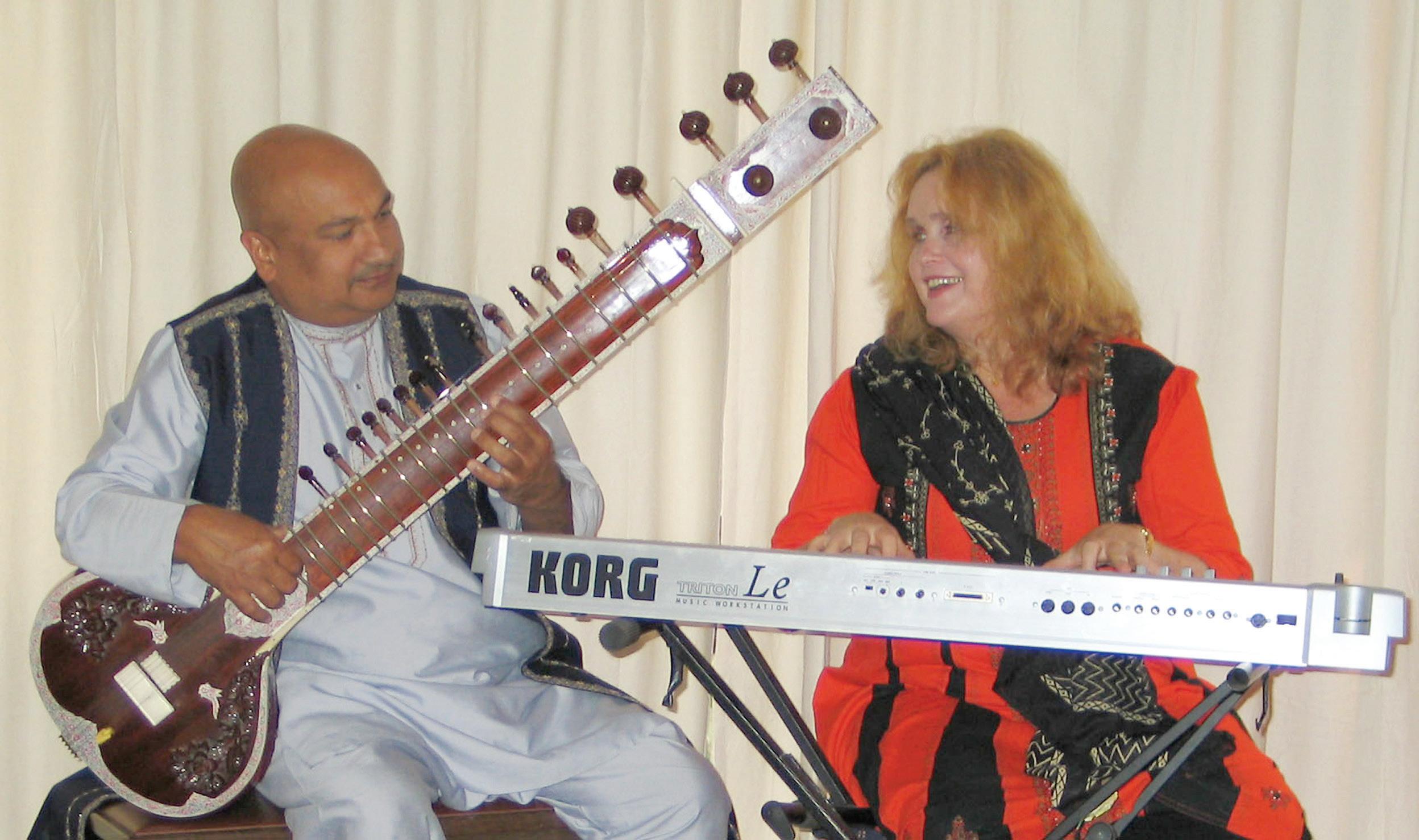
Indian classical music, she believes, is quite different in many ways from western music. “One has to feel comfortable with improvisation (although there are many similarities with jazz),” she said. “The other is that it is always advisable to stick with the one teacher; the practice of regarding the teacher as a ‘guru’ is quite
“In this ever-busy technological society, it is wonderful to see one of the oldest and simplest traditions in the world connecting to the divine through music, being embraced anew by young and old.” (Jiva Berry)
different from the western system.”
‘
and Bollywood,” added the musician who recently appeared on the TV show ‘X-factor Australia 2010’ to support India-Rose Madderom on her song
Jai Ho ’.
Healing melodies
The potentially healing property of music is perhaps the most powerful aspect of it.
Vicki Hansen and her husband Ron Ragel are two musicians who have brought this

young age and plays many instruments such as piano, guitar, flute, bass guitar and violin. She is also a singer and a television composer. “I have always preferred musical improvisation, rather than playing music that is already written, although there is nothing wrong with that, that’s just been my preference,” she said.
It’s the scope for improvisation in Indian music that drew her towards it.
Vicki’s association with India, though, is not just limited to its music. “There is so much that I love about Indian culture, history, the food, people, colours, clothing etc. Being in India gives you so much more, as there is nothing hidden, like it tends to be here in the west,” she said. “There is so much depth and knowledge to be gained from the culture, something which can be lacking in our materialistic, sometimes superficial culture.”
14 <> MAY 2011 INDIAN LINK www.indianlink.com.au INDOPHILE
Continued from page 13
Vicki Hansen and Ron Ragel
Ankit Sharma has the previllage record of solving marital disputes to 100% level. Disputes just vanishes and harmony prevails

MAY 2011 <> 15 INDIAN LINK
What’s On
SAAZ AUR AAWAZ
14 May, 8 to 11pm at Mount Street Neighborhood house, 6 Mount Street, Glen Waverly, Mel Ref: 71 D2. Enter from Panoramic Gv car park. Light Indian musical programme presented by local artists. Free event, artists and audience welcome. Contact Satish Dutta on 0418179122 for more details
16TH ANNUAL BUDDHA’S DAY AND MULTICULTURAL FESTIVAL
May 14-15, at Federation Square to celebrate vesak or Buddha’s birthday. Proudly presented by Fo Guang Shan Melbourne and Buddha’s Light International Association of Victoria (BLIA VIC).
LIFE REJUVENATION PROGRAMS
17 to 19 May, 7.30 - 9.00 pm at MJ
Putrino Theatre, Wellington Secondary College, 91, Police Rd, Mulgrave. (Off
Albany Dr and entry via Singleton Dr) Melway: 80D5. Free talks on Swami Anubhavananda’s ‘Be Happy’ Life Rejuvenation programs. Programme continues until May 22. For details contact Swami Paramananda: 0410 698 650 or email: swamiparamananda@yahoo.com www.swamiparamananda.net
SAHITYA SANDHYA
21 May , 7.30-10.30 pm at Kew Library, Corner of Cotham Road and Civic Dr. Kew 3101, Melway reference 45 D6. Literary evening with free entry. All are welcome, including new poets. Contact Harihar Jha on 95554924 or Nalin Sharda on 0402108512 or visit http://sahityasangam.weebly.com/ or www.sharda.org/SahityaSandhya.htm
BALAGOKULAM MAY
29 May, 4 – 6 pm, 3:35 registration at Clayton North Primary School, 1714 Dandenong Road, Clayton North 3168,

Mel Ref 70 D11. For children of all ages to gain knowledge about Hindu values, have fun and make friends. Theme for May: Motherhood. Guru Dakshina $2. For more information contact balagokulam.melbourne@hotmail.com or Abhijit Bhide on 0402081193
MELBOURNE INTERNATIONAL JAZZ FESTIVAL
4-13 June. Vijay Iyer, an American born son of Indian immigrants will perform with Rudresh Mahanthappa (Guggenheim fellow and 2009 Downbeat International Critics Poll Winner) on a double bill with Jason Moran and The Bandwagon on 8/6 and on 7/6 performing Solo, his most recent album. For more details email: info@melbournejazz.com or call 9001 1388
GUHYA YOGA
12 June, 11 am-12 noon at the same venue. Organised by the Ramakrishna

Vedanta Society of Victoria. For more details contact Suresh Ravinutala on 98036154.
BHAGAWAD GITA LECTURES
10-11 June, 7:45 – 9pm at Monash University Clayton campus (Melway map ref. 70 F11) LAW, Building 12, Lecture Theatre L1, Wellington Road, Clayton, Victoria 3800. Free lectures on the Bhagawad Gita by Sw. Sridharanandaji, Ch 9 Raja Vidya Raja
INDIA PASSPORT & VISA SERVICES CENTRE (IPVSC)
OFFICE RELOCATION
The India Passport & Visa Services Centre has now relocated to Part 4 Suite, Level 12, 55 Swanston Street, Melbourne 3000. The closest train station is Flinders Street, and the closest tram station is at the junction of Collins St / Swanston St. Contact phone numbers and email addresses will remain the same.

16 <> MAY 2011 INDIAN LINK
Badnaam Munni brings naam to Melbourne

Mind Blowing Films, the organisers of the recently concluded Indian Film Festival formally presented Melbourne’s Lord Mayor Robert Doyle with a certificate from the Guinness Book of Records after securing a place for Melbourne in the record books. Over 1230 visitors to the festival danced for three continuous minutes to the latest Bollywood rage Munni Badnaam Hui from the blockbuster Dabangg , cheered on by the movie’s star Malaika Arora Khan herself.
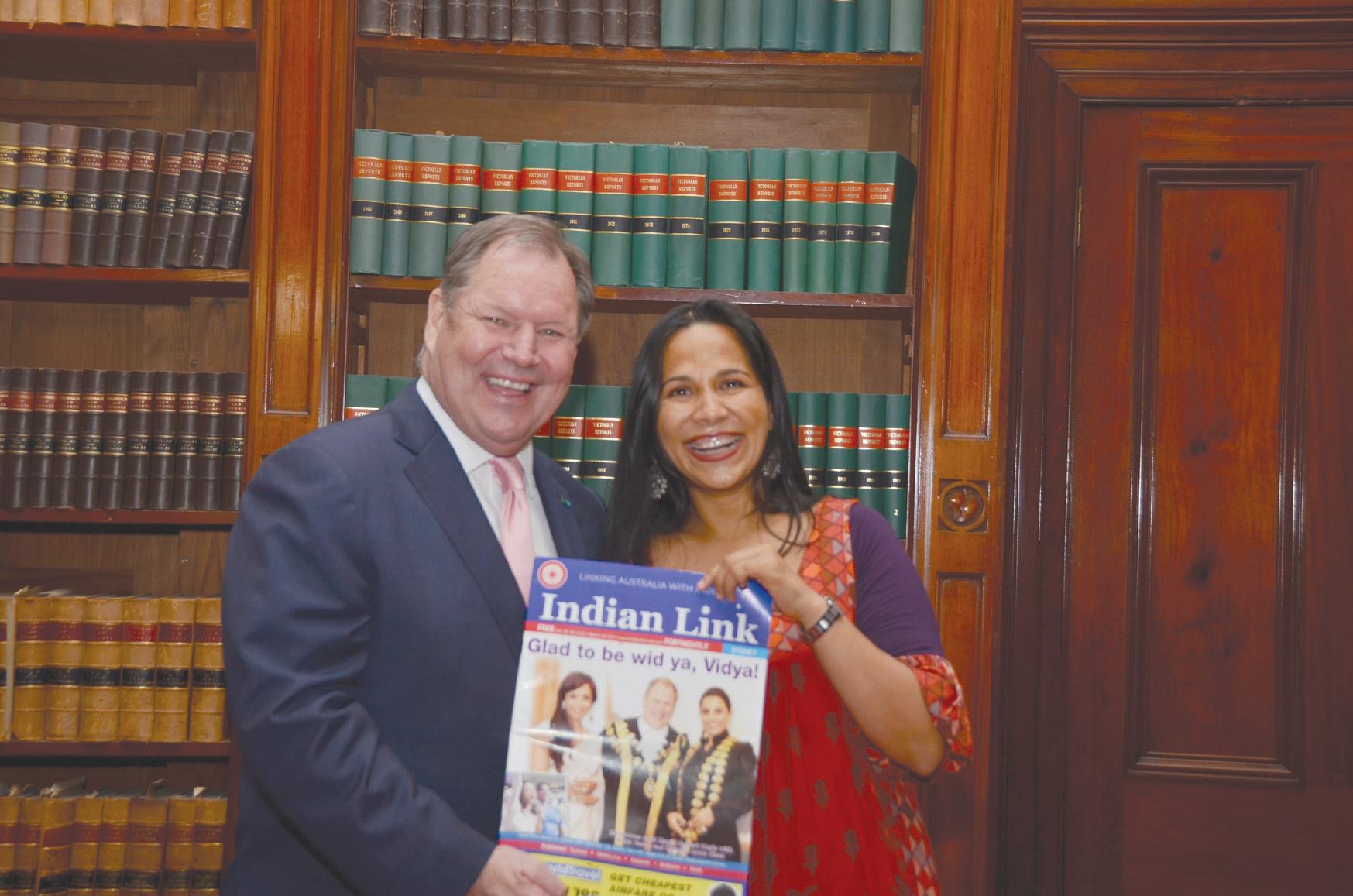

As the Mayor proudly pointed out, this quirky moment of fun-in-the-sun was also worth celebrating for the serious achievement it had made in restoring the image of Melbourne in the eyes of India and Indians. The city had a major PR concern at hand after the students’ issue made the headlines in 2009.
The Lord Mayor had played gracious host to the stars visiting from Mumbai at this year’s festival as well as last year’s. He also enquired after Rani Mukherjee, last year’s crowd puller, with whom he had hit it off so well that Link ’s Preeti Jabbal had quipped, “Move over Bunty aur Bubli, it’s now Robert aur Rani!”

MAY 2011 <> 17 INDIAN LINK
Melbourne Lord Mayor Robert Doyle with Mitu Bhowmick-Lange, director of the Indian Film Festival
www.indianlink.com.au MAINSTREAM
Malaika Arora Khan in Melbourne
Prayers and piety mark various New
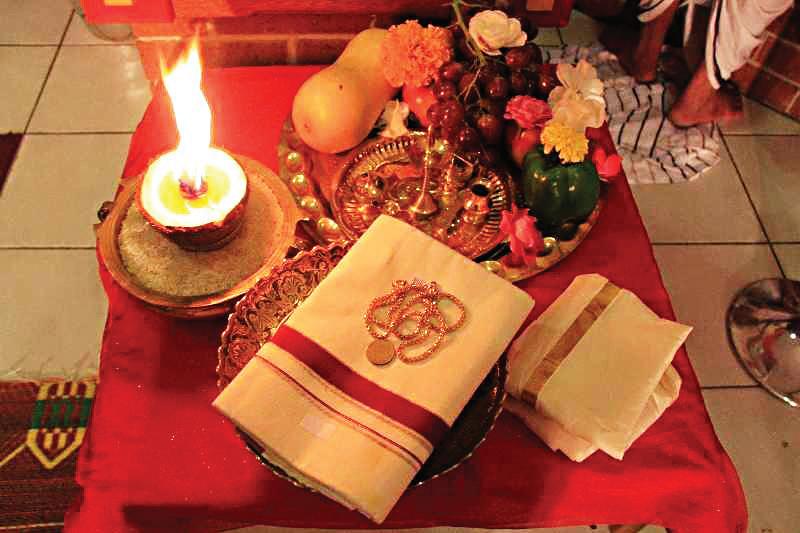
Dances, music, prayer and visits to temples ushered in the New Year for many Indian communities throughout April. The traditional New Year was celebrated across at least twelve states in India, including Bengal, Andhra Pradesh, Orissa, Tamil Nadu, Kerala and Punjab.
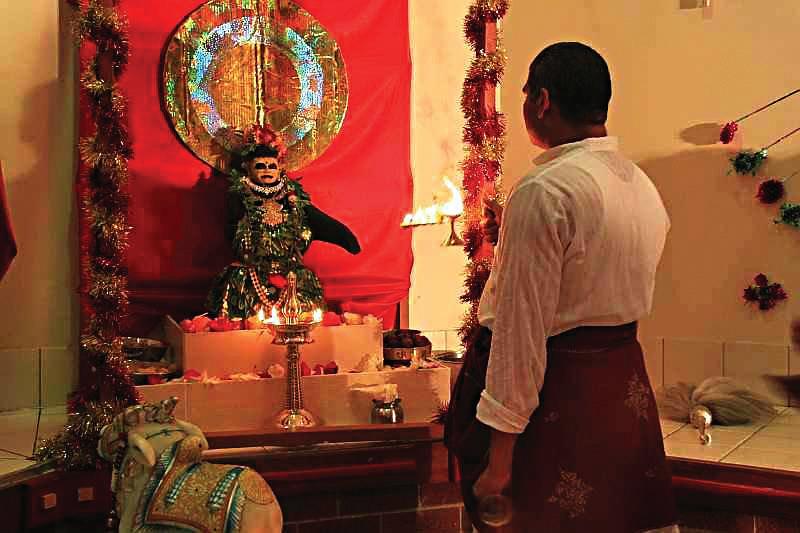
Bengali community
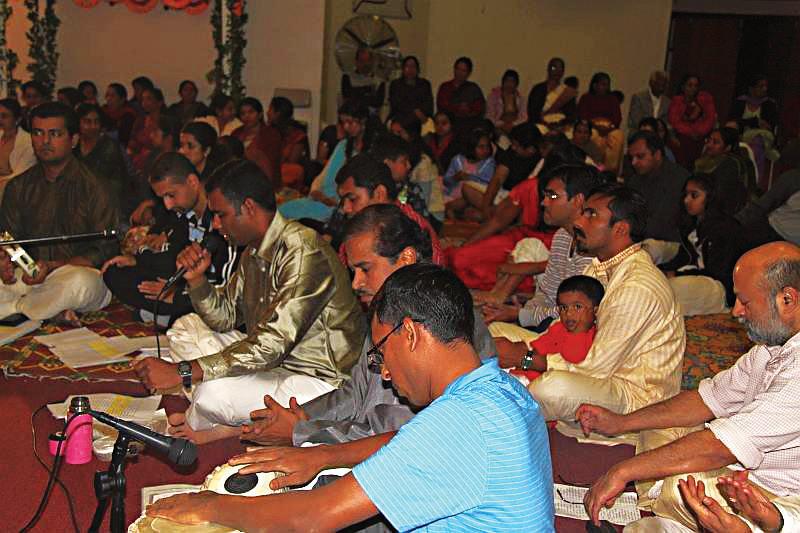
Bengali New Year (Noboborsho
celebrated by the Bengali Association of Victoria (BAV). The occasion, which was a public holiday in the states of West Bengal and Assam and in Bangladesh, marks the beginning of the ancient kingdom of Bengal and is derived from the Hindu solar calendar. Coinciding with the festive period, BAV presented its Annual Cultural Programme on March 19 to commemorate the 150th birth anniversary of Bengali Nobel Laureate Rabindranath Tagore. Arguably the greatest poet and thinker India has ever produced, Tagore has the distinction of being the only person to have authored the national anthems of two sovereign nations: India and Bangladesh.
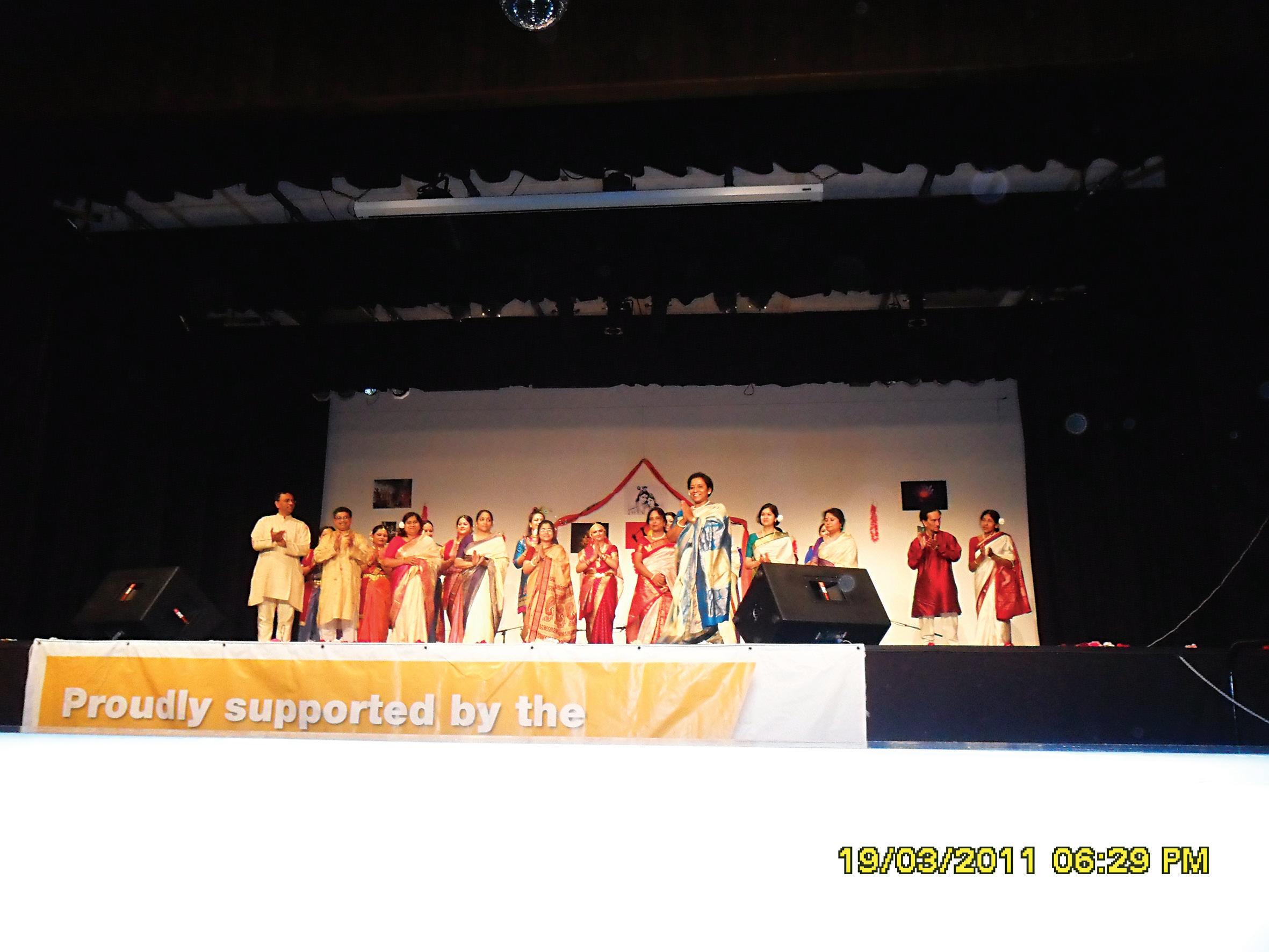
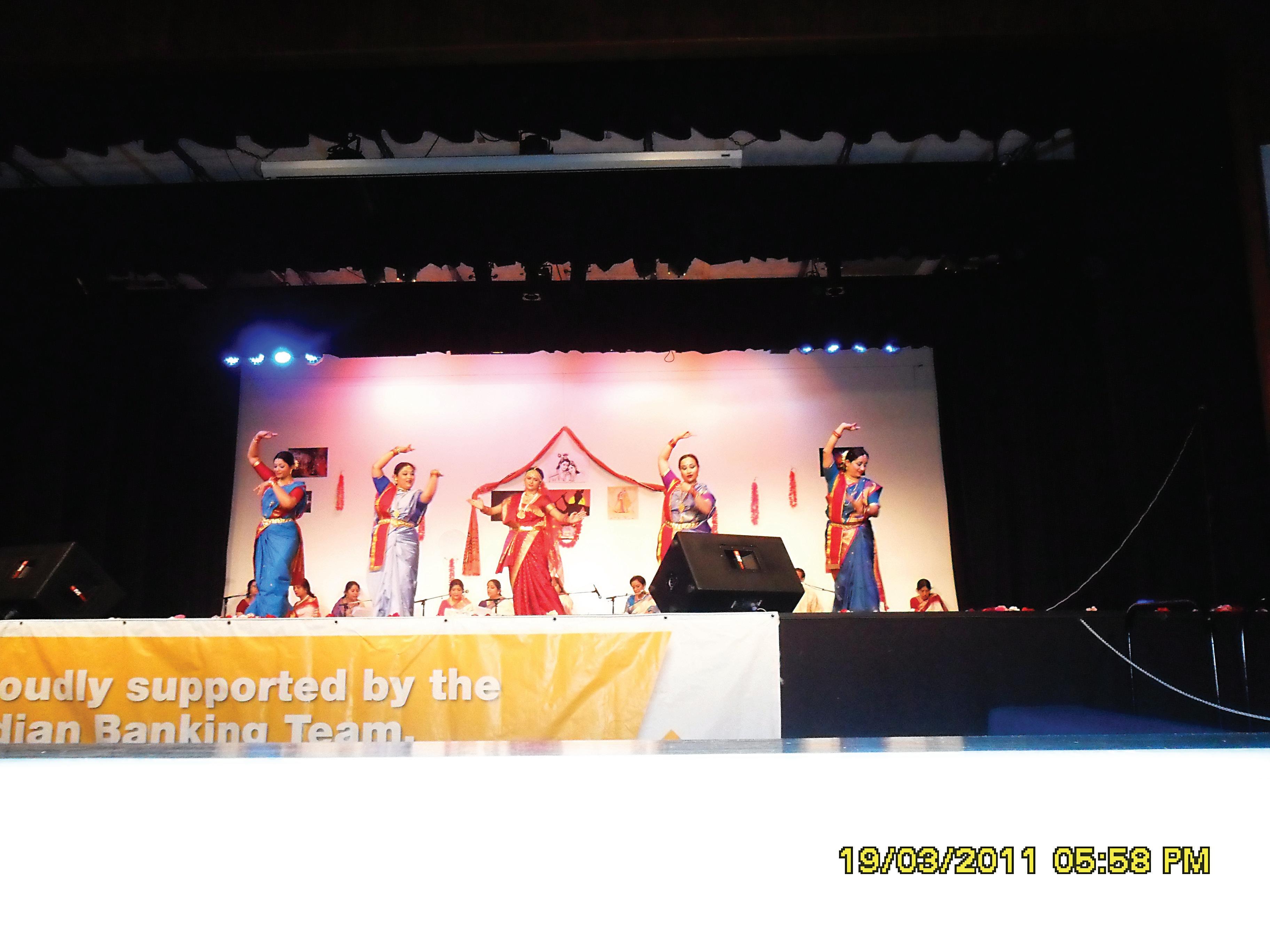
Over 350 people congregated at the Forest Hill Secondary College to witness what turned out to be a magical evening, of two distinct parts. It began with the staging of Tagore’s devotional dance drama titled, Bhanushingher Padabali which narrates the mythical stories of eternal lovers Radha and Krishna, through intricately woven poetry. The entire production was choreographed by BAV’s Sudeshna Bhattacharya. Antara Chowdhury, daughter of the musical maestro, late Salil Chowdhury, enthralled attendees with her
14 and was celebrated throughout the eastern Indian state of Orissa, as well as the neighbouring states of Jharkand and Bihar. Marking the day when the sun enters Aires, Orioz (The Association of Odias in Australia) held a cultural event called Phula Baula Beni in Sydney on April 22. Parramatta Town Hall came alive with more than one hundred Odias from as far afield as Victoria, Canberra and Brisbane, to celebrate the New Year. The programme kicked off with Lord Jagannath’s prayer (Janana) followed by Odia folk songs, courtesy Raja and Kumar Purnami, and live music. The array of programmes transformed the whole evening into a cultural feast with evergreen Odia songs, dances (including Sambalpuri), a short play (Nataka) and a Magic Show.
“The programme was excellent and a real treat. I felt as if I was in Odisha!” said the General Secretary of Orioz Mr Rajendra Padhee, who had travelled from Brisbane. Mr Charu Mishra one of the senior members of Orioz said, “It was worth driving 1,000 km. I am happy I did it. It was fabulous and I am proud to be here.”

Telugu community
Telegu New Year (Ugadi) was celebrated on April 4t, an occasion also shared by Maharashtra, Karnataka and wider Andhra Pradesh. The Telugu Association of Australia Inc (TAAI) arranged a family sports picnic and cultural function at Bentliegh. Attended by over 300 people, guests played sports and activities throughout the day before lunch was served. Following that, the cultural programme began with a prayer and welcome speech by TAAI President, Srinivasarao Gangula. Local singers sang Telugu poems and other literary works before Sri Sudhir Mandalika conducted the New Year ceremony and Sravanthi Editor Sri Konchada recited the horoscope for the year, Panchanga Sravanam. Soon after, TAAI secretary Anu Munuganti offered a vote of thanks before the programme concluded, with an offering of Ugadi Pachadi, a traditional pickle. Served in the Telegu community at New Year, it symbolises all aspects of life with a mélange of sweet, sour, salty and bitter tastes.
18 <> MAY 2011 INDIAN LINK COMMUNITYSCENE
Malayalee Vishu
Bengali Noboborsho
Year celebrations
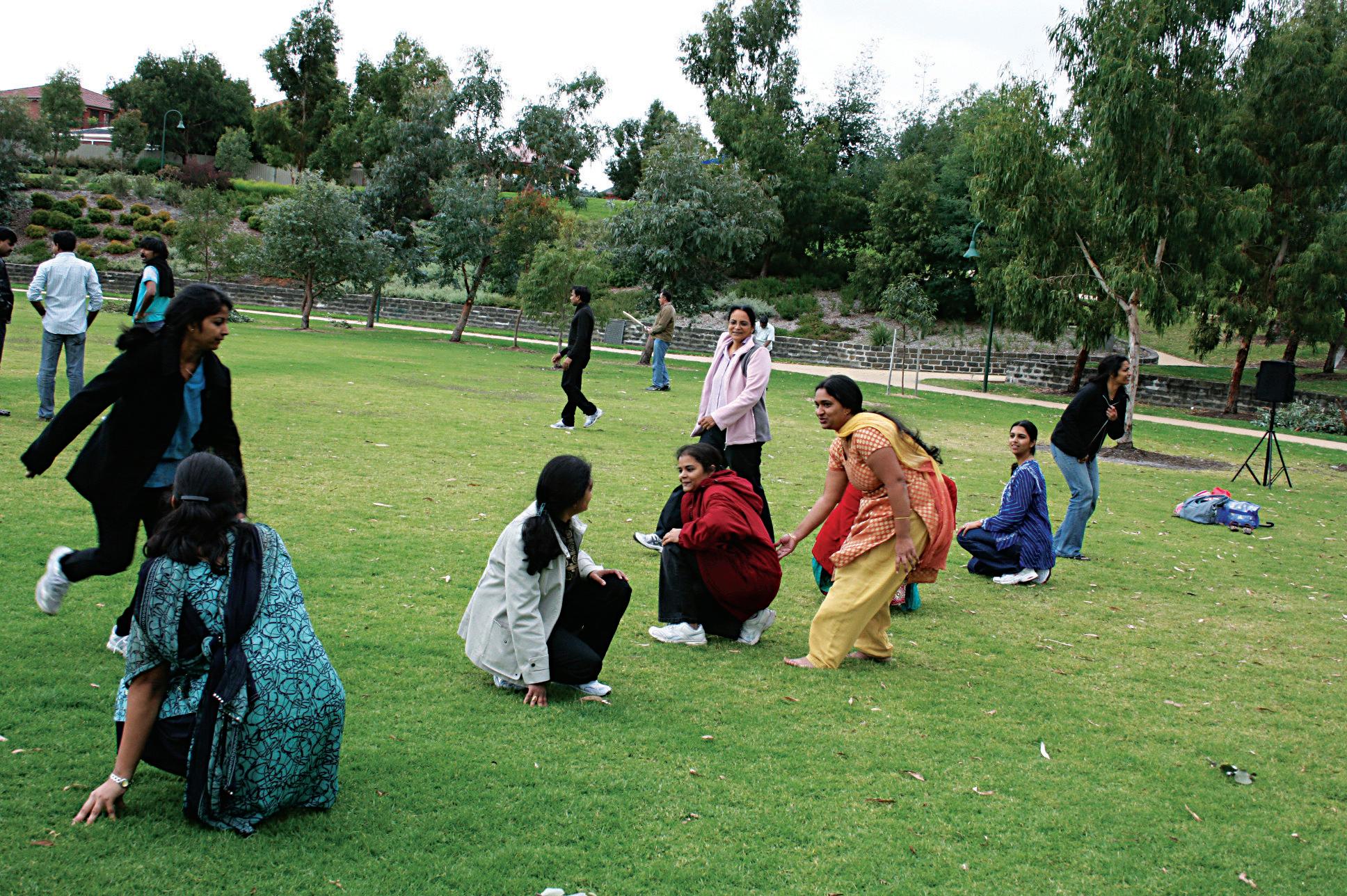
Tamil community
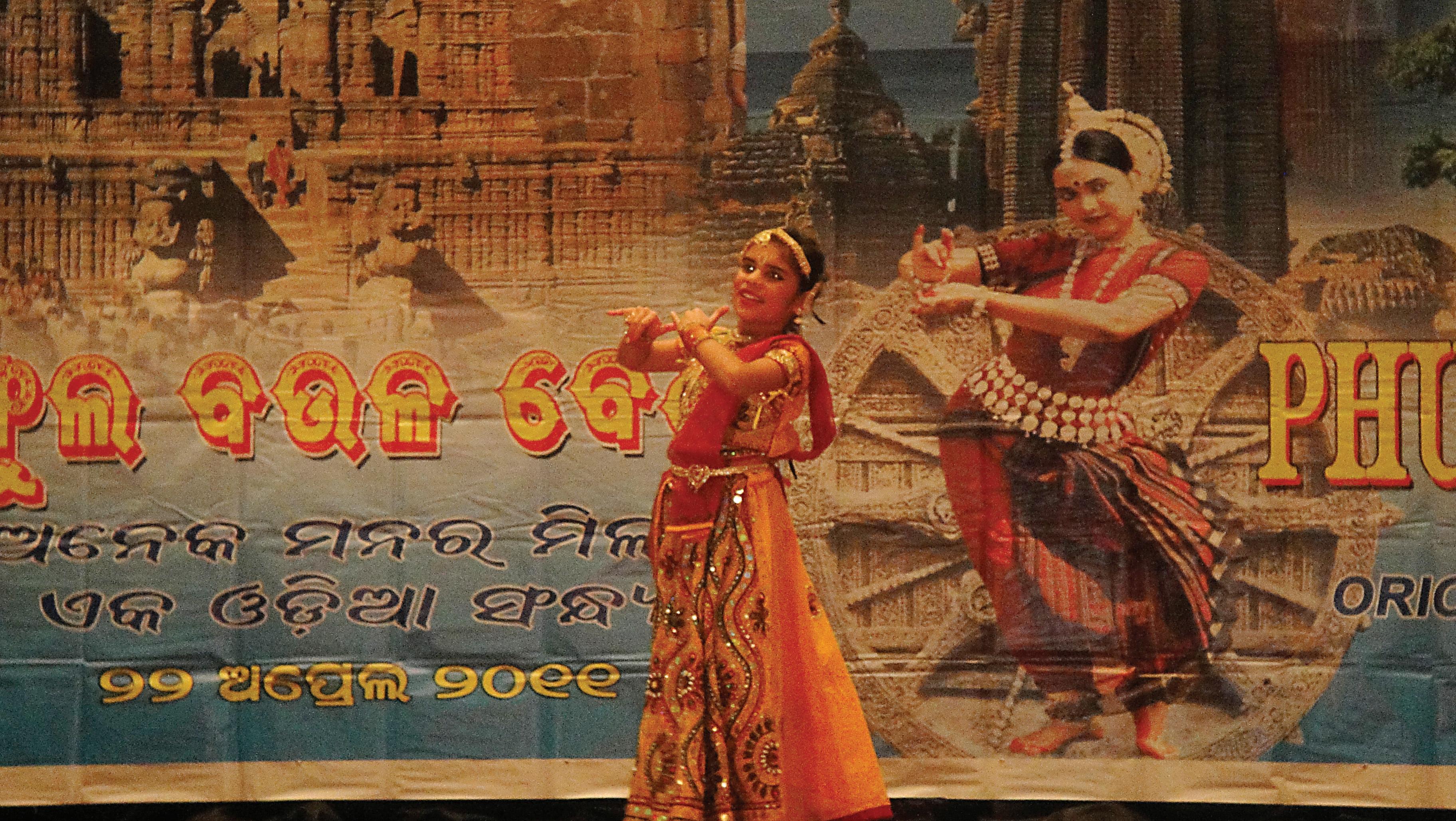
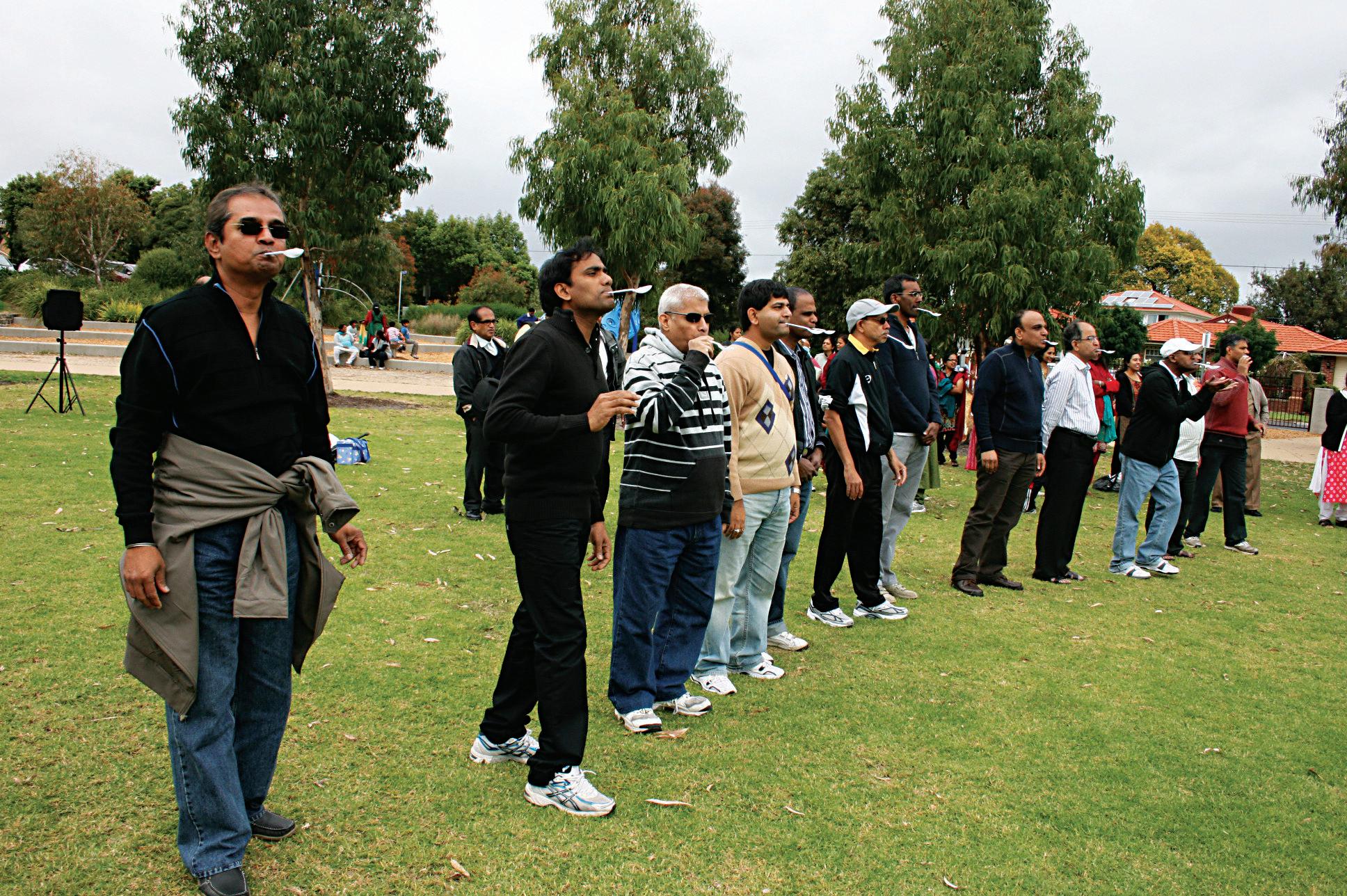


Meanwhile, the Tamil New Year (Pudu Varsha Porappu and Malayalee New Year (Vishu) were celebrated jointly by the Canberra Murugan Group and the Canberra Ayyappa Samajam. Tamil New Year also fell on April 14, and Abhishekam of the Murugan deity in the temple was performed on that day, before the major celebrations the following day. On the evening of April 15, about 150 devotees attended the celebrations at the temple which began with a puja, the Abhishekam of the Ayyappa deity. It was performed by Pundit Shailesh Diwediji and was followed by bhajans by Ayyappa Samajam members and the Murguan group. Aarti and bhojan prasad of traditional Kerala and Tamil dishes, all prepared by local families, rounded out the successful evening.
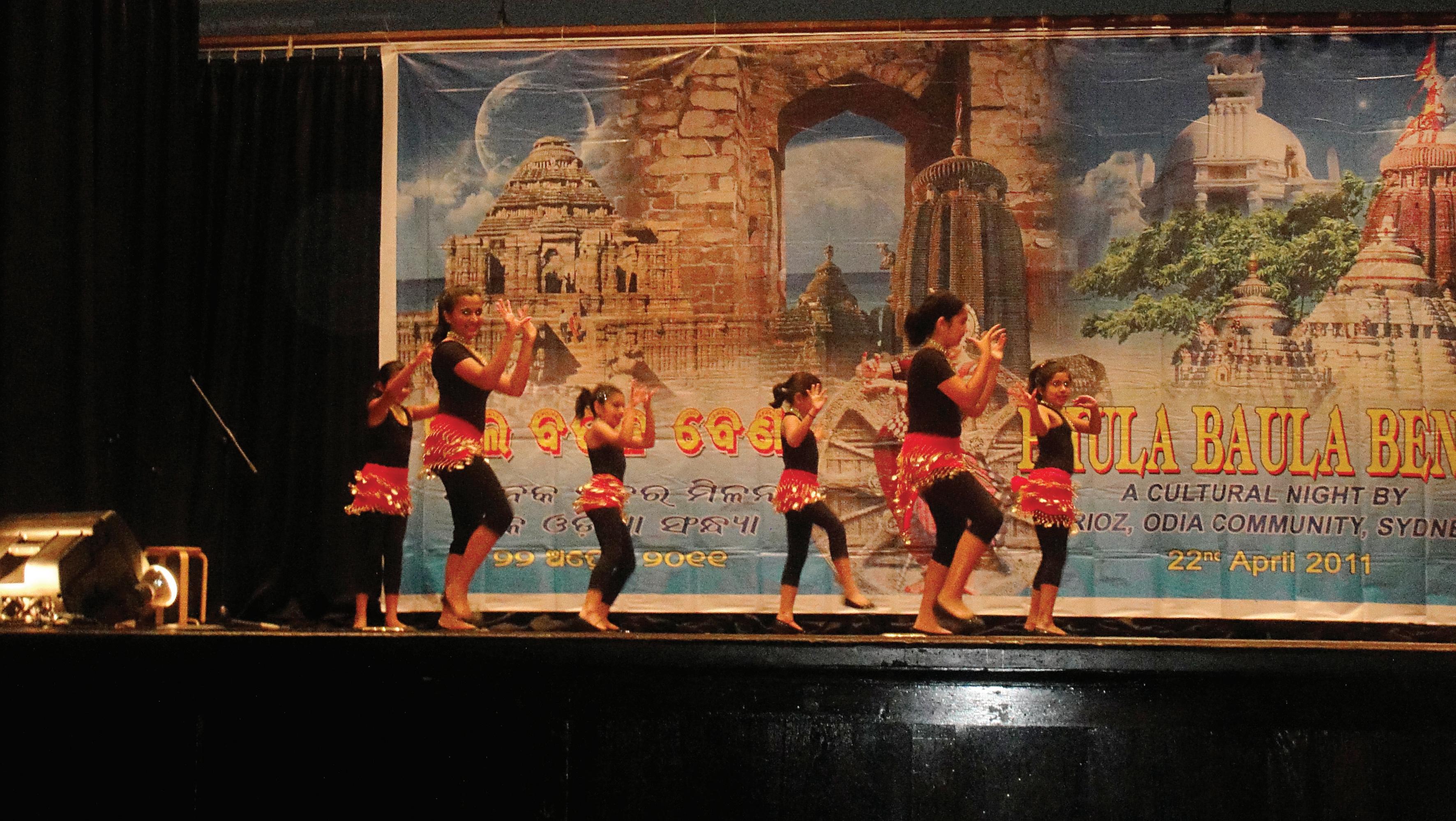

Tamil and Malayalee New Year celebrates the date when Ayyappa, son of Shiva and Vishnu is believed to have been incarnated on the banks of the River Pampa in Kerala around the fourteenth century. The Hindu Temple and Cultural Centre in Florey has the first fully consecrated idol of Ayyappa in Australia. The statue was sculpted by shilpis in Kerala and installed with a three-day consecration ceremony on January 14, 2011 (Makar Sankranti Day).
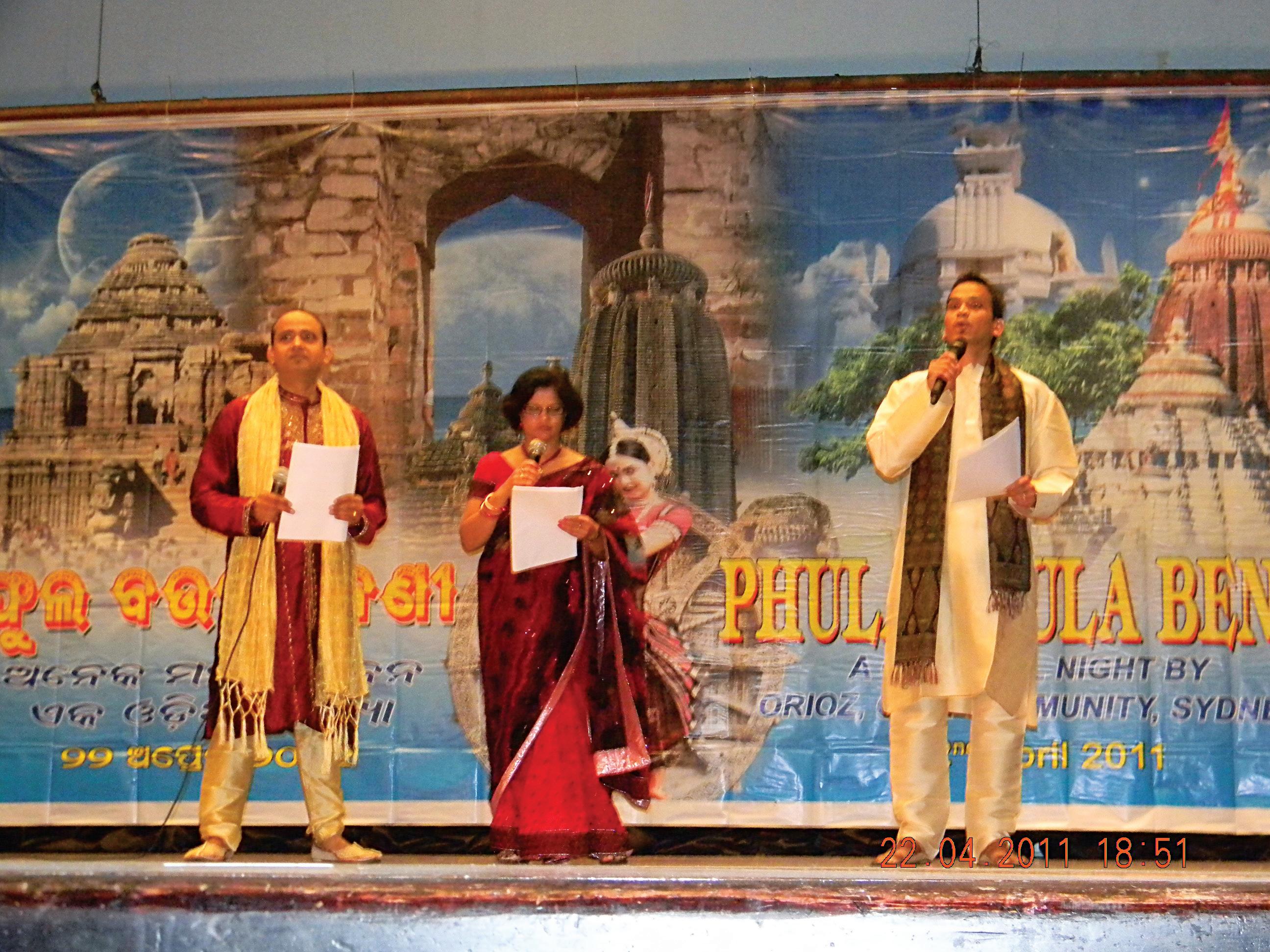
MAY 2011 <> 19 INDIAN LINK www.indianlink.com.au
Tim Blight Jena of Orioz (orioz.org.au) and Krishnakumar Shankar of the Hindu Temple and Cultural Centre (htcc.org.au) for their generous contributions.
Odiya Maha Vishuva Sankranti
Telegu Ugadi
Marriages
William and Catherine’s wedding may have captivated the world, but their Indian counterparts have had lavishly elaborate, but media understated, nuptials
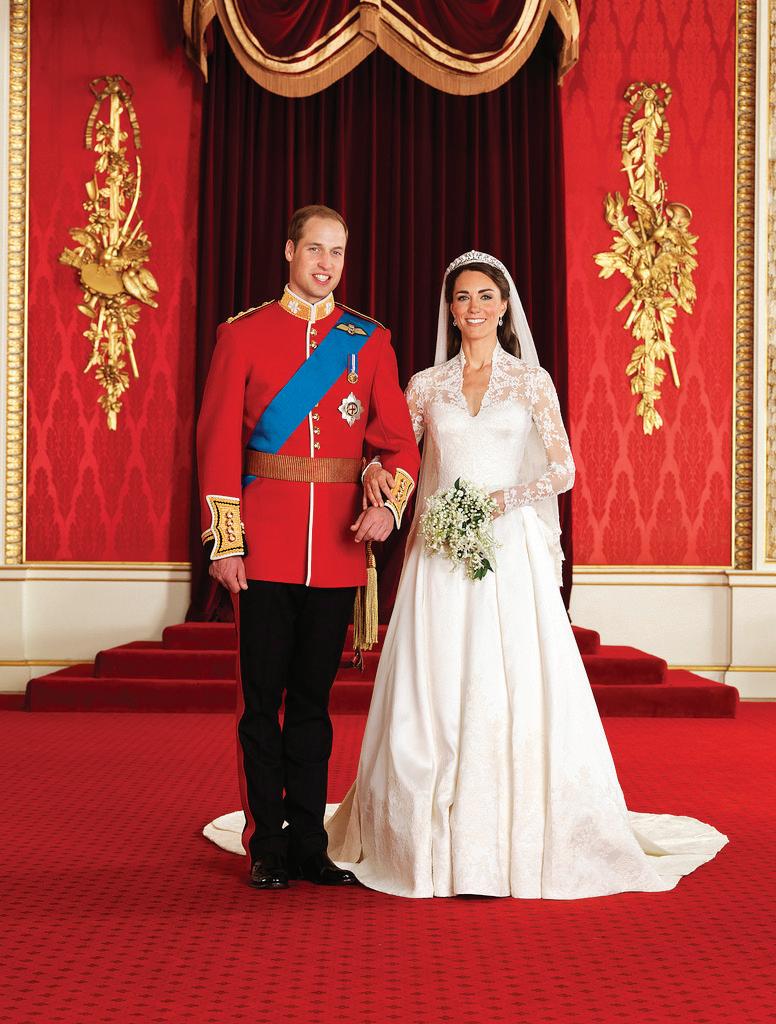 BY PRIYANKA TATER
BY PRIYANKA TATER
22.8 million television viewers on US networks, 42.1 million Indians watching in their living rooms, half of New Zealand hooked on, 20 million watching in UK homes, almost a million spectators out on streets outside the venue where the action took place. I am not surprised when statistics say that more than a third of the world, at least 2 billion people, were witness to a new chapter of history: the Royal Wedding of Prince William with the commoner who won his heart, Catherine Middleton. I was one of those 2 billion viewers glued on to my TV to watch the fairytale wedding unfold… After all, most of us can’t resist the lure of a good wedding, and us Indians are certainly no strangers to blue blooded royalty. The only difference is that Indian royals are still not willing to infuse their veins with some red blood, and they still hesitate to accept the common man as part of their dynasty. While their international counterparts, be it Prince William, or Felipe (Crown Prince of Spain), or Frederik (Crown Prince of Denmark), have all opted for ordinary mortals as their life partners, India is
Mansoor Ali Khan Pataudi and actress Sharmila Tagore at their 1969 wedding

still stuck with tradition. Having said that, I can’t but not mention some of the magnificent royal weddings of India, that may not have had the luxury of media hype and hoopla attracting the attention of the world like the one we witnessed on April 29, but they certainly did not lack in pomp and pageantry.
The Sharmila-Pataudi wedding was followed by a series of receptions in three cities, the finale being a gala party at the Turf Club in Mumbai.
In India, the one comparable royal event was the wedding in 1940 of Maharani Gayatri Devi (daughter of Maharaja Jitendra Narayan and Maharani Indira Devi of the “Koch” dynasty of Cooch Behar) to Maharaja Jai Singh of Jaipur. At 12, Maharani Gayatri Devi had fallen in love with Sawai Man Singh, heir to the Jaipur throne. A stunning beauty at 19, she decided to marry His Highness, who was much older than her. Their wedding caused a bit of a sensation in India, and not only because she was to be the third wife of HH Man Singh: he already had two wives, the daughters of the Maharaja of Jodhpur.
A procession of 60 elephants was assembled for a march past on the auspicious day of the Indian royal wedding. It was one of the most elaborate, lavish and expensive weddings of that time. The Maharani’s wedding gifts included a Bentley from the Nawab of Bhopal and a house from her grandmother. While we are yet to know the honeymoon destination of the newlywed royal couple, our Indian royal couple chose Ooty for their romantic getaway.
However in recent times, it was the 2010 wedding of Shivraj Singh, son of the former Maharaja of Jodphur and Gayatri Kumari of Askot in Uttarakhand that was the talk of the royalists. Attended by more than 800 guests which included members from all of India’s former royal families and Indian and international celebrities, the wedding took place in the 19th century Rambagh Palace which is now a luxury hotel in Jaipur.
The groom is reported to have arrived in a vintage Rolls-Royce owned by his father, Gaj Singh, the former Maharaja of Jodhpur. Security was watertight and no, invitation cards were not enough, one needed a special entry pass to sail through the security. The baaratis arrived in Jaipur via a special chartered train from Jodhpur in a royal fashion reminiscent of his father Gaj Singh’s wedding four decades ago.
One of the most opulent Indian weddings which caught the attention of the international media was that of Chitrangada Scindia of Gwalior (daughter of the late Madhav Rao Scindia)

Indian links at William
Icing on the cake
As Prince William and his bride Kate Middleton cut the lavish, multi-tiered wedding cake, there were some that were celebrating the India connect. Indian origin Kishore Patel is the man behind the company that crafted the elaborate confection, which was the centrepiece at the reception in Buckingham Palace on April 29.
Fiona Cairns Ltd began on Fiona’s kitchen table 25 years ago, when Patel - Fiona’s husband and now managing director of the companysaw the potential of his wife’s beautifully crafted handmade cakes.

The company’s website said that Patel joined the company full time in 2001 and the business moved to a state-of-the art bakery in Leicestershire.
The company makes 27,000 fairy cakes a week.
“We are thrilled, privileged and proud to announce that we have been asked to make the wedding cake for HRH Prince William and Catherine Middleton,” said an announcement on the firm’s website.
The Daily Telegraph had earlier reported that
The
Prince William is also understood to have sought an alternative treat - a McVities chocolate biscuit cake, for which he has had a soft spot since childhood.
20 <> MAY 2011 INDIAN LINK
the cake will be decorated with Prince William and Kate’s new cipher that was officially released on their wedding day.
theme centered around the four flowers of the home nations - English rose, Scottish thistle, Welsh daffodil and Irish shamrock.
COVERSTORY
to Yuvraj Vikramaditya Singh of Kashmir (son of Dr Karan Singh of Jammu & Kashmir) in 1986.
Termed by New York Times as the ‘Wedding of the decade’, it was covered also by Washington Post and San Francisco Chronicle, amongst many others. The wedding venue was the Jai Vilas Palace in full décor. The platforms of Gwalior railway station were paved with gleaming marble to welcome the wedding guests. More than 40,000 guests, including villagers who arrived in bullock carts, filled the grounds of the Jai Vilas Palace. A special helipad was built for the convenience of various dignitaries which included the entire cabinet, as well as the Kings of Nepal and Bhutan. In the gold-plated banqueting hall, the famous Scindia silver train carried wine and port for guests. It was a wedding that is used as a benchmark by royals even almost two decades later! The bride’s brother Jyotiraditya Scindia, Maharaja of Gwalior married the doe-eyed Priyadarshini Raje of Baroda, again a royal, in a pompous ceremony in 1994.
In the gold-plated banqueting hall of the Scindia palace, at the wedding of Chitrangada, the famous Scindia silver train carried wine and port for the guests.
However, a royal wedding that caught the nation’s attention was that of the Nawab of Pataudi, Mansoor Ali Khan, the then captain of the Indian cricket team with film actress Sharmila Tagore, also tagged as a sex symbol of her times. It took Tiger Pataudi four years of sending roses and proposing, to finally bowl over his lady love and the courtship culminated in marriage. But it wasn’t easy. A HinduMuslim union raised quite a few eyebrows and the two families gave their nod of approval after much resistance.
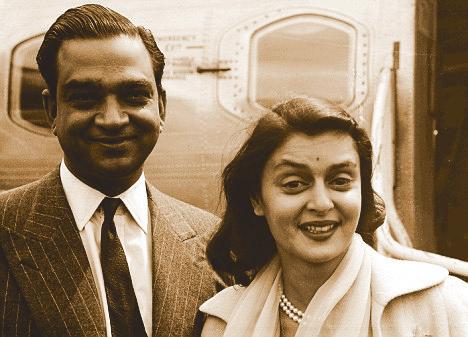
On December 27, 1969 the two celebrities tied the knot in a nikah ceremony. Sharmila Tagore converted to Islam and took on the name of Ayesha Sultana. The Bengal tigress became a Mughal begum, trading knotted blouses and tightly draped saris for a wedding sharara. The wedding was followed by a series of receptions in three cities, the finale being a gala party at the Turf Club in Mumbai. Guests from the world of films, sports and page 3 made their presence felt.
While most of us may have missed out on the wedding fanfare of 1969, it will be a bullfight for TRPs if and when chhote Nawab Saif Ali Khan decides to tie the knot with lady love Kareena Kapoor. No doubt, it would be one of the most watched events on Indian TV, if the media were given access to the ceremony.
While we are on the subject of royal weddings, it won’t be complete without mentioning the Gandhi scion, Rahul Gandhi, who is considered royalty in India, and why not? After all he belongs to a political clan that’s ruled India for decades and is still ruling!
of majesty and Kate’s wedding
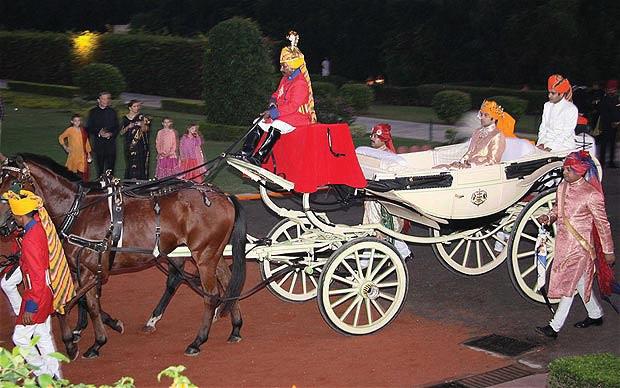
If one were to draw a parallel with Prince William, Rahul Gandhi comes closest in terms of popularity back home, being the country’s most eligible bachelor. There’s no doubt that his choice of bride will evoke just as much debate as Prince William’s, with her pedigree subjected to just as much scrutiny.
“I couldn’t believe it, I’m very excited, very daunted and very privileged - a mixture of emotions,” Fiona was quoted as saying.
“The cake was multi-tiered - cream and white (icing) – it was a traditional cake but also quite delicate and modern, all the tiers having a different theme”.
The huge cake included a range of produce from dried fruits like raisins and sultanas to walnuts, cherries, grated oranges and lemon,
French brandy and free range eggs and flour.
Ludhiana
to London:
India-made stoles for royal wedding
Nearly 4,000 soft wool stoles were shipped for the wedding of Prince William and Kate Middleton in London, courtesy a Ludhiana manufacturer. They were gifted to the guests invited for the wedding at London’s Westminster Abbey. And the royal couple it is believed, also took its pick. Ludhiana’s Centex Exports shipped the stoles to London-based popular online fashion business store Boden.
Each stole costs 45 pounds. Made of soft wool, the stoles are in red and blue, brown and scarlet and green and grey colour variants. The Union Jack is printed on both sides of the stoles. Moreover, the wool has been knit to form an animal print pattern carrying a small patch with the words, ‘April 29th 2011; William and Kate; With love from Boden’.
“It’s a singular honour to be asked to create
such an important keepsake for a wedding which will be historic. We have been chosen from across the world to manufacture the scarves.,” said a visibly excited Vineet Sood, the Centex Exports managing director.
Centex was chosen after a market study by Boden.
“The company went across China and South Korea in search of a supplier as they were looking at very fine quality of wool. They looked at different brands but couldn’t get the desired result. And then since Centex are into manufacturing of scarves since 1969 and we happened to be working with top brands of the world like Burberry and Giorgio Armani, they asked us to create some samples and were impressed. The designs were given by them,” he added.
In addition to these stoles, the company has made another 2,600 stoles and scarves for Boden which will be sold online.
Last year, Centex collaborated with Hugo Boss (BLACK) to manufacture stoles for all the celebrities who attended the prestigious Berlin International Film Festival. IANS

MAY 2011 <> 21 INDIAN LINK
Gayatri Devi of Cooch Behar with her husband Sawai Man Singh of Jaipur
Groom Shivraj Singh of Jodhpur arrives in style for his 2010 wedding
Unheard, but not silent
Gender bias supported by media hype has resulted in women students and their unpleasant experiences going unsupported and suppressed
BY TIM BLIGHT
When an Indian newspaper reported in early March that Indian students were the happiest group of nonlocal students in Australia, it seemed almost natural that opinion was sought from a young Indian male. While the allegedly racist attacks on Indian students in Australia during 2008-09 were widely publicized in the media, news coverage of the violence was decidedly lopsided in its gender approach. Regardless of the motivations for the attacks, it would appear to an outsider that these were almost exclusively perpetrated against men. Of course, common sense dictates that this was far from true, however the question of gender bias in Indian and Australian media is not a new story.
An unexpected encounter
Alia (not her real name), a South Asian hospitality student, was attacked walking through Melbourne in 2009. After leaving her college where she was studying for the upcoming exams, she was walking to Flinders Street Station on a particularly cold winter’s night. Despite not being of Indian origin, her skin colour and appearance could easily have her identified as
The Indian media is no better than the Australian media in this aspect; the experience of a female Indian student in Australia is a story which isn’t told as much as it should be.
one. Like many streets in Australia after dark, this one was deserted and she soon became aware of a man following her. “I started to walk faster,” she says. “It crossed my mind, but I didn’t think anything would happen.” Soon, the man drew closer to her, and Alia began feeling nervous. “Then, suddenly, he came up behind me and grabbed me around stomach,” recounts Alia, with a haunted expression. “He was yelling at me and pulling my hair. I tried to get him off me, and I screamed. He let go and I ran to get to the main street.”
Like many in the Indian and wider South Asian community, Alia is not fully convinced that her attack was racially motivated, noting that the man might have been mentally disturbed. However, considering the timing of the attack, it certainly did force her to consider her future as a student in Australia.
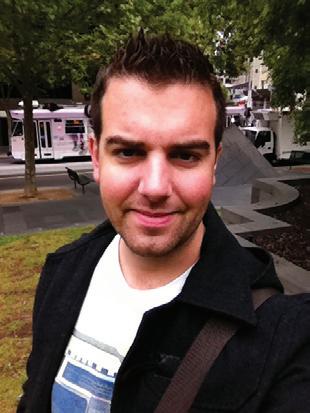
“It really scared me, and I didn’t go out for a couple of days after that, I was worried maybe he would recognize me,” she says.
Male-dominated media
Typically, the media seeks to provide news in a digestible format for its audience and while idealists claim that society is inherently egalitarian, a quick glance at nearly any medium reveals a strong gender bias. Domestic or social issues are often discussed on chat shows hosted by women; ‘hard’ news is
often presented or hosted by men. Equally, on commercial television, noncontact sports such as tennis and netball are the domain of women, while rougher pursuits such as rugby and boxing are the realm of men. It’s all part of constructing man’s bravado and portraying women as somehow more sensitive. So it stands to reason that when violence and potential racism are unleashed upon innocent individuals, the media seek reaction from a male victim before they look to a female. It makes for great viewing, with the story told as an ‘honourable battle’ featuring heroic, virtuous warriors fighting morally bankrupt villains. Perhaps the audience even expects this type of story-telling.
The woes of stereotype
Does any of this matter? In the (supposed) age of gender equality, it should. The Indian media is no better than the Australian media in this aspect; the experience of a female Indian student in Australia is a story which isn’t told as much as it should be. This may be associated with traditional social strictures in both countries which sees a woman as equally vulnerable and defenceless, while also as the bearer of a family or a nation’s honour. An attack on a woman is a deep wound, cutting right to the core of a society, and as such, it makes for unpopular news.
Alia did not report her attack to the police because she felt her experience was not serious enough. She also didn’t relay the experience to her parents in case they panicked and pulled the plug on her course. This highlights a major trust gap which is perpetuated by and also fuels, media speculation about racism and violence in Australia. Many male and female Indian students in Australia lead a double life, working long hours in menial jobs, struggling to make ends meet and dealing with personal issues. Meanwhile, they must paint a rosy picture for their parents to allay concerns and prove that their gamble of moving to a new country to study is paying off. Men risk their parents’ ordering them back home for their safety and being relegated to a life in the family business, while for women the consequences are potentially far more serious. Although Indian society has progressed in leaps and bounds, many parents would still baulk at the thought of their daughter having an Indian boyfriend outside of wedlock. If their daughter were physically (or worse still, sexually) attacked abroad, college fees withdrawn, a flight home, an arranged marriage and a life of domesticity would often be the kneejerk antidote provided.
Below the surface
Roanna Gonsalves is a writer of Indian origin, who recently worked on a theatre piece based on the Indian student attacks. She also feels that Indian women are under-represented in reportage on this topic. “Silence should not be interpreted as bliss… we have all heard anecdotally about sexual abuse of female Indian students by their Indian employers, and we’ve all been aghast at the recent sexual assault and murder of Tosha Thakkar, a female Indian student in Sydney. This just points to the trauma that some women go through, but which we don’t hear about in the mainstream media. It’s all running below the surface,” says Gonsalves. She attributes this to the feelings of shame commonly experienced by victims of violence when thrust into the public eye, exacerbated by the isolation of being part of a minority community in Australia. Additionally, she points to social and cultural factors: “Many Indian women have been socialised into being seen and not heard, even when they have much to say. Possibly, the physical and emotional violence that female Indian students face here is a localised ‘application’, if you will, of something that’s global. That is, sexual abuse, marriages of convenience, etc., are not particular to the female Indian student experience in Australia, but are the burden of women all over the world, and as such are unfortunately not particularly newsworthy in a male-dominated media landscape,” she answers.
The absence of widespread discourse about racist violence against female Indian students is the result of unwittingly learned gender roles and well-intentioned parental concern. However, the media’s hysterical storytelling and fear-mongering, and silence on other important perspectives is not helpful. Greater, more incisive reporting would surely lead to a greater awareness of the female student experience of Australia. It could reduce the number of students who return to India at request of their concerned parents, and encourage more to stay in Australia to complete their degrees and become confident, successful citizens and professionals. Could there be a better answer to racism?

22 <> MAY 2011 INDIAN LINK
STUDENTS
www.indianlink.com.au
Masterpiece on motherhood
US-based film maker presents a movie that explores the fragile distinction between the modern and the traditional, while building bridges in the present
by writing, directing, producing and acting in , her debut docu-feature film. I asked her which aspect appealed to her the most –pre-production, screen writing, editing or post production? “I enjoyed shooting the film most because it was a realization of my dreams,” she said. However Monalisa found the sound editing and dubbing to be the hardest part, especially for the outdoor shoots in India. “I landed there with all this equipment that was of no use as shooting outdoors in India is very challenging. I have now learnt from my experience and will ensure I have special dubbing arrangements for the outdoor shoots. I will also never act in my own movie again, as I am more interested in the technical side of film-making,” she
BY PREETI JABBAL
alleviate poverty and ignorance?
“As a moviemaker, my role is to address the issues. This is the first step in helping to solve them,” said Monalisa. “I think there are many ways in which one can give back to the community,” she added. Citing her own example, Monalisa spoke of her involvement with Ramakrishna Mission in helping them to make shelters for the calamity affected people of Sunderban in Bengal. In Los Angeles during Durga Pooja, Monalisa claims to have collected $5000 by just getting her friends to
Monalisa, like many other film-makers, has made a movie that inquires into the difficult balance between separation and integration that shapes the consciousness of firstgeneration émigrés and their children in different ways.
A nexus to life in America and nostalgic memories of life in Bengal, form the crux of Monalisa Dasgupta’s movie, Lost Mother. The BengaliAmerican movie was screened recently at the Ashburton Library Hall by the Music Lovers of Bengal in Melbourne. This movie will strike a chord with every migrant, especially mothers, who can be caught between their new culture which holds their aspirations, while working hard to incorporate their traditional culture and the values that have shaped who they are. Lost Mother is the articulation of one such woman’s questions and her troubled relations with her American born and bred son. While introducing the movie to her predominantly Bengali audience in Melbourne, Monalisa Dasgupta said she chose this particular genre of film-making because she wanted to show the brighter side of the kaleidoscope to the world that has hitherto mainly focused on the poverty and squalid side of India.
“My films will portray the strength of my country and culture. I consider it to be my responsibility to my audience to be honest in my depiction, but my work will always be painted with my love for India. I want to tell realistic stories of people from US and Bengal with involvement of actors from both countries,” she said.
Monalisa Dasgupta said she chose this particular genre of film-making because she wanted to show the brighter side of the kaleidoscope to the world that has hitherto mainly focused on the poverty and squalid side of India.

Doesn’t focusing mainly on the Bengali-American crossover restrict her audience to some extent? “Making a Bengali movie in Kolkata is very difficult and hugely competitive; similarly it is hard to make a movie in Hollywood so I decided to focus on this niche market instead, where I have less competition and there are millions of untold stories and a very interested audience,” she replied. Monalisa took multi-tasking to newer heights
California-based Monalisa holds a double degree in Economics and Operations Research from Penn State University in the US, and has worked as a senior market analyst for over 10 years. Growing up in Kolkata, Monalisa was always enamoured by films and was offered roles in Bengali films, but a conservative family was an impediment. She married and migrated to the US and once settled, she enrolled herself in a Film Making and Direction course from the New York Film Academy and Hollywood Film Institute. Soon Monalisa realized that this was her calling and left a highly paid corporate job for the unpredictable, yet exciting path of film-making.
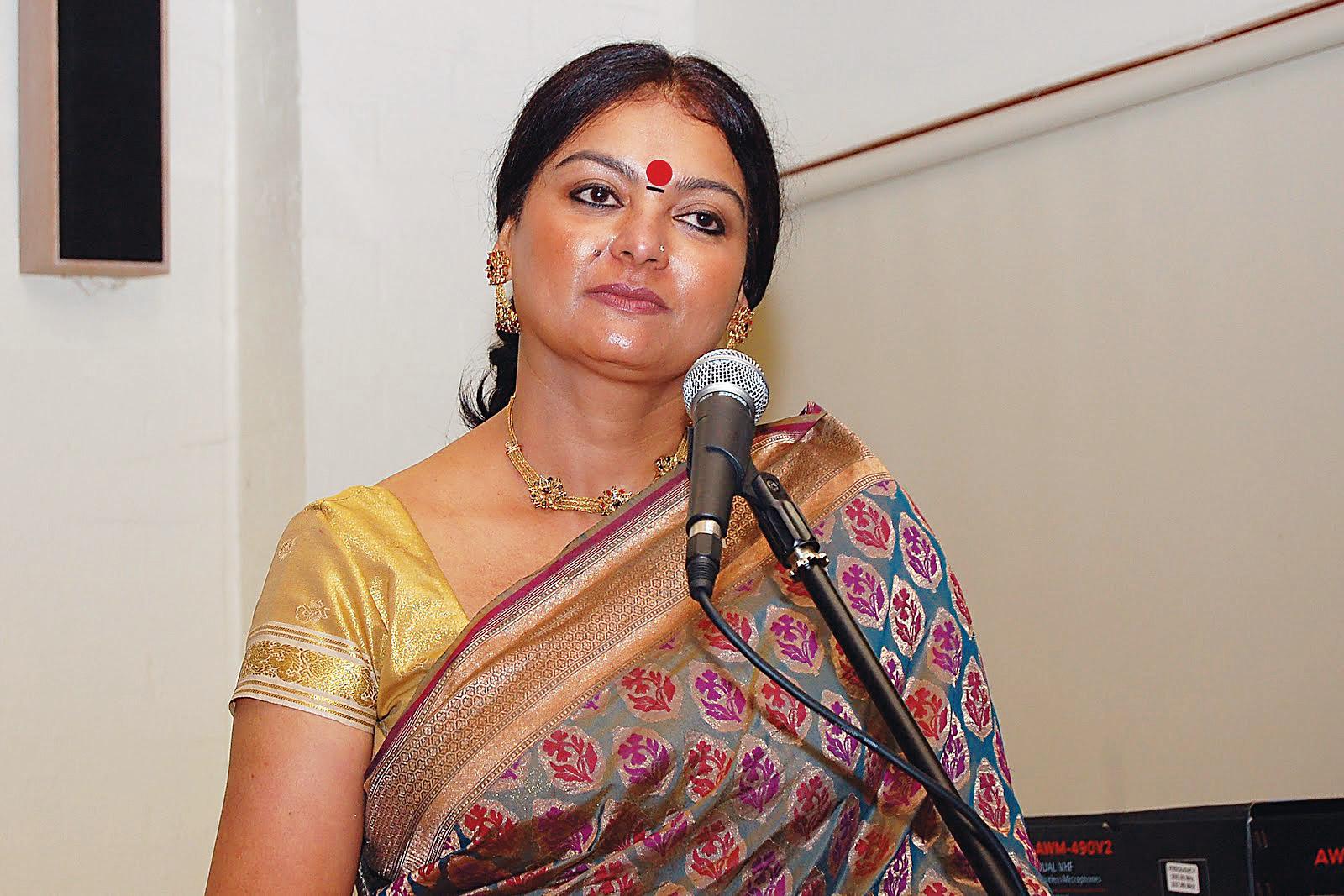
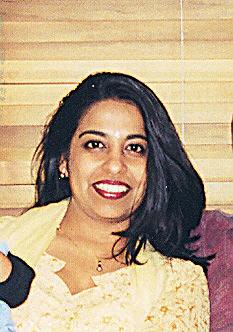
A four-page project that Monalisa had to submit for her Film Course formed the beginning of this creation. Monalisa turned the four pages into a 120page movie script and armed with great enthusiasm, ideas and creativity landed in Ushagram, an NGO near Kolkata, to film her first feature. In her movie the protagonist is a documentary maker who is inspired by the life of young Papiya, a resident of that village. Papiya epitomizes the thousands of hapless girls in rural India who suffer due to poverty and lack of education. Despite her great potential, the talented Papaya is forced to marry at a very young age and is killed during childbirth. Spending time with Papiya makes the documentary maker realize how distanced she had become from her own son in the US and she returns to make amends.
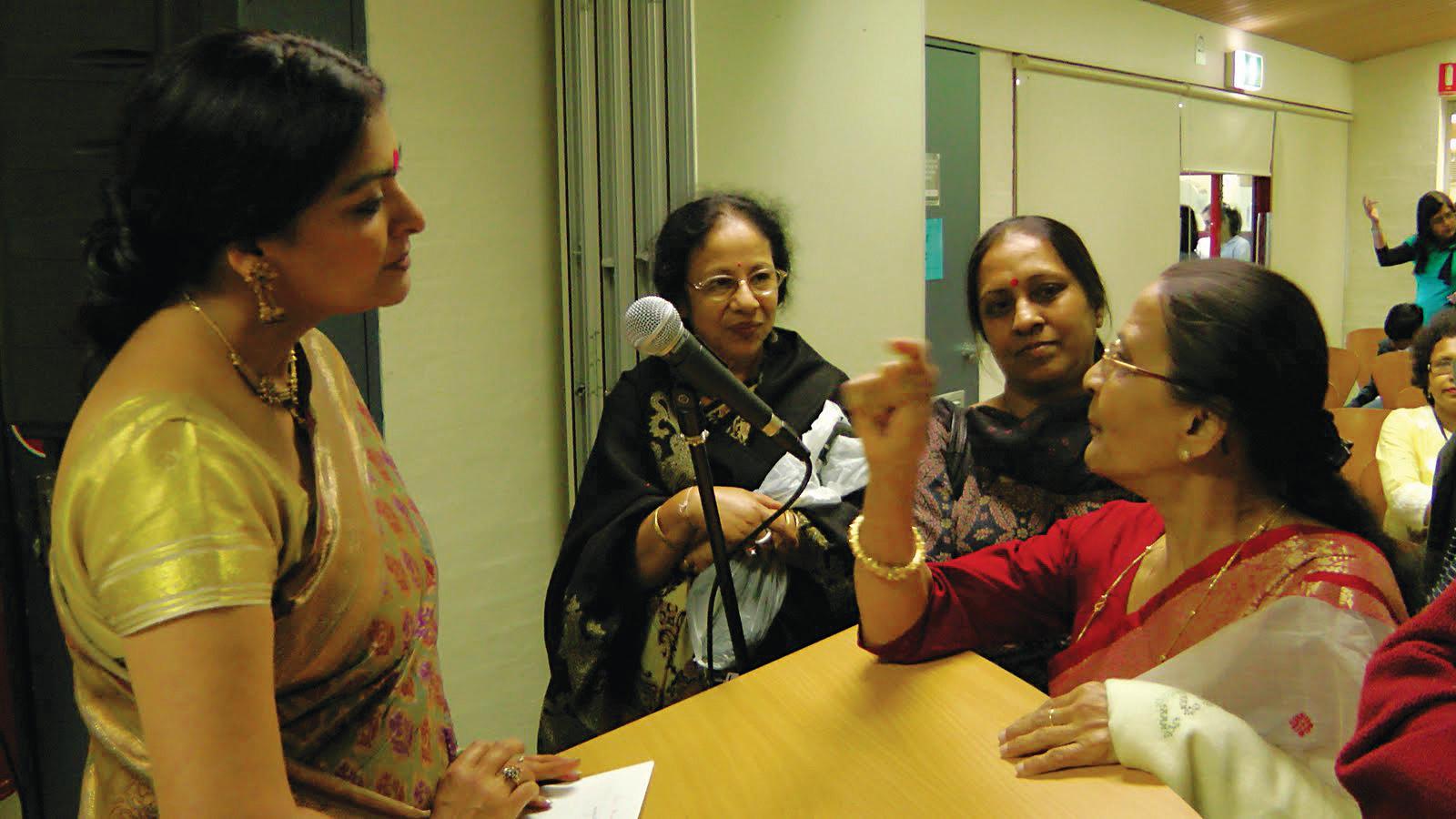
In Lost Mother Monalisa observes that just offering financial help does not solve the many problems faced by people in rural India. In her movie, despite her protagonist’s offer to pay for educating Papiya and supporting the family, the girl’s parents still force her to marry young. So what could well-intentioned people do to
Lost Mother was also screened last month at the Monash Asia Institute in Melbourne. Previously Monalisa’s film was selected and screened at the Kolkata Film Festival in November 2010. She will be taking the movie to the Probashi Film Festival in London around September, and the Habitat Film Festival in New Delhi later in May. Her movie is being distributed by Data Bazaar, a distributor of Bengali Films in the US who soon intend to put the movie in digital portals and on TV channels. Renowned Director Mira Nair once famously said, “If we don’t tell our stories no one else will”. Monalisa, like many other film-makers, has made a movie that inquires into the difficult balance between separation and integration that shapes the consciousness of first-generation émigrés and their children in different ways. If you attempt to enter the cavern of Monalisa’s protagonist’s mind, you are bound to find something that will resonate with you.
MAY 2011 <> 23 INDIAN
LINK
Monalisa Dasgupta
Speaking with members of the audience after the screening
www.indianlink.com.au PEOPLE
Monalisa with Madhumita Bhattacharya of the Monash Asia Institute
Sydney Sais celebrate Baba
Devotees of Satya Sai Baba gather to pay homage to his contribution to humanity and recount experiences of his influence on their lives
BY USHA RAMANUJAM ARVIND
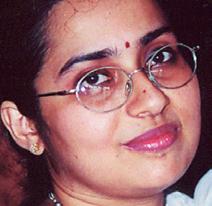
On April 26, Sathya Sai Organisation Australia’s New South Wales wing celebrated the life and teachings of Sathya Sai Baba with a moving memorial service at the Hills Centre, Castle Hill. The charismatic octogenarian, who gave up his physical being at Prashanthi Nilayam recently, is noted the world over for his outstanding contribution to humanity through Bhakta yoga, Gnana yoga and Dharma yoga. And the memorial service reflected just that.
Senior office bearers and devotees in the East and West region of NSW congregated to remember their beloved guru by reaffirming his lifelong teachings of charity, humanity and selfless service. The thanksgiving ceremony was marked by bhajans, kirtans and chanting. Speeches by followers highlighted Baba’s illustrious life and times and the incredible network of faith he created. Devotees, young and old shared their very personal experience, of how Parthi Sai, who is recognised as an avatar of Shirdi Sai, not only touched their lives but also transformed them to a new consciousness.
Zone 3 of Sathya Sai Organisation, which includes Australia, New Zealand and Papua New Guinea was represented at the obsequies by Chairperson, Pal Dhall.
“Baba is forever with us, and our hearts are filled with His love,” stated Dhall in a net message to the region.
“He has left His body but He will always be in our hearts, not just in this life but in all the lives we will have in the future into eternity. The best manner in which we can serve Him now is to continue with His Divine work,” he added.
“Sathya Sai Baba’s Mission has been and continues to endeavour to awaken us to our own reality as Divine sparks and to help us lead lives in this realisation. His wish and His mission is for us to live God centred lives. Let us rededicate ourselves to His Divine Mission of universal unconditional Love with renewed vigour and energy. Let us continue with the work for which He prepared us with so much love. And let us start this now by recalling Him in all His Divine glory as our Lord, the Poorna Avatar of Kaliyuga who spared nothing to bring us closer to our own Divine nature. We are privileged to be part of His organisation and to have been touched by Him,” he concluded.
In his address, Central Coordinator, Neville Fredericks reaffirmed this very message. “The passing of Baba is a momentous event for the tens of millions of his devotees around the world. Understandably we may experience a sense of loss at this time. His life has been one unprecedented stream of Divine Love and Service. His discourses will provide humanity with wisdom and
guidance of a quality and breadth not seen before in the history of the world. They will become the Holy Scriptures for millions, for centuries to come.
Our primary task is to keep our focus on the Sai who is in our hearts. The Sai who will always be there, prompting, warning, and inspiring us as we journey through life”.
“It is Baba’s simple everyday thinking that really struck me. He makes us all aware of the innate divinity in each one of us,” reminisced Krishnan Nair, Deputy Central Coordinator of the Australian chapter. Talking to Indian Link nostalgically about his induction into the Sai order, Nair went back three decades to when the seeds were first sown.
“Back in 1969 I attended a weekend retreat on the invitation of my colleague in Malaysia. Baba’s ideology and teachings stirred a chord in me and the bhajans were very elevating,” he revealed. “Later I happened to listen to the lectures of journalist and spiritual enquirer Howard Murphet, who has written several books on the Sai philosophy. Since then my pathway became clear and Murphet quite literally became my mentor, leading me onto Baba. I believe my duty is to continue his good work and reach out to as many as possible by creating a platform to realise the divinity in each other,” he elucidated.
Nair’s family is also deeply into Sai service having devoted themselves to lead fellow believers at Strathfield and Campbelltown centres.
So has Baba’s passing left a deep void?
“Of course, it is a loss to mankind at large,” Nair admitted. “But Baba has prepared all of us Sai bhaktas very well and taught us how to carry forward his noble traditions. Such is the influence of Sai leadership. What we need has already been given, and everyone will continue till the boost is needed. Baba has temporarily left the classroom. He will, however, be back in another incarnation,” he added.
In the meantime, devotees worldwide are already carrying forward the iconic legacy of Shirdi and Puttaparthi.
A village boy who became demi god
Sathya Sai Baba, who died at Puttaparthi in Andhra Pradesh on 24 April, was seen as a reincarnation of god by millions, having preached an eclectic blend of Hindu religion since the time he claimed to be an ‘avatar’ at a young age of 14.
The many attacks by rationalists on him and what he stood for did not derail the immense following he achieved as he grew from this once obscure hamlet to achieve demi god status in India and abroad.
Born Sathyanarayana Raju on Nov 23, 1926 in Puttaparthi, his devotees claimed he started singing Sanskrit verses, of which he had no knowledge, one day in March 1940 after being apparently stung by a scorpion.
Within two months, the teenager claimed to be a reincarnation of the more famous Shirdi Sai Baba, who had reportedly stated before his death in 1918 that he would reappear in the then Madras Presidency eight years later.
In no time, the boy gathered a following as he stepped into the world of spirituality. Word spread that Raju could make objects
such as food and sweets materialise out of thin air.
As time went by, and he came to be recognised for his mane and flowing orange robes, the boy transformed into Sathya Sai Baba, frequently producing with a flick of his hand vibhuti (sacred ash) and small objects such as shivlings, rings and necklaces.
Puttaparthi became his base, eventually transforming the once small village into a lively pilgrimage centre, with its own railway station and air strip.
The spiritual guru built a temple in 1944. Four years later he founded Prasanthi Nilayam (Abode of Supreme Peace) at Puttaparthi.
He also opened ashrams at Whitefield on Bangalore’s outskirts and at Kodaikanal in Tamil Nadu. He made it a point to tell his followers not to give up their original religion.
He preached: “My objective is the establishment of sanatana dharma, which believes in one god as propitiated by the founders of all religions.”
Sathya Sai Baba, however, ran into critics who repeatedly challenged him to make the objects materialise in “controlled conditions” -- to prove that he was not indulging in trickery.
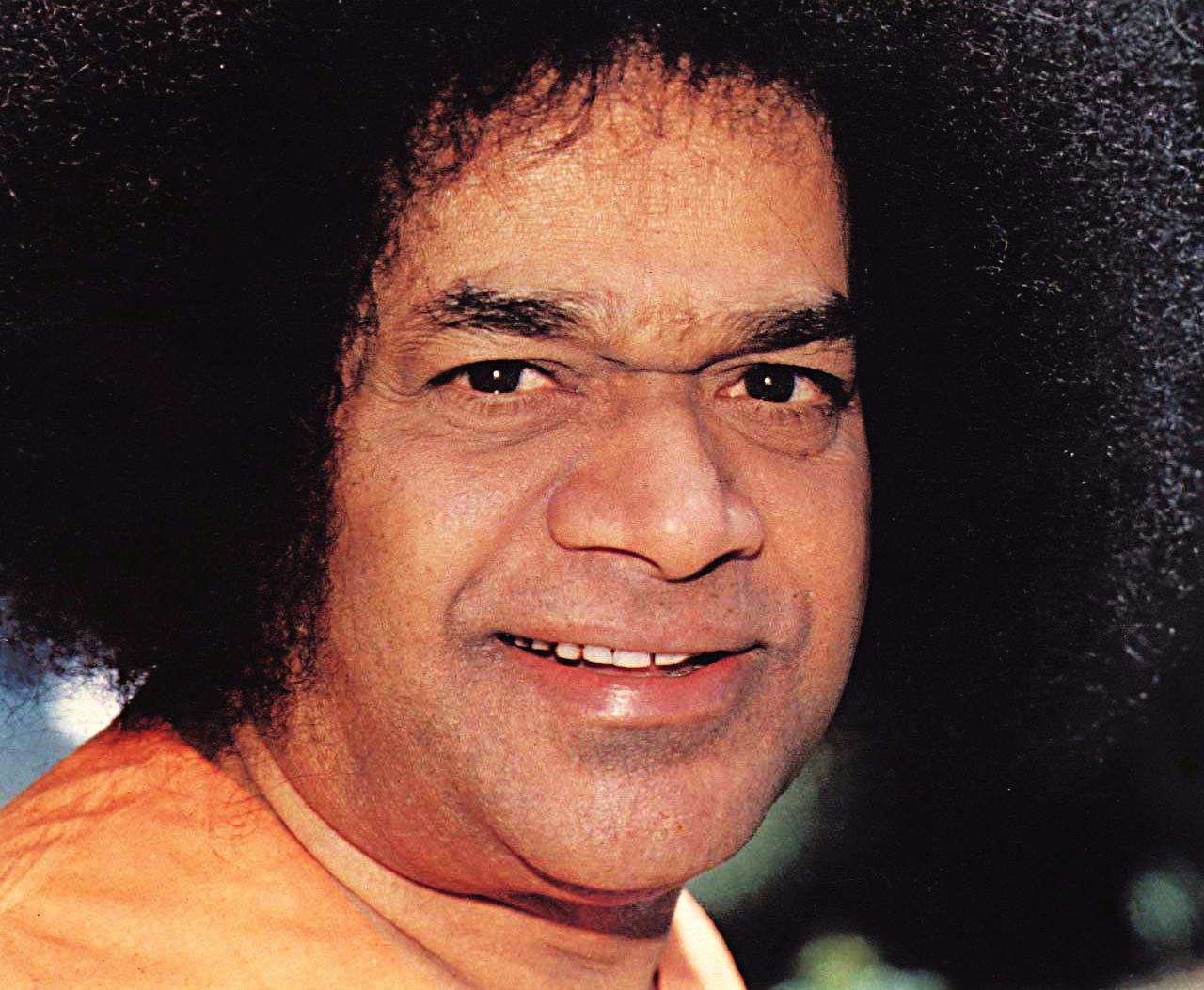
The godman brushed away the attacks, which abated over the years, even as his spiritual empire expanded. Today, his devotees are spread over some 130 countries and number in millions.
Simultaneously, Sai Baba plunged into charitable work.
His movement began providing free medical treatment, both in Puttaparthi and Bangalore, as well as free education for the poor.
Sathya Sai Baba was also credited with unveiling drinking water schemes in droughtprone Anantapur district, where Puttaparthi is located, and to the city of Chennai.
Food is sold at hugely subsidized rates at his ashram here - even to those who do not follow him.
In 2001, the digital radio network, Radio Sai Global Harmony, was launched to spread
Sai Baba’s message of harmony and peace. He acquired a huge following that included political leaders, film stars and industrialists -- and millions of ordinary folk.
But controversies always dogged Sai Baba.
He was accused of sexual abuse. The BBC once produced a documentary that showed him in poor light.
Sai Baba remained single. Not much is known about his personal life.
The killing of four alleged intruders into Sai Baba’s bedroom by police in 1993 still remains a mystery.
From 2005, Sai Baba had been using a wheelchair and his failing health had forced him to make fewer public appearances.
Two of his elder sisters, an elder brother and a younger brother have died. Some of the children of his sisters and brothers are today active in the trusts formed by him.
Many believe he died a day after he was admitted to the hospital March 28 and that his relatives waited for an auspicious time to make the announcement.
24 <> MAY 2011 INDIAN LINK
“It is Baba’s simple everyday thinking that really struck me. He makes us all aware of the innate divinity in each one of us”.
Krishnan Nair
www.indianlink.com.au COMMUNITYSCENE
Mohammed Shafeeq, IANS
Indo-Pak ties may not be affected, but psychological impact on militant sympathisers expected: Experts
States and Pakistan will now evolve. “Pakistanis obviously have a lot of explaining to do,” said Behera. It also remained to be seen what will be the domestic fallout, in terms of retaliatory attacks inside Pakistan. “We also do not know now how the internal dynamics will change within the government.. there are too many unknowns now,” said Jawaharlal Nehru University’s Savita Pande.
Further, she said that the Pakistani establishment was in a fix right now over acknowledging any role in the raid. Except for a statement from the foreign office stating that the raid was an US operation, there has been virtual silence from the Pakistani government.
“If they say that they took part in the raids, then they will face the wrath of the extremists. If they claim ignorance, then it will look ridiculous. Either way, the legitimacy of the government is precarious,” Pande maintained.
But, any fallout on relations with India, vis-a-vis Osama’s death, is too premature, said experts. “I was anyway one of the sceptics of the talks, which may not amount to much. The main impact from today will be on their relationship with US,” she added.
A similar sentiment was expressed by P.R. Chari, research professor at Delhibased think tank Institute for Peace and Conflict Studies. “The killing should not have any implication for India-Pakistan relations as it was an independent American operation and no new revelations have been made,” he said.
“There are some outfits in India who admire Laden, if not under direct Al Qaeda command,” Rammohan said.
According to Sahni, the activities of the whatever “jihadi terrorist organisations in India, like the Laskar-e-Taiba, will continue as they are all state-sponsored outfits by Pakistan.”
He said the psychological impact of Osama’s Indian supporters could be either way. “If Al Qaeda is able to stage some major strikes to revenge their leader’s killing, there may be a new tide of support for his organisation”, he added.
“Osama had been saying for years that he may be killed anytime and that he will die as a martyr. So yesterday’s killing will not unnerve his supporters much.”
Sahni said it was known “all over the world that Pakistani Army and establishment have been sheltering and shielding Laden.”
“They have been helping him to shift from one place to another. Since 2004, they had kept him away from limelight. But now the game is up,” Sahni said.
Marwah said there is less chance of revenge strikes in India as the Al Qaeda’s main enemies are “the United States and the Western countries”. India has never been on the main agenda of the terrorist outfit, he pointed out.
He said organisationally, the Al Qaeda will not be affected. “Because for a few years, the operations had been directed by the Al Qaeda Shoora (advisory council) not by Laden himself. They have already a second line of leaders.
After the killing of Osama bin Laden, the evolving internal dynamics and stability of Pakistan will determine the fallout, if any, of this momentous event on its fractious relationship with India, experts said recently in New Delhi.
“It will affect us to the extent how the situation, fallout develops inside Pakistan,” said Jamia Milia Islami’s Pakistan studies
programme associate professor Ajay Darshan Behera.
India has restarted a sustained dialogue process with Pakistan last month, which was stalled for nearly two years after the 26/11 Mumbai terror attack.
The world’s most wanted terrorist was shot dead in Pakistan, ending a 10year manhunt that intensified with the traumatic Sep 11, 2001 terror attack on the World Trade Centre in New York and the Pentagon.
“Justice has been done,” declared US President Barack Obama from the East Room of the White House describing how American military and CIA operatives finally cornered the Al Qaeda leader in Abbottabad, just 50 km northeast of Pakistan’s capital Islamabad.
India had been putting pressure on Pakistan to turn the screws on the masterminds of the Mumbai attack, especially Jamaat-ud-Dawa chief Hafez Sayeed, but there has been not much progress, with Pakistan citing the legal hurdles.
Indian Home Minister P. Chidambaram said that bin Laden’s killing “deep inside Pakistan” gave legitimacy to concerns that Pakistan was still harbouring terror organisations.
Behera said that it remains to be seen how the relationship between the United
He said that it was an absurdity to simply assume that bin Laden was in the Abottabad compound without Pakistani knowledge. “It was very unusual that Osama be hiding so close to a military academy, its like living near the National Defence Academy (in Khadakwasla),” said Chari.

Indian security experts also feel that bin Laden’s demise will not have any direct impact on India, but the “psychological impact on militancy sympathisers” will have to be watched.
Ajai Sahni, executive director of New Delhi-based Institute of Conflict Management who also runs the South Asian Terrorism Portal, said, “There will be none whatsoever impact of Laden’s killing on the security situation here. But the impact on the morale of his sympathisers will depend on any major revenge strike by the Al Qaeda “.
Ved Marwah, former governor and security expert, felt that there will be a “psychological impact of disappointment and reality call” on the sympathisers in India. “They will realise the long arm of governments will catch them wherever they hide,” Marwah said.
But E.N. Rammohan, former chief of the Border Security Force (BSF), warned that they there may be few incidents of reprisals by extremist organisations like the Kerala-based Popular Front.”
“Laden was an icon of jihadi militants. His killing will take away the aura of the leader from his sympathisers here in India. There will be a realisation that terrorism, militancy and killing civilians will not achieve anything. And at last, the gunman, however protected, will go down by another mighty gun.”

“Politically and ideologically, Osama died a few months ago, when pro-democracy movement swept Egypt, Yemen, Bahrain and other Arab countries. Instead for jihad, the ordinary Arabs came on the streets raising their issues of ‘roti, kapada and makaan’ and more importantly freedom,” Marwah recalled.
The slogans of the jasmine revolution had already confused the pro-jihadis in India, Marwah said: “And the Laden’s killing will add to their distancing from the path of gun and terror”.
However, Rammahon said there may be some revenge strikes in India too.
“The Al Qaeda network will let off some suicide bombers to prove the terror organisation is still intact.”
“Though Al Qaeda does not operate in its name in India, some outfits like the Popular Front are ideologically and operationally linked to Laden’s outfit,” Rammohan said.
MAY 2011 <> 25 INDIAN LINK
TERRORISM www.indianlink.com.au
IANS
Inflation forces India’s central bank to hike rates
Corporate and consumer loans could become dearer as India’s central bank recently hiked its short-term lending rate by 50 basis points, pegged the borrowing rate 100 basis points below it, and raised the interest rate on popular savings accounts.
Laying emphasis on curbing inflation over growth, the Reserve Bank of India (RBI) hiked the repurchase rate to 7.25 percent from 6.75 percent earlier, by which the reverse-repo rate gets automatically revised to 6.25 percent from 5.75 percent.
This is the ninth time in 15 months that the policy rates stand hiked.
The structural change in the monetary policy was announced by RBI Governor D. Subbarao before the chief executives of commercial banks at the RBI headquarters at Mint Street in mid-town Mumbai. “These policy decisions take immediate effect,” the governor said.
Other policy rates such as the statutory liquidity ratio and the cash reserve ration -- the minimum quantum of money against deposits which the banks have to retain as cash or specified government securities -have been left untouched.
The bank rate also remains unchanged at 6 percent.
“The Reserve Bank’s baseline inflation projections are that inflation will remain elevated, close to the March 2011 level over the first half of 2011-12, before declining,” Subbarao said.
Over the long run, high inflation is inimical to sustained growth as it harms investment by creating uncertainty. Current elevated rates of inflation pose significant risks to future growth,” he said.
“Bringing them down, therefore, even at the cost of some growth in the short-run, should take precedence,” the governor added, spelling out what guided the monetary policy stance for the current fiscal.
“The hikes in policy rates were on expected lines. But the increase in savings interest rate was a surprise. It is expected to have a marginal impact on the interest margins of banks,” said Dipen Shah, senior vice president with Kotak Securities.
“The banks may pass it on to the consumers in due course of time,” Shah, who is with the private client group with the financial services firm, said, implying that interest rate on corporate, housing, consumer and automobile loans could go up.
Reacting to the monetary policy, Finance Minister Pranab Mukherjee told reporters in New Delhi that the rate hikes were in order since it was necessary to contain inflation that had started behaving “erratically” again after showing signs of easing.
Talking to reporters in a briefing at the RBI headquarters, chief executives of banks said loans would become costlier but the quantum of the increase in interest rates on loans would depend on individual banks.
“Interest rates on short-term deposits at banks may rise,” State Bank of India Chairman Pratip Chaudhuri said.
The chief executive of India’s largest private lender ICICI Bank Chanda Kochhar too said the increase in rates would be passed on to consumers.
But industry bodies strongly opposed the latest rate hike and said tackling inflation should be done by dealing with supply side issues and curbing government expenditure.
“This is certainly a very hawkish monetary stand, one which would make the investment environment even more difficult. We are afraid that with growth slowing, as now admitted by RBI, employment targets will not be achieved and this could generate greater social pressure,” Rajiv Kumar, director general, FICCI said in a statement.
The Confederation of Indian Industry (CII) too was critical of the increase in interest rates.
“The continued monetary tightening without any movement on structural reforms to address supply side bottlenecks will have an added impact on capacity creation and expansion,” said Chandrajit Banerjee, director general, CII.
The repo rate, often referred to as the short term lending rate, is the interest charged by the central bank on borrowings by commercial banks.
The reverse repo rate, referred to as short term borrowing rate, is the rate at which the central bank borrows money from commercial banks.
The cash reserve ratio and statutory liquidity ratio determines the amounts banks have to retain in liquid assets, gold and government bonds against deposits, and together form a part of traditional instruments that help in checking liquidity in the system.
Once criticised, painter Tagore now aesthetic icon He has inspired generations of painters, yet Nobel laureate Rabindranath Tagore, who began to paint at the late age of 67, was dismissed by peers and critics as a “bad and untrained” artist during his lifetime. “The first exhibition of Tagore’s paintings in May 1930 in Paris that received an overwhelming response was later exhibited in Kolkata (in 1931 and 1932). But the audience there was strangely silent and I remember reading articles criticising his style and technique,” said senior artist Niren Sengupta.
In 1931, Tagore displayed at the Kolkata Town Hall and in February 1932 at the Government School of Art with 265 art works.
“The critics did not like Tagore’s childlike adaptation of global artistic practices - especially those from the Far East and Europe - to create a unique Indian language,” said Sengupta.
“The fact that no artist could copy Tagore’s style and ideas fuelled the resentment further,” said the former Delhi College of Art principal.
Sengupta, who inaugurated an exhibition by 35 artists from West Bengal, “A Tribute to Tagore”, at the Epicentre in Gurgaon a week before his 150th birth anniversary on May 9, said, “Tagore’s critics have been proved wrong with time.”
“His works are now a national property and sought after,” Sengupta said. The senior artist is inspired by the versatility of Tagore in his own abstract canvas that portray the poet as a man with many colourful faces.
Tagore’s art is a complex combination of doodles, word art, quaint man-animal
creatures and gaunt-faced ovoid women painted in ink, water colour, oil and mixed media.
According to a biographical volume, “Something Old, Something New: Rabindranath Tagore’s 150th anniversary volume (edited by Pratapaditya Pal)”, he “always regretted that his countrymen did not appreciate his paintings”.
His peer’s uncertainty with his style stemmed from the fact that he had no formal training in art, says the biographical volume.
Artist Nandalal Bose, alarmed by the amateurishness of Tagore’s works, patiently compiled an album of reproductions of European masters for Tagore so that he could learn to draw properly. But Tagore returned the album saying, “it could help his students”.
On his 150th birth anniversary on May 9, the focus of the India and Bangladesh governments’ celebrations will be on the poet’s art and philosophy - the lesser known aspects of Tagore.
A special digital compilation of art, “Chitravali”, will be released to coincide with his birth anniversary and a mammoth exhibition interpreting Tagore works and his original art by Indian and Bangladeshi artists will be on display in Bangladesh and India.
At the exposition, “A Tribute To Tagore”, artists use his style, technique, ideology and motifs from his compositions to translate them into their creative idioms on the canvas.
A portrait of Tagore seated in meditative
repose by senior artist Sudip Roy using the wash painting method stands out from the rest for his mastery over the medium. A charcoal composition, “Essence of Kolkata”, by Subrata Das explores the rural soul of the metropolis with the hand-carted rickshaw as a metaphor.
“When I see rain in north Kolkata - around the Chitpore area, I think of Tagore. He is from north Kolkata. The city looks beautiful during the monsoon,” said artist Dilip Chowdhury.
Chowdhury, who creates rainwashed urban landscapes with acrylic on canvas using the technique of watercolour, “reacts to Tagore’s poems as an artist”.
Artists Anup Giri and Subroto Gangopadhayay prefer to interpret Tagore’s philosophy and artistic ideology on paper. They play with Tagore’s commitment to rural reconstruction and promotion of the ethnic arts of Bengal and India on their canvas of dancing tribal men and women.
According to curator Ameeshi Tapuriah, the owner of the Art Nouveau Gallery, who has spent her childhood in Kolkata, “Any artist who is connected to Bengal cannot stay away from Tagore - they are inspired by him in some way.”
Tagore continued to paint till his death in 1941, and his brush strokes have evidently outlived the harshest of critics.
Akbar was a colourful man: Belgian historian His harem boasted of 5,000 women, 300 of whom were his real companions. His secular outlook is a lesson for
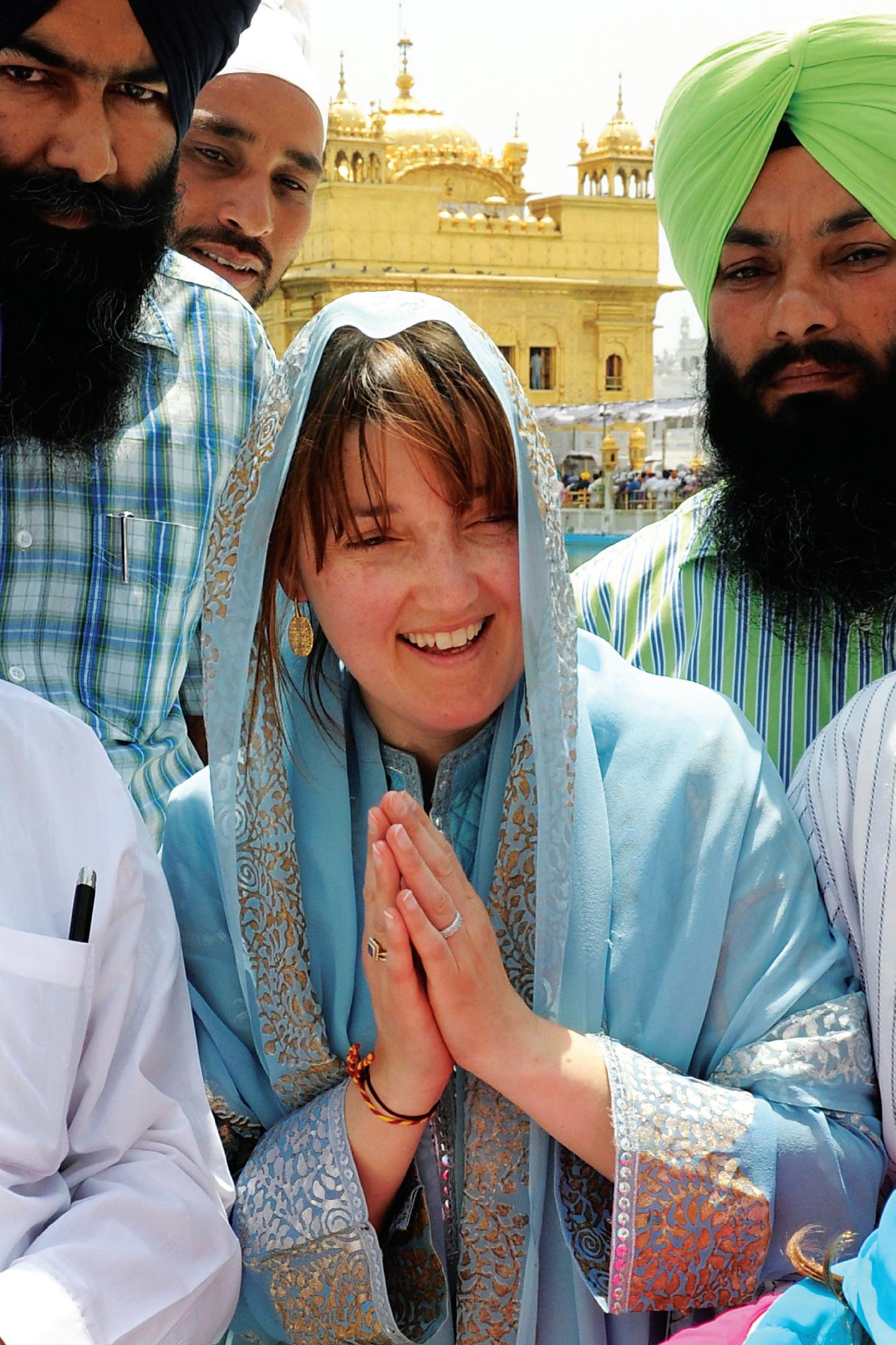
26 <> MAY 2011 INDIAN LINK
Sat Sri Akal: South Australia’s Minister of Multicultural Affairs and Member of Parliament Grace Portolesi pays her respects at the Golden Temple Sikh shrine on April 27, 2011. Portolesi along with her daughter and Australian officials visited the city and met with Australian students living in India.
HomeBush Office Call: 0418 965 834 Starts from $120 +off Parramtta Rd +next to Strathfield +include all expense
Photo:AP
contemporary times and he understood, much before any Muslim ruler of India, that the country could be strong only if its inhabitants were united. Mughal emperor Akbar was fundamentally “an eclectic, a rationalist as well as a mystic”, says Belgian historian and writer Dirk Collier.
“Akbar’s wives received an allowance of Rs.1,500 a month, which helped them fend for their families and children. They were financially well-off. Many of the women in his harems commissioned monumental buildings,” Collier revealed in an e-mail interview from Knokke, his hometown in Belgium.
“His Hindu queen, the princess of Amber (in Rajasthan), amassed a personal fortune more than many European traders of that era by freighting silk and spices on ships across the seas. Records cite that Akbar often chatted with her about her trade.”
Collier has brought Abu-l-Muzaffar Jalaluddin Muhammed Akbar, or Akbar the Great, alive from the tomes of history in a fact-laced-with-fiction novel, “The Emperor’s Writings”. The book, published by Amaryllis, an imprint of Manjul Publishing House, arrived in Indian bookstores last week.
The book unravels Akbar, who ruled from 1556 to his death in 1605, as a man with a colourful personal life, a man who was fond of female company but could not work up passion like his son Jahangir. His women remained mostly companions, Collier says.
For Collier, a senior board member of Johnson & Johnson (in Belgium) and a visiting professor at Antwerp University, the novel is his first journey into the heart of the Mughal empire and Indian historical writing.
Written in the form of an epistle - or a long letter - from Akbar to his son Jahangir, the volume chronicles the life of the Mughal emperor in a first person account and all that he wanted to tell his rebellious son about politics and warfare.
“Whatever it was that had estranged Jahangir from his father, it completely disappeared after Akbar’s death. It is a wellknown historical fact that Jahangir tried to emulate Akbar and held him in the highest reverence, in speech as well as in writing,”
Collier says.
The 54-year-old writer said “when in Agra, Jahangir would often visit his father’s tomb at Sikandra”.
“It is said he would always dismount, kneel down and rub his forehead on the doorstep of the mausoleum,” Collier said.
Collier said he was inspired to write the book by a “17th-century painting, commissioned by Jahangir, showing him holding his father’s portrait.”
“It is as if Akbar is gently talking to his son. Right from the start, that is exactly how I imagined my book - Akbar talking to his son, from beyond the grave,” Collier said.
“It took me seven years to write the book,” he added.
The writer came upon Akbar for the first time in 2002, while reading books on the history of Goa “with a vague intention of writing after retirement.” But as he immersed himself into the life of Akbar, Collier abandoned his earlier project and decided that his debut novel should be about Akbar.
“I have read not only most of the history books of our age but also translations and contemporary Mughal sources, including the highly critical Tarikh-i-Badauni and 5,000 pages of Abu’l Fazl’s monumental ‘Akbar Nama’ and ‘Ain-i-Akbari’,” Collier said.
Akbar’s wife Salima Sultana’s accounts were another source of information.
Analysing Akbar’s political foresight, the writer said the reason why Akbar could tether the disparate Indian flock together was because “he understood more than any Muslim ruler before him that Hindustan could be strong if inhabitants, diverse as they were, were united”.
“He attempted to rule in strict neutrality. His wives or courtiers or anyone else did not require to abandon their religion. He spent countless hours convincing himself and others that even rigorously orthodox Islam is perfectly compatible with universal tolerance and pluralism,” he said.
Collier quotes Akbar’s favourite historian and confidant Abu’l Fazl to explain why the ruler’s secular religion Din-e-Illahi failed.
“Abu’l Fazl is reported to have said - with his usual discernment and wit - that ‘The Emperor is Parsi in his rites, Hindu in his food, and Sufi in his heart’.
“Akbar fundamentally was an eclectic, a rationalist as well as a mystic, who came to regard all religions as merely human attempts to honour and serve an ineffable, unattainable reality,” Collier said.
The writer will soon begin his research on Ahmed Lahori, the chief architect of the Taj Mahal, for a new book on the mausoleum and its creator Shah Jahan.
World of Indian diaspora to come alive in docu series
The world of the Indian diaspora, their life in all its shades of colours, will soon come alive in a series of documentaries that well-known documentary filmmaker Siddharth Kak and his Surabhi Foundation are currently making.
The series of 10 documentaries will be shot partly on location in countries where large numbers of overseas Indians are settled.
The documentaries will show the vast world of the Indian diaspora, telling the stories of Indians settled in countries like Malaysia, Mauritius, the UAE, Oman, Britain, the US, Canada, South Africa, Uganda, Trinidad and Tobago, Guyana, Fiji, Singapore and Australia.
“The film team will travel to 14 countries and trail the stories of Indian emigrantstheir struggles, triumphs and assimilation into their adopted countries,” said Pooja Khemani of the Surabhi Foundation for Research and Cultural Exchange.
The film crew has already completed shooting in Singapore, Malaysia and Mauritius.

“In Mauritius we plan to tell the story of the Indian community’s arrival in the island country, their history and political struggles.
“We will film the rich cultural and ethnic diversity of Mauritius as well as the blending of cultures that has occurred over the generations,” explained Pooja, who is an assistant director of the project.
Each documentary will show the history of Indian migration to the country mainly through preserved documents, old records, photo albums, interviews and through the interesting stories of some of the families who were among the early Indian migrants.
The films will record the achievements of the Indian communities and successful
individuals in different spheres of activities.
The stories from Mauritius, Trinidad, Guyana and Fiji will have a lot of farm background as Indians landed there over a century ago to work on sugarcane plantations.
The pioneering labourers made great sacrifices and laid the foundations for future generations. Their descendants now occupy senior positions in all walks of life, ranging from business to politics and community organisations.
The diaspora in the US, Britain, Canada and Australia is of more recent origin and more closely connected with India, said the Surabhi official.
Though a few Indians had migrated to these countries as far back as the last decades of the 19th century, regular migration began around the 1970s when the governments in these countries relaxed their immigration regulations to allow entry for Asians.
The Indian communities there now form a sizeable minority.
The Gulf countries present an entirely different picture as far as the Indian diaspora is concerned.
With over four million Indians residing in the Middle East countries, the Indian expatriates have become major contributors to the massive economic development in the region.
While a majority of Indian expatriates are labourers in the Gulf countries, there are a number of businessmen, some of them highly successful, who arrived in the region several decades ago.
The remittances from Indians in the Gulf region make a substantial portion of the total remittances sent back home by Indians living abroad.
The tales from the desert countries will be an important part of the 10 documentaries Surabhi is currently filming.
Siddharth Kak, documentary filmmaker and television producer, has made more than 100 documentary films. Kak became a familiar figure for Doordarshan audiences for making and presenting the long running cultural magazine “Surabhi” for the national broadcaster.
MAY 2011 <> 27 INDIAN LINK
IANS
Next stop Mumbai: British rower Roz Savage, 42, sets off from the Western Australian city of Fremantle on April 13, 2011, bound for Mumbai’s Gates of India monument, an epic 6,500 km journey that will take between five and six months. Savage has already crossed the Pacific and Atlantic oceans solo in her 23-foot rowboat, dodging fierce storms and near-drownings. The Indian Ocean voyage -- her longest single row to date -- will cap the “Big Three”. The keen environmental campaigner hopes to raise money and awareness about ocean pollution.
Photo:AP / HO / ROZSAVAGE.COM / BIRDSEYE VIEW PHOTOGRAPHY
Pammi Kebabs
I have always drawn comfort from two sources: mostly from my mom and in her absence, from food. I love both and the feeling has always been reciprocated. As a result I am quite a well-fed (pleasantly plump) and well-cared (thoroughly spoilt) child of this earth. The fact that mom was a brilliant cook added layers to my persona in more ways than one. She initiated my relationship with food from the first morsel lovingly put in my mouth, to the fun times cooking together in the kitchen to the constant adherence to ‘life revolves around food’ philosophy that dominated our typically Punjabi household. Today she is no longer with us, but her recipes constantly remind me of my warm and wonderful mother. This Mother’s Day I send a culinary salute to my darling mom by sharing this all-time favourite Shammi Kebab recipe, also renowned as ‘Pammy’s kebabs’ or for me simply as ‘mummy’s kebabs’.
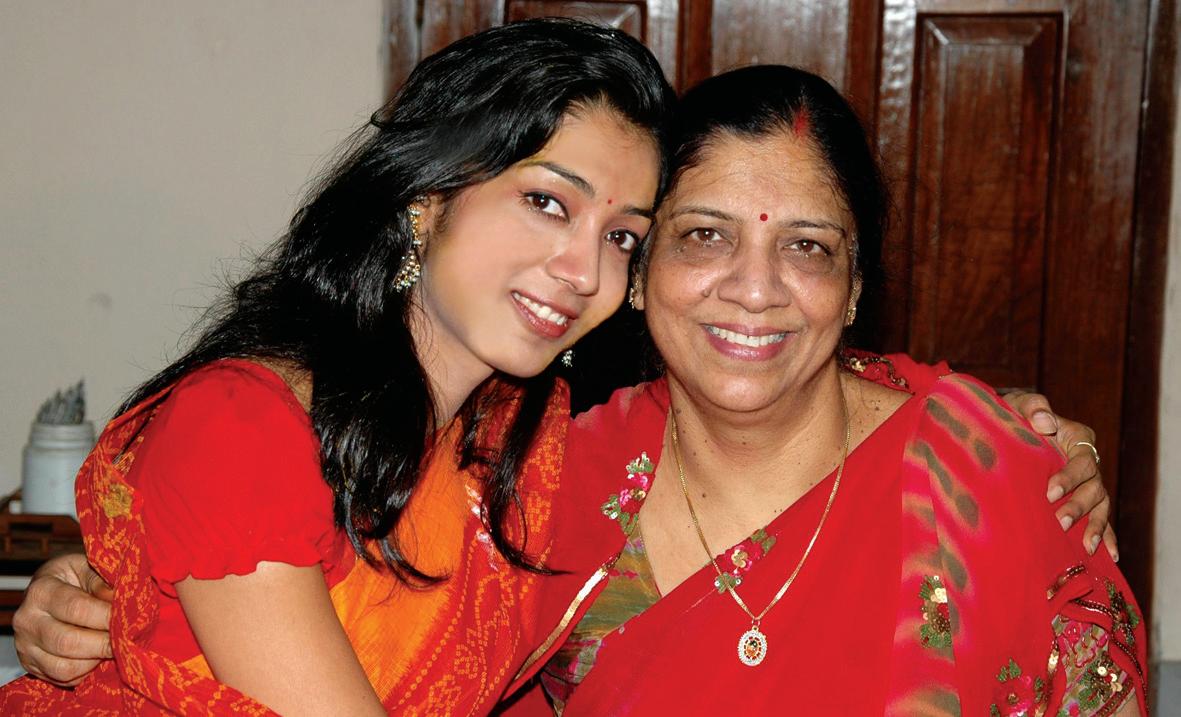
Diwali parties were always hosted at our home, and as I grew older I realized that it was because of mom’s endless supply of kebabs. The card session would continue night-long, along with the consumption of innumerable kebabs. Mom never tired of shallow frying fresh lots of kebabs every
Ma ke haath se!
hour till early next morning when the last of our guests would leave, reluctantly, to go home. “Bhabhiji! Aapke haath ke kebab khaane ke liye to hum baazi haar ke bhi khush hain” my dad’s friends would say after losing mostly to dad, who was an expert at the game, and mom would beam with pleasure. On this night no one fussed about our bedtime and we stayed up late, tucking into mom’s yummy kebabs. It was a winner of a night for all. Mom never took short cuts when preparing anything, especially these kebabs. According to her they will only ‘melt in your mouth’ if the ingredients are ground lovingly to perfection. The traditional pestle and mortar was used to grind the lentils and meat together; however I have now replaced this method with a quick whirl in the grinder for the sake of convenience. Over the years I have added my own twist to this recipe keeping in mind ingredients that are easily available and less time consuming (sorry, mom). Either way this one is sure to tantalize the taste buds.
Shammi Kebabs
• ½ cup split yellow/Bengal gram (chana dal) lentils
• ½ kg minced lamb/goat meat (try fresh mince from a butcher or deli for best results)
• 1 medium onion chopped
• 1 inch ginger chopped fine
• 1 tsp garlic paste, or 4-6 cloves of garlic
Winning over hearts
For someone used to sitting at the dining table, waiting for mum to serve some of the best lip-smacking, mouthwatering dishes, stepping into the kitchen wearing the chef’s hat could take a toll, at least it did for me!
When it was time for me to tie the knot a year ago, my mum’s advice was the remixed version of the saying, “The way to your man and in-laws’ hearts is through the stomach”. Well, my man I knew, could digest a halfcooked meal served by me, but I had no intention of making my in-laws suffer. So I got set my first cooking class from the world’s best chef, my mom and this is what we made. You can’t go wrong with palak chaat, which is a welcome change to the aloo and papri chaats. Thanks Mom, for adding the right ingredients in my life and making me the person I am!
Palak Chaat
• 12 leaves palak (spinach)
• 200gm yoghurt
• Tamarind chutney
• 4 medium sized boiled potatoes, mashed roughly
• 3 medium sized onions, chopped
• 1 cup gram flour (besan)
• Chat masala
• Chopped coriander leaves for garnishing
• ½ pomegranate for garnishing
• ½ cup sev
• Black Indian salt
• Salt
• Red chilli powder
• Oil for frying
Add ½ cup water to 1 cup gram flour to make a batter. (Make sure the besan batter is not too thin). Dip the cleaned spinach leaves in the batter so that the mix completely coats the leaves. Keep aside. Heat oil in a pan and
• ¼ bunch fresh coriander leaves chopped fine
• 4-6 mint leaves chopped fine
• 1 egg whipped with salt and red chilli powder to taste
• ¼ cup bread crumbs (optional) if you like them crisp
• Salt to taste
• Oil to shallow fry
Wash and soak lentils in 1 cup of water for an hour, drain and keep aside. In a pressure cooker put washed mince, soaked lentils, pinch of turmeric, garam masala, onions,
for pressure to subside, open the cooker and cook on high heat till mixture is dry. Remove from heat. Wait for mixture to cool and then grind it in a food processor. Add coriander, mint, egg and green chili to the mix after removing it from the processor. Mix well and make roundels by flattening balls of mixture into shape. Use breadcrumbs if the mixture is too fine and crumbly, or if you like the kebabs crisp. Shallow fry the kebabs in a pan till they are golden brown. Drain onto an absorbent paper and serve hot with onion rings and mint chutney.
 Preeti Jabbal
Preeti Jabbal
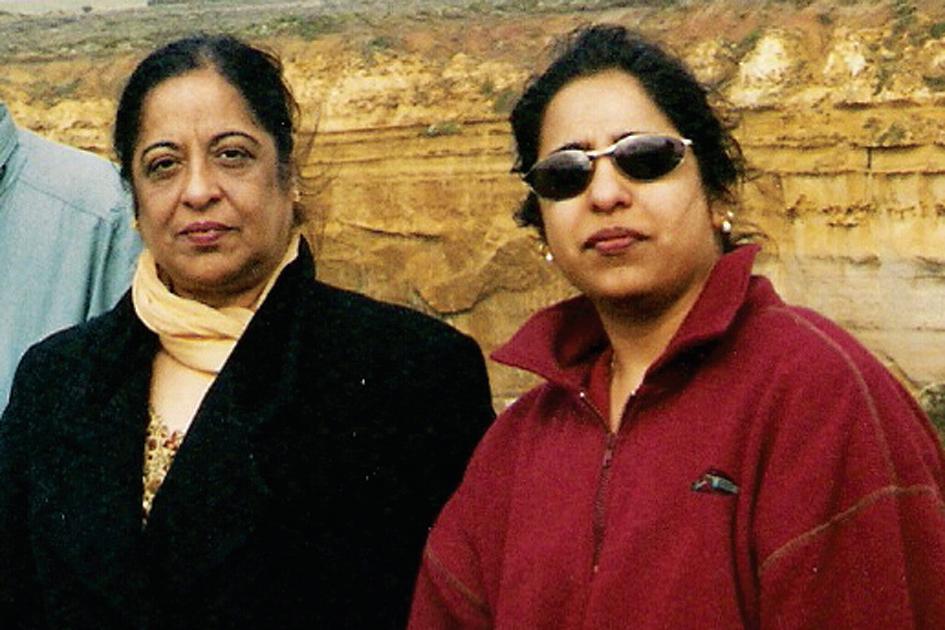
deep fry the leaves till crispy. Remove and place in a serving plate
Make a thick paste of the curd. Pour this over the fried spinach leaves. Add mashed potatoes, chopped onions, chaat masala, red chilli powder, black salt and salt, as per taste.
Pour the tamarind chutney over, garnish with coriander, sev and pomegranate, and serve.
28 <> MAY 2011 INDIAN LINK
Most mums have a special recipe, something that is a trademark of their talent. This Mother’s Day we share the secrets and stories behind some of these masterpieces.
Priyanka Tater
Mum’s little helper
My mom Sheila was a great cook and would pour so much love into her cooking that our kitchen was always open 24/7, and our house always seemed full with the dining table constantly occupied by different faces. My earliest memory of really cooking with my mother takes me back to 1978, when we first moved to Mumbai. Mom used to attend baking classes at the YMCA in Colaba, and who was the happiest person to go along?


Me!
I would sit patiently, listening to the instructions carefully, watching the method and longing to taste the goodies even before they came out of the oven. Mom and I would return home and bake each recipe once again. Whether Indian or international cuisine, Mom would try out new recipes regularly. I was only too eager to fill her recipe books and in the process I learned too. Her pizzas and cakes were legendary, and she had the best aide helping her out…that’s me! I remember Mom trying out Cocoa Cake after we went to a friend’s birthday party and sampled one which was yum! So we had to come back home and make it with our own
changes, of course! How can you use vinegar in cake? But we tried it out and it was over before you could ask, “Want some more?”
Over the years I really enjoyed helping Mom in the kitchen and developed the skills I needed to venture out on my own. Today I love doing what my Mom did - making and serving something new. Thanks Mom, for what I am today. This Mother’s Day I want to tell you that I love you and am thankful for all that you have done for me. Even though you smile at me from the heavens above, I know my time spent with you always inspired me to make mouth-watering delights for my family and friends. Cocoa Cake is a special recipe from my mother’s kitchen. Enjoy!
Cocoa Cake
• 1¾ cups flour
• ¾ cup cocoa (use ½ cup if it is very strong)
• 1 level teaspoon of soda (not baking powder)
• 1 cup sugar
• ½ cup butter
• 2 eggs
• 1 cup milk
• 1/3 cup vinegar
• 1 capful vanilla essence
•
Monsoon munchies
I must admit upfront that when mom was cooking, I would not help out with all the tedious stuff. But once that was over and the presentation had to be done, I was right there wanting to be the centre of attraction and be seen as the creator of this wonderful dish! My mum would never mind, happy to forego all the appreciation and credit for her dishes, to me. This recipe was our special snack on wet monsoon evenings in Mumbai.
The magic of monsoons have always been special for every Bombayite/Mumbaikar, when the city looks its best. The skyline changes hue from crimson to blue to grey.
And the season would not be special without the fun of eating roadside food during the rains! Popping spicy pani puris, wada pavs, chana chor garam, bhutta and even the vegetable grilled sandwiches with extra cheese… all are hard to resist.
When it turned dark and grey outside, it’s ironic how everyone in unison felt like having some adrak chai along with kanda bhajia or hot wada pavs. Mum would generously offer to make us these to avoid us having food from the roadside and the added bonus of papad rolls were exactly that. And being Sindhi, we would never run out of papad, even if we ran out of besan!
My favourite part was eating these before others could dig in.
Mum’s ‘shahi’ surprise
We all have numerous memories of the basic yet vital things taught by our mothers, and one of those is cooking. My mother worked full-time and did not make regular meals at home; however when she did cook, we thoroughly enjoyed her offerings.
Now with cooking, I had this thing about doing things quickly in a fast-forward manner as we all do. On the eve of my birthday many years ago, I wanted to prepare a dessert for my friends and family visiting us that night. Not having much time on my hands I went up mum and asked, “Mum, you know how we have fast food, is there anything called fast dessert?” Mum smiled and as we walked into the kitchen, she asked me if we had enough bread, desi ghee and dry fruit for 5 people. She explained to me the two parts of a recipe called Shahi Toast – frying and garnishing. She said, “If everything is ready right in front of you, you can prepare
this dish in less than 20 minutes!” I was excited at the thought of preparing shahi toast for everyone in 20 minutes.
As per mum’s precision timing, we managed to prepare the dish in slightly less than 30 minutes, and were all set for my birthday dinner. At its conclusion, our dessert was cold and ready to be served from the refrigerator. When it arrived on the table, I was about to announce how mum taught me to prepare it but she had got in before me. She had already let everyone know that “the birthday girl has made it herself!” I looked at her and smiled, thinking, “Thanks, mum, that was a perfect birthday lesson!” And of course, it was exactly what my sweet tooth needed.
Shahi Toast
• 6 white bread slices
• 1 cup raw sugar
• 1 tbsp cardamom powder
• ½ tbsp saffron, dissolved in 20 mls
lukewarm water
• Desi ghee for deep frying
• For the chocolate icing:
• 1¼ cup icing sugar
• 1 tbsp cocoa powder
• 1tbsp butter at room temperature
• 1 tbsp boiling water
In a bowl, sieve together flour, cocoa and soda about 3 or 4 times. and keep aside. In a smaller bowl, mix 1 cup milk with 1/3 cup vinegar - stir it around until the mix curdles. Beat the eggs along with the vanilla essence in a separate bowl and set aside.
Now take a large mixing bowl and cream together butter and sugar with a spatula, stirring constantly until the mix becomes creamy in texture. Add in the beaten eggs gradually, stirring till well mixed. Add the flour slowly, continue stirring. Next, add the curdled milk, and gently fold into the mix. Take care not to overbeat the mix. Bake at 180 degrees for 40 minutes or till the cake is done. Poke a knife or skewer into the cake to check if it is fully baked; if it comes out clean, the cake is done. Serve with your favourite ice cream or chocolate
Papad Rolls
• 8 papads
• 200 gms paneer
• 1 tsp red chilli powder
• 1 tsp cumin powder
• ½ tsp turmeric powder
• ½ tsp chaat masala
• Few springs fresh coriander leaves
• ½ tsp ginger
• Salt to taste
• Oil for deep frying
Mash paneer with a fork and add red chilli powder, cumin powder, turmeric powder, chaat masala, chopped coriander leaves, chopped ginger and salt. Mix well. Divide it into eight equal portions. Wet the papad with a few drops of cold water and place one portion of paneer in the centre. Roll the papad and fold the edges inwards. Seal them
sauce, or ice with chocolate icing when completely cool.
To make the chocolate icing, sift the icing sugar and cocoa powder together in a bowl. Add in butter and boiling water, and stir till smooth and creamy. Spread evenly over the top of the cake and serve.
Neelam Vasudevan
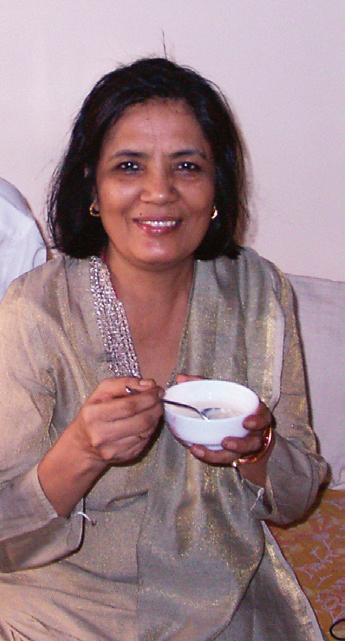

with water so that the paneer mixture remains intact within. Pierce the roll with a toothpick. Heat oil in a kadai and deep fry the papad rolls on moderate heat for about a minute. Drain onto an absorbent paper and serve hot. Paneer can be substituted with boiled potatoes.
• 2 tbsp sliced/chopped almond and pistachio nuts
• Half cup condensed milk
Dissolve the sugar in 2 cups of water and boil until a syrup is formed. Add saffron and cardamom powder to the mix. Cut the bread slices into triangles and deep fry in pre-heated ghee until golden brown. Dip the fried slices in warm sugar syrup and place in a plate immediately or they might become soggy. Add condensed milk on each slice, garnish with almond and pistachios and serve as is, or store in the fridge and serve as a chilled dessert.
Astha Singh
MAY 2011 <> 29 INDIAN LINK www.indianlink.com.au
Pinky Bhatia
Simplifying the
My mom had her hands full while we were growing up; with six kids, a full time career and everything that comes with a seriously extended and sociable family back home. She has never liked spending much time in the kitchen and so she is always looking for ways to simplify recipes, find short cuts and reduce cooking times. I in turn, have inherited her aversion to unnecessary toil in the kitchen. I like to blame my creative work for often making me lose track of time, and coupling this with one pre-teen and three teen kids, you might understand my necessity of scrounging for delicious, easy recipes which don’t take up the whole day. Mom’s seekh kebab recipe is one that we simplified together to make it an almost fast-food
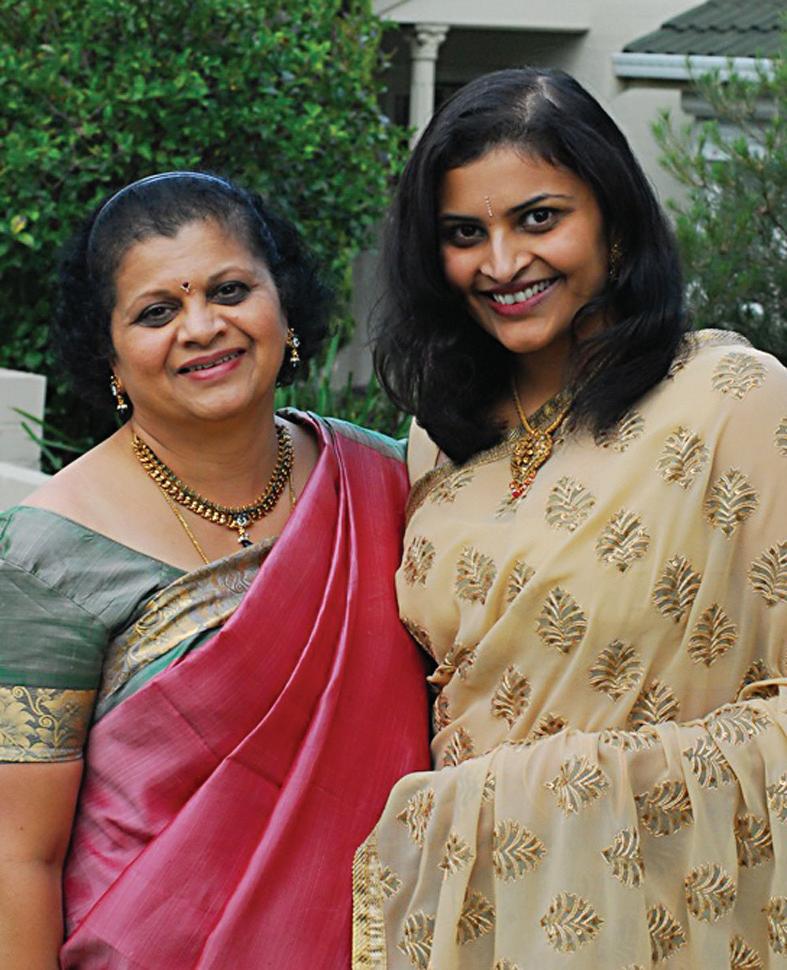
Quick fix mix
After marriage when I realised that I needed to learn a few recipes urgently, I turned to mum Maya for easy ones that would be quick, needing very little preparation time and which could be made quickly after returning from work or could be kept overnight. Mum’s aloo dhania was an ideal one because even the potatoes could be substituted with meat for non-vegetarians. It is always on my menu when we invite friends over for the first time for it never fails and gives the illusion that I am a great cook.
category item which the kids and husband love. It can be whipped up in minutes and stores well in the freezer for ages. Very handy when those unexpected guests drop in! Thanks Mom, for all you’ve done, borne and forgiven. I’m eternally indebted. Have a happy Mother’s Day.
Seekh Kebab
• 500 gms mince meat
• 2 onions
• 2 slices of white bread
• 1 small bunch of coriander
• 3-4 green chillies
• 1 tsp garam masala powder
• 2 tbsp oil
• Juice of half a lemon
• Salt to taste.
Put the bread slices, onions, coriander and green chillies in a food processor and chop.
Add the mince meat, garam masala, salt and chop till everything is well combined. Add lemon juice and oil, and mix well. Divide the mixture into balls of about 2 inches in diameter and then elongate to form kebabs. Cook in a frying pan with a little oil on medium to low heat, till nicely browned and cooked through. Serve with rice, raita and a green salad or use in wraps with mayo, lettuce, tomato, cucumber, onion and your favourite sauce.
Farzana Shakir
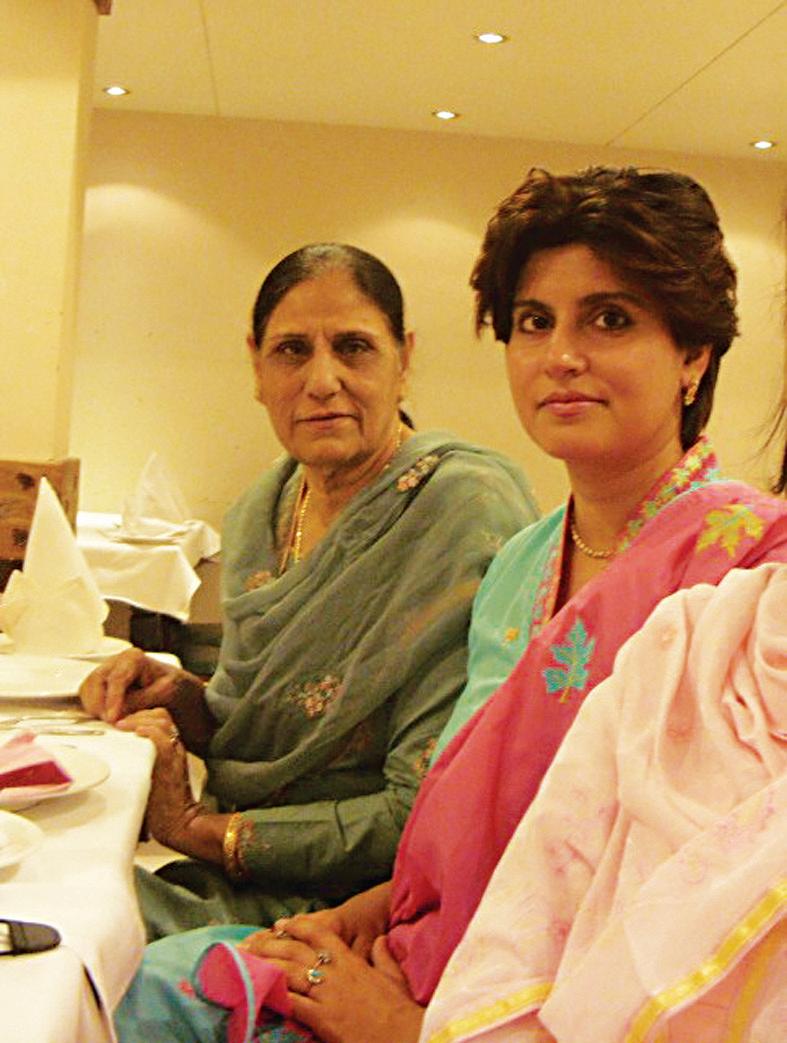
Aloo Dhania
• Chat potatoes
• 1 carton sour cream
• 1-2 bunches fresh coriander
• 10 pods garlic
• 1” fresh ginger
• 1½ tsp turmeric powder
• 3 fresh chillies (or to taste)
• 6 tsp cumin powder
• 16 tsp yogurt
• 1 tsp salt
• 2 tbsp oil
Peel the potatoes and prick a couple of times with a fork. Keep aside. Next, puree all the ingredients in a blender. Put the oil
Anytime Majjige Hulli
in a large pan and pour in the pureed mixture. Add potatoes and place on heat. Let them cook on medium heat with the lid on the vessel. When the oil separates and the potatoes are soft, add salt. Garnish with a few leaves of fresh coriander Serve hot. If left overnight the paste thickens, and can be used as a sandwich spread.
Rani Jhala
To me, this dish is one of the tastes of home. When working in London I would have sudden cravings for it, and despite Mum teaching me how to make it several times in the past, I would invariably forget the recipe. My desperate urge to eat Majjige Hulli would override any sensible awareness of geography and time differences, and I would immediately call Sydney to ask Mum how to make it. And she would patiently explain, regardless of whether it was 2am or in the middle of a busy working day. We would then chat about anything and everything else afterwards. Perhaps it was not just comfort food I missed, but also a comforting voice!
Majjige Hulli (Yoghurt-based Sambar)
• ½ kg vegetables, chopped into 2-3 cm pieces- these can be white pumpkin, chokos, fresh spinach, cucumber or green capsicum.
• 3 cups thick or set yoghurt, slightly sour is preferable
• 2/3 cup grated fresh (or frozen) coconut
• 1 tsp chana dal soaked in water for 3-4 hours and drained
• 2 tsp jeera (whole cumin)
• 5-6 dried red chillies
• ½ tsp turmeric powder
• ¼ tsp asafoetida powder
• 5-6 curry leaves
• Salt to taste
• 1 tbsp chopped coriander
For the tempering
• 1 tsp jeera
• ¼ tsp asafetida
• 2 dried red chillies
• 5-6 curry leaves.
In a food processer, grind the coconut, jeera, drained chana dal, chillies, turmeric and asafoetida into a rough paste, adding a little water if too dry. You can do this with a mortar and pestle if you have the time and patience!
Boil or microwave the vegetables until just tender. Leave the vegetables in the pot with just enough water to cover them, and add the coconut paste. Add salt to taste. Stir continuously on medium heat. Bring to a boil and cook, stirring, for a further 4-5 minutes. Reduce heat and add yoghurt, stir on low heat for 2-3 mins. Take care not to overheat as this will cause the yoghurt to separate.
For the tempering: In a separate small pan, heat 1 tsp oil. Add jeera, chillies, asafetida and curry leaves. Control the heat to prevent the jeera from burning and stand back from the sizzling mixture! Add this tempering to the Majjige Hulli and stir through.
Garnish with the coriander and serve with rice.
Deepa Gopinath

30 <> MAY 2011 INDIAN LINK
kebab
seekh
MOTHERSDAYSPACIAL
I have always been amazed at how much my mum can tirelessly cook, and how quickly she can prepare numerous dishes. This dates back to my first birthday when there were no
Indian caterers and she cooked a feast for a party of about 70 people at our family home. There are countless times when my mum has packed delicious food for me when I have been away. I admire all mothers who cook for their children while balancing many roles, taking on the role of Supermum. I guess one of their main sources of energy is love and dedication in keeping their children well fed and nourished.
Baingan bharta is one of my favourite dishes cooked by my mum.
Baingan Bharta
• 1 medium baingan (eggplant )
• 1 medium onion chopped fine
• 2 medium red tomatoes
• 1 clove garlic cut into 4 pieces
• 1 small piece fresh ginger, grated
• 1 tablespoon plain yoghurt
• 1 tsp cumin seeds
Supermum’s eggplant on my tongue
Memories that linger
On summer evenings, my mother used to make kozhikattas. This sweet dumpling is a cousin of the modak. Its name translates to “egg” because of its syrupy golden centre and soft white casing.
I’d scramble up the kitchen benchtop to watch as she dipped her strong fingers in creamy coconut milk and pressed and folded, slapped and pounded the rice flour into a pliant lump. It would lie at the bottom of the gleaming stainless steel bowl begging to be played with.
She would then grate coconut into a plateful of snow and scatter dry ginger powder and crushed cardamom over it. As the jaggery bubbled lazily in a heavy black pot, she’d prod it with a wooden spoon and when it began to yield, she would quickly pour it in a thick rope of gold into the grated coconut and stir it into submission.
Then creaming her hands with coconut milk she would roll the soft rice dough into small balls and flatten them against her palms. Placing some of the golden coconut mixture in the middle, she would bury it into the dough with two fingers, then seal it into a ball, rolling it gently, till it was smooth and round as an egg. She would glaze it with coconut milk, smoothing it over, like one would oil over a baby’s skin. The perfect kozhikattas were then placed in the steamer and the lid lowered.
Twenty minutes later, she’d crack open the lid of the steamer. And behind a curtain of steam would lie neat row after row of soft white mounds, their skins translucent and glistening, as if emerging from a sauna; some puffed up just right, some, their sides cracked, oozing the golden syrup.
My happiest memories of those summers with my mother linger on my tongue like the slick of the jaggery syrup with its secret
Chicken curry con
identify most vegetables in their original persona, the mystery of viands remained a mystery to me.
• 1/4 tsp mustard seeds
• 1 tsp coriander powder
• 1/4 tsp red chilli powder (paprika)
• 1/4 tsp turmeric powder
• Pinch of asafoetida
• 1/4 tsp garam masala
• 3 tbsp oil
• 1 red hot chilli (to taste)
• Green coriander
• Salt to taste
Wash whole baingan, dry and cut slits in it on four sides. Pierce each side with a garlic piece each and microwave for approximately 8 minutes. The cut slits ensure that the baingan doesn’t explode and the garlic adds flavour. You can roast the baingan too, giving it a smoked flavour. Remove and cool, then cut the stem and peel the skin off slowly. Next, chop the baingan into very small pieces. Keep aside. Puree tomatoes with yoghurt in the blender. In a non-stick pan, fry chopped
twist of cardamom and dry ginger; the moist coconut that tumbled into my mouth; the steamy first bite into the pearly softness of the rice casing; the golden syrup that welled up from each bite, then dripped over lips and fingers and slid down my chin.
Kozhikattas
For the dough
• 1 cup slightly roasted rice flour
• 2 cups boiling water
• A pinch of salt
For the filling
• 1 cup grated coconut
• 100 gms melted / grated jaggery
• ½ tsp powdered cumin seeds
• ½ tsp powdered dry ginger
• ¼ tsp powdered cardamom seeds
• ½ cup coconut milk
Make a soft dough with the rice flour, salt and hot water. Mix the jaggery, spices and grated coconut. Take a small portion of the dough and roll into a medium-sized ball. Using thumbs, press it into a hollow cup, and fill with 1-2 teaspoons of the coconut mixture. Seal
pieces of onion in oil until golden brown. Add cumin seeds, mustard seeds, grated ginger and asafetida, and let them roast. Add the pureed tomatoes and yoghurt mixture. Let it cook for a while before adding the rest of the spices - red chilli powder (paprika for colour), turmeric powder, coriander powder and pieces of green coriander for flavour. Keep frying the spice mix until the oil separates. Then add the cooked chopped baingan and mix well, stirring and mashing until done. Serve hot, garnished with chopped coriander leaves and thinly cut fresh red chilli pieces.
Aparna Jacob

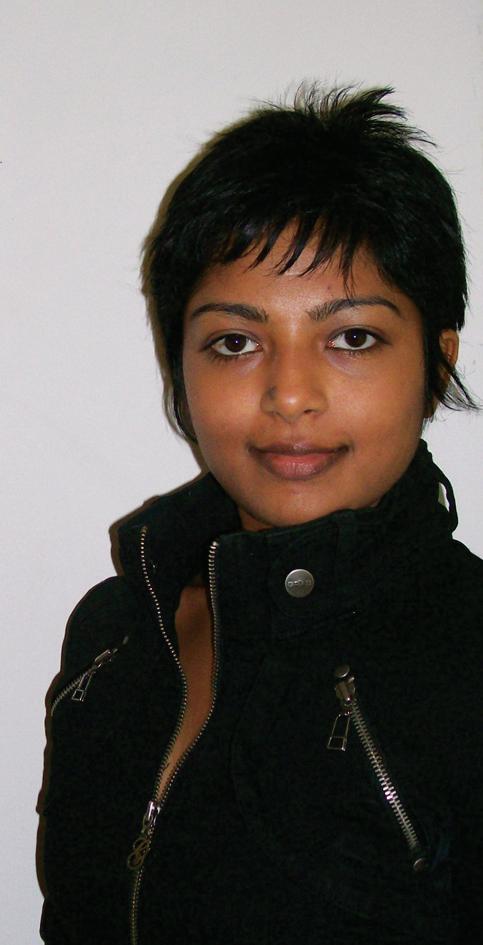

In my late teens, my mother decided that it was high time I learned at least the rudiments of cooking. Having grown up in a family that employed a cook, my forays into the kitchen were confined to occasionally fetching myself a glass of water, as I was terribly spoiled!
My mother was of that sadly diminishing school of thought which firmly associated culinary ability as one of the essential qualities of a good wife. These days you only have to be adept at choosing the right cook. She despaired of my complete lack of interest in learning the art and while I could
But my mother, not one to give up, began her campaign of getting me into the kitchen to cook on weekends, “at least one dish, once a month”. Finally, after putting off the inevitable over several weekends, I agreed to cook a chicken curry for Sunday’s lunch. The cook hurriedly cut up the chicken and disappeared, and I was confronted with onions to cut, coriander to grind, garlic to peel and the hunt for condiments, which were mysteriously stored in the deepest corner of the spice shelf. My mother magnanimously offered to help, which I as magnanimously spurned, because I could do it all…aaah, the self-confidence one has at 18!
A couple of hours later, after dousing a small fire having missed pouring the oil into the vessel and onto the stovetop instead, I surveyed my handiwork, but was too chicken to actually try it. It had an odd smell and was a strange greenish-brown which was surprising, because I hadn’t used any ‘brown’ ingredients. Well, it’s their funeral, I thought,
they were the ones who wanted me to cook! I knew my mother would be valiantly supportive, but the rest of the family have no subtlety. They would be brutally frank, and would recount the experience for the rest of my life. But soon the cook returned, took one look inside the vessel and got to work.
What was presented at dinner that evening was a treat for the tastebuds. My mother knew, of course; I know that now as I am a mum, but at that time I smugly allowed myself to think that I’d gotten away with it. But I took no chances, announcing that this was my culinary swansong. My mother didn’t insist any more, and I now suspect that it’s because she was probably brave enough to taste my original offering. The cook fortunately kept mum until several years later. I have now improved my repertoire and think I am quite a good cook, but my mother isn’t quite convinced yet!
Here’s a dish my mother cooked to perfection in her rare forays into the kitchen, but which admittedly, I will not be able to replicate in this lifetime.
‘Typical’
• 500gms kingfish or any other fillet fish cut into small pieces
• 1 onion, finely chopped lengthwise
• 1 large dried red chilli
• 2 green chillies, slit lengthwise
• 1 cup fresh grated coconut
• 1 tsp turmeric powder
• 1 tsp ginger/garlic paste
• 2 tbsp tamarind juice (not concentrate)
• 2 cups water
• 2 tbsp oil
• Salt to taste
Grind together the coconut, ginger/garlic paste, tamarind juice into a fine paste. Heat oil in a pan, add the paste and fry for a couple of minutes. Add water and let the mix simmer. In a bowl, break the dry red chilli into smaller pieces and mix in the onion. Mash together using your fingers to release the flavour. Add this to the curry and bring to a boil. Gently add the pieces of fish and let them cook in the simmering curry until done. Serve with hot rice and pickle.
Sheryl Dixit
MAY 2011 <> 31 INDIAN LINK
Pallavi Sinha
Goan fish curry
www.indianlink.com.au
Getting a grip on gambling
Measures are being put in place to protect problem gamblers from incurring heavy losses to this weakness
BY NOEL G DE SOUZA
Australia is a country much given to a variety of gambling possibilities. A BBC article titled Australia in thrall of gambling mania (2007) revealed that 80% of its adult population legally gambles in some form, and that the average weekly expenditure on gambling is estimated to be $A17.52. Australians gamble in Lotto, lotteries, horse and other racing, TAB, poker machines and casinos.
In contrast, gambling is illegal in most of India though illegal forms are rampant in all states.
Cricket gambling is the new craze. The Cricket World Cup and the Indian Premier League are reported to have become the foci of a variety of gambling activities.
All state governments in Australia raise substantial revenue from gambling. State governments have promoted Lotto, lotteries and “scratchies”. It can be argued that many of these are small versions of gambling compared to poker machines which draw problem gamblers with the promise of easy rich pickings. To add to these, there is now the menace of uncontrolled internet gambling.
One can possibly consider futures trading, trading in various derivatives and short selling in the stock exchanges as gambling, though it can be argued that information and knowledge have a role to play in such cases. These may be more benignly considered as “speculation”.
There is currently a battle looming in Australia between those who want heavy legal restrictions on how much a person can gamble and those who believe that selfregulation is sufficient. The fight for heavy restrictions is led by Andrew Wilkie, an Independent Member of Parliament from Tasmania. His vote is crucial for the Gillard Labor government to survive in office. He is supported by Getup, the anti-gambling group that claims to have 440,000 members.
The opposition to such restrictions is led by Peter Newell, who is the chairperson of Clubs Australia. This is an association of a variety of clubs but which have one thing in common: they invariably house poker machines and depend substantially for their earnings from gambling. It is said by anti-gambling groups that such clubs make the bulk of their profits from problem gamblers. Australia has some 5700 clubs which include RSL, bowling, golf, football and Catholic clubs. Clubs Australia has launched a television campaign worth $20 million dollars to attack the restriction
Gandhiism Greed
versus
proposal.
The Wilkie proposal is to set predetermined limits for each gambler on poker machines. Newell counteracts by saying that, “Problem gamblers are unlikely to set affordable limits and are likely to set high limits or none at all.” Also that problem gamblers “are likely to take part in other forms of gambling that don’t have pre-commitment limits such as the TAB or online.”
Newell says that the Wilkie proposal impinges upon the “legal right to play a poker machine” by bringing in “a licence to gamble.” He also points out that these measures do not apply to casinos. The ‘legal right’ argument has also been used in the defence of smoking in trains, drinking of alcohol and even by proponents of marijuana smoking. Neither those in favour of free gambling nor those against gambling deny that problem gamblers exist in Australia. There are over 100,000 estimated problem gamblers in the country who lose 2.6 billion dollars a year.

Andrew Wilkie negotiated a precommitment system with Julia Gillard, which is set to commence by 2014; it seeks to limit how much a poker machine player can play. Wilkie has marshalled certain troubling statistics like an individual can lose $1,200 in just one hour in a poker machine. The amount lost in Tasmania in 2009-2010 according to Wilkie was $215.5 million, and the social cost of problem gambling in Australia is $4.7 billion.
Obsessive gambling should be regarded as a mental health problem. It is as if an “internal demon” drives the victim. That was so well described in the classic Mahabharata story of Nala and Damayanti where a demon edged Nala to keep gambling until he lost everything, including his kingdom.
The two small states of Goa and Sikkim are the only states in India where gambling is legal. Ironically, the Goa Public Gambling Act was enacted in 1976 to restrict gambling, but over time several amendments passed have actually legalised gambling. Besides having five-star hotels with gambling machines, there is the lure of gambling cruise vessels on Goa’s rivers.
One important avenue for teaching young people about the evil of gambling is the family home and school education where measures for combating the “disease” can be addressed. For this, every ethnic community in Australia should organise meetings and seminars where the problem is freely discussed. Information about available psychological help for problem gamblers should also be disseminated. No ethnic community is immune to the lure of gambling.
BY ROY LANGE
India’s split psyche is witnessing a mighty clash between her personalities. These are two colossal Maharastrian bhoomi putras; Hazare the son of the soil, and Pawar who seems to own each and every last crumb of it. A man defined by austerity, on a fast unto the death, against a blimp, defined by unbridled greed.
This historical smack down began with the Government watering down the Lokpal Bill (Citizen Ombudsman Bill) draft to an unrecognizable concoction of itself. This molestation of the spirit of the Bill has been in progress for the 42 years that the Bill has been pending. The original draft was designed to bring the corrupt to an expedited justice on a complaint of the common man.
This is in the spirit of the Right To Information Act that Hazare was so terribly instrumental in supporting - an act that empowers any lunatic who can bang up a letter to allow unprecedented access to Government files, which leads to exposure of bureaucratic misdeeds. Previously this was the privilege of nephews of forgettable MLAs and life members of the Gymkhana Club.
A memorable reported case was of a dishevelled gentlemen dressed in a lungi and bathroom slippers given VIP treatment by his local ration shop administrators. Previously they had refused to supply him a ration card with a large dose of contempt. The chap had availed the RTI Act and these bullies, who had been pulled up by their superiors, supplied the card and asked for forgiveness.
The promise of this poetic justice cannot be compromised. But a cancerously corrupt Congress Government has not only redrafted the proposed bill to only allow the Speaker of the Lok Sabha or the Rajya Sabha Chairman to refer cases of alleged graft, but they also formed a Group Of Ministers to draft the bill led by none other than the perfect embodiment of corruption, Sharad Pawar. The equivalent of installing Tiger Woods as the Principal of Lady Shri Ram College!
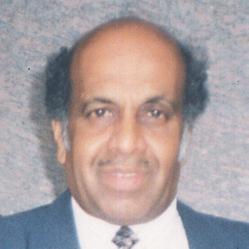
I can imagine Hazare laughing heartedly at this comical absurdity, then experiencing an intense contempt for another obscene molestation by Pawar on his country. Hazare has risen to lead this national movement out of sheer bloodymindedness - with a God-like strength of character that feeds the energy needed to treat a cancer that most of us see as inoperable.
That character has been formed by a hard life. Hazare hails from Ralegon Siddhi, in Maharastra. The village was parched half dead by drought, alcoholism being the only thirst satiated with copious amounts of local grog. Her inhabitants were in a life-sucking feudal quicksand.
Returning to Ralegon Siddhi and fired by the teachings of the Mahatma which he read quietly in his spare time whilst an Indian Army driver, he first tackled the alcoholism that crippled the villagers.
He then implemented a water collection and conservation system that made, for the first time, irrigation possible. A resurrecting baptism of hope.
Then with community labour he built a school for the newly inspired village youth.
These were constructive victories that made Ralegan Siddhi a pilot village for Indian rural development. They were a guiding light that saw untold thousands achieve a self reliance, allowing them to enjoy an undreamt of human dignity.
Pawar shares these developmental instincts. However, it is no secret that his ‘village’ population consists entirely of his close relatives. Who have enjoyed a long golden age of prosperity.
His criminal intelligence is colossal. If it had been applied to the betterment of India, there is no telling where she would stand! There is no doubt his legacy would have shone a great shine. But now in the increasingly dim twilight of his life he is perceived as a pathologically greedy old man who has the gall to declare he is worth Rs. 3.6 crore to the Election Commission.
Pawar’s mantra of ‘greed is good’ is as fashionable as Hazare’s Gandhian beliefs are unfashionable. Hazare’s gospel of an India of self-reliant villages has long been pigeon-holed in the looney file. But he has made a spiritual connection with a young middle class that aspires to internationalism and whose closest experience to rural India is Hauz Khaas village. Young adults who use mobile phones, the 21st century’s Kalashnikov, indiscriminately.
Blissfully, with this genteel uprising, Pawar has already resigned from the drafting of the bill. Can the movement keep up this momentum? Can India find a peace between the two warring impulses instilled in her DNA: the sulking tactics of utopian non-violence, and shamelessly exploitative feudal politics? The rustic pureness of khadi, pressed against a comfortable Raymond suit?
I pray the final equilibrium finds an India that is not a fiefdom of fractured personalities. It needs to be home to the Lokpal Bill and sizeable prisons, well stocked with Pawar’s extended family.
32 <> MAY 2011 INDIAN LINK
www.indianlink.com.au OPINION
There are over 100,000 estimated problem gamblers in the country who lose 2.6 billion dollars a year.
One important avenue for teaching young people about the evil of gambling is the family home and school education where measures for combating the “disease” can be addressed.
The ramparts of corruption are being shaken by India’s elitist and enlightened youth, who are lending their voice and support to an honest cause
I can imagine Hazare laughing heartedly at this comical absurdity, then experiencing an intense contempt for another obscene molestation by Pawar on his country.
But (Hazare) has made a spiritual connection with a young middle class that aspires to internationalism and whose closest experience to rural India is Hauz Khaas village.
Of Thugs and Dalits
Two excellent reads from Indian authors that make one rethink stereotypical myths about the country and its less-fortunate inhabitants
BY CHITRA SUDARSHAN
Five books were shortlisted for the 2010 Man Asian Literary Prize, of which two were by Indian authors: Serious Men by Manu Joseph, and Tabish Khair’s The Thing About Thugs. Chinese author Bi Feiyu’s Three Sisters won the prize (announced on March 18), which the judges said was a “moving exploration of Chinese family and village life during the Cultural Revolution that moves seamlessly between the epic and the intimate, the heroic and the petty, illuminating not only individual lives but an entire society, within a gripping tale of familial conflict and love.” The three distinguished judges for this year’s Prize were Monica Ali, Homi K Bhabha and Hsu-Ming Teo. It must be pointed out here that whereas the two Indian writers’ novels were in English, Bi Feiyu’s was in Chinese which has been translated.
Meadows Taylor’s 1839 book Confessions of a Thug. Khair brings Bihar to Britain’s capital; his central character, the reformed thug Amir Ali, is brought to London by an officer of the East India Company, also called Captain Meadows. Unlike the original thug, Khair’s has the opportunity to speak directly to his readers and tell a story completely different from the one the Sahibs would have - through the device of a series of Farsi love letters. To frame his story, Khair creates the figure of a modern day author who discovers these letters. The author then tells the story, each chapter concentrating on a different character in the plot.
By deliberately setting the novel in early Victorian London, a city cloaked in tragedy and poverty as well as in humour and hope, Khair demonstrates how the West had consistently simplified narratives about non-Western cultures. He deconstructs the ‘popular’ image of the Kali-worshipping, murderous bandits of ancient India and stands it on its head. He even manages to insert connections from the 19th and 21st centuries between England and India, by drawing parallels between the Victorian past and the current ‘War on Terror’.
“I used Thuggee as a ‘stock’ narrative, which I take apart as the novel moves from crime to crime, and in the process reveals a much more complex, layered, and exciting reality,” said Tabish Khair in an interview. Like other Indian academics and intellectuals who have succeeded in writing novels (Amitav Ghosh, Mukul Kesavan, Shashi Tharoor are some names that spring to one’s mind), Khair raises some important questions and forces the reader to re-examine hackneyed views of the ‘other’. He also subverts current academic and analytical frameworks - such as the diasporic, subalternist or post-colonial templates about interpreting the world.
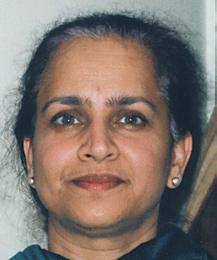
The 44-year-old author was born in Ranchi, spent his early years in Gaya, a historical town in Bihar, and worked as a journalist in New Delhi; he currently teaches English at Aarhus University in Denmark. He has authored several academic books and novels; his next novel will be based in his hometown, Gaya. He is also finishing a book on literary criticism with French writer and critic Sebastian Doubinsky.
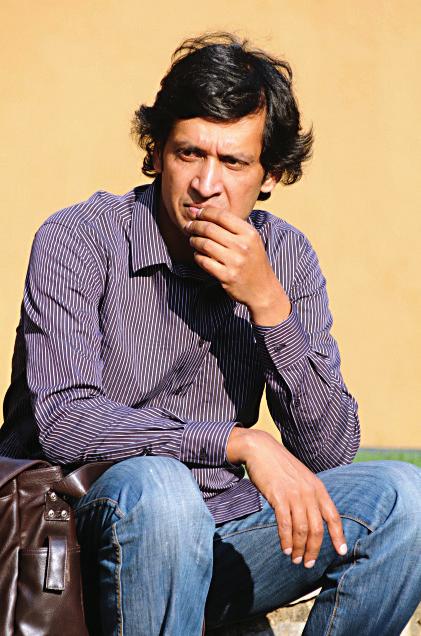
By deliberately setting the novel in early Victorian London, a city cloaked in tragedy and poverty as well as in humour and hope, Khair demonstrates how the West had consistently simplified narratives about non-Western cultures.
Tabish Khair’s novel The Thing About Thugs is probably his fifth, and a very cerebral one in some ways: ostensibly, it is about a thug Amir Ali, who leaves his village in Bihar to travel to London with an English captain, William Meadows, to whom he narrates the story of his life. In the process of doing this, Khair thumbs his nose at the assumptions underlying colonial literature, turning on its head Capt.
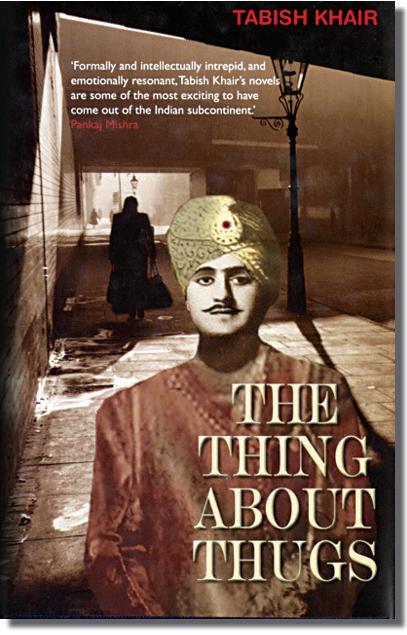
This is a book that deserves to be read by anyone interested in understanding India – and the various pitfalls in the representation of ‘India’ in fiction and non-fiction.
Manu Joseph is the editor of the Open Magazine, an offbeat Indian newsweekly. Serious Men, his first novel, won The Hindu Best Fiction Award (Rs 5 lakh) and is one of Huffington Post’s 10 Best Books of 2010, besides being shortlisted for the Man Asian Literary Prize

In Serious Men, (Harper Collins) Ayyan Mani, the protagonist, works in the Institute of Theory and Research as a lowly personal assistant to a brilliant, insufferable astronomer, Arvind Acharya. Mani is one of the thousands of men stranded in the slums of Mumbai, but the opportunistic Mani is also an astute observer and sly eavesdropper. Joseph’s Mani in some ways harks back to Balram Halwai in Arvind Adiga’s The White Tiger (the poor

There is sly humour and a lightness of touch that is fresh and different, yet, at the same time the novel shines a light at the deepest crevices of Indian society.
Mumbai heroes in Vikas Swarup’s Q and A, Rohinton Mistry’s A Fine Balance, or Manil Suri’s Death of Vishnu were less malevolent), although caste is more central to this novel than others. Joseph feels that Indian writers in English usually take a very sympathetic and compassionate view of the poor, which he finds fake and condescending. In Serious Men, Mani is a middle-age Dalit and is furious at his humble situation in life. Partly to entertain himself, partly to cheer up his once-animated but now work-worn wife, partly to bolster his ten-year-old son’s confidence, Mani weaves an outrageous fiction around the boy — a fiction that captures the interest of his superiors and threatens to set into motion an unstoppable and disastrous chain of events. It is a lie which becomes increasingly elaborate and out of control. The teachers in the school are fooled - including the bigoted Christian headmistress, Sister Chastity - and then the deception begins to get out of hand. Added to all this is the arrival of the beautiful Dr. Oparna Ghoshmulik— the first woman ever to work at the Institute — and the ongoing “war of the Brahmins.”
One of the prize judges, the novelist Shashi Deshpande said that Joseph had “crossed a certain barrier...He has spoken about caste...he has straightforwardly plunged into the mind of a Dalit man and has done it with style and panache. To have a Dalit man speak in English and make it authentic is very difficult - but Manu Joseph has done it very easily, without making it grotesque.”
This is a remarkable first novel, and one of the best to come out of India in recent years. There is sly humour and a lightness of touch that is fresh and different, yet, at the same time the novel shines a light at the deepest crevices of Indian society. Joseph effortlessly describes the titanic social collisions in India, deftly portraying the frustrations of the powerless with the unforgiving realities of power and wealth.
Before you lodge your application, be sure to check the track record of your migration agent. At AVMCS, we have been successfully helping people like you for over 18 years, involving thousands of successful applications. We know the rules and guide you professionally all the way. No wonder, AVMCS is the first choice of people who want the best value for their money and efforts. Remember, there is no substitute for experience.
MAY 2011 <> 33 INDIAN LINK
THERE’S NO SUBSTITUTE FOR EXPERIENCE. 95 Wigram Street, Harris Park, NSW 2150 Tel: 02 98939606 Fax: 02 98912872 email: info@avmcs.com.au web: www.avmcs.com.au Contact Sanjay Deshwal on 02 98939606 or 0412 462 344 RMA 96 83 692 AUSTRALIAN VISA & MIGRATION CONSULTANCY SERVICES
IMMIGRATION.
www.indianlink.com.au BOOKS
Abode of peace
The headline of London’s Daily Chronicle on November 14, 1913 screamed out: Nobel Prize for Bengali Prophet.
When that news streamed through India, the entire nation was engulfed with pride. The province of Bengal burst into jubilation and the city of Calcutta was ecstatic. One of its most illustrious sons, Rabindranath Tagore had been awarded the world’s most coveted prize for his classic collection of poems Gitanjali, described as “profoundly sensitive, fresh and beautiful verse”.
The particular newspaper cutting is still on display at Rabindra Bhavan Museum in Santiniketan, a small town located 170 kilometres from Kolkata. Here, Tagore dedicated forty years of his life to initiate and fully develop an international university that is recognised worldwide today as the venue for the best communion of East and West.
The influence of Santiniketan

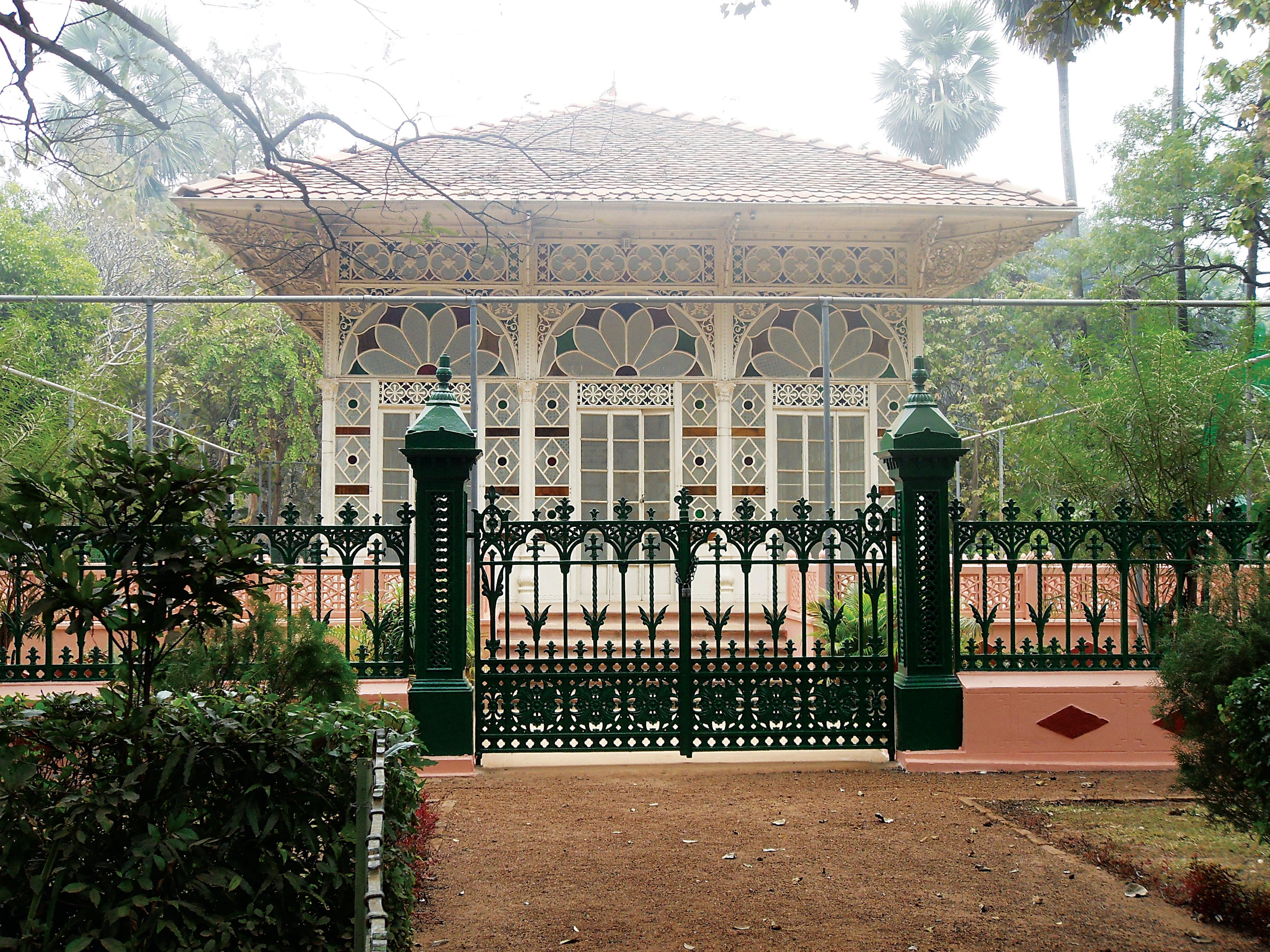
A genius by birth, Rabindranath was born at the family’s ancestral mansion in Jorasanko, Kolkata, on the 25th day of the Bengali month of Baishakh, 150 years ago. This distinguished personage still survives in the heart of millions in modern India and abroad, and his home is still considered as an epicentre of art and literature.

His father Debendranath was then a leader of the Brahmo Samaj, a new religious sect in nineteenth-century Bengal that attempted a revival of the ultimate monistic basis of Hinduism. In search of a peaceful area for eternal prayers, in 1862, Debendranath discovered Santiniketan, meaning ‘abode of peace’ in Bengali. The story says that on a summer afternoon when passing that locale in a palanquin, he stopped under the cool shade of two large Chatim (Alstonia scholaris) trees. While resting, he was deeply impressed
with the tranquil surround and thought it to be ideal for meditation and self-realisation. He opened an ashram there in 1863 for his followers.
Rabindranath, who from his early childhood was greatly influenced by thoughts of the Vedas and Upanishads which form the basis of Hindu philosophy, used to visit Santiniketan with his father as a child and was equally impressed with the serenity of the region surfaced with palm, mohua and saal trees set on the land of red soil. A non-believer in traditional education, he wanted to establish a unique way of erudition where the value of learning is limitless and serves soulful enrichment more than anything else. Considering Santiniketan as the right venue, in 1901 Rabindranath started a school in the model of Tapovana (hermitage) of ancient India with five students, which over the years, has bloomed into today’s Visva Bharati, a worldfamous university, and perhaps the only one in the world that is set in a rural milieu.
An epicentre of learning
The key attraction of visiting Santiniketan, other than plunging into nature’s opulent empire that surrounds it, is to explore the university campus that is framed with age-stained yellow buildings amid an abundance of gregarious trees, while following the footsteps of its creator.
The university offers a diverse range of courses, but Visva Bharati is renowned for fine arts, music, dance, drama and humanities.
“Kala Bhavan is considered as the best art college in the world,” says Kim, an overseas student from Korea. Samples of art sprinkled throughout the domain substantiate her claim and threaten to give one an ‘art attack’. She then adds, “The good thing about studying here is that the curriculum, while not neglecting India’s
BY SANDIP HOR
cultural, analytical and scientific heritage, is deeply engaged with the rest of the world.”
Nature nurtured learning
Tagore’s vision of learning nestled on an alliance with Nature. He made that a reality in Visva Bharati where weather permitting, all classes, lectures and social functions including the convocation, are still held outdoors. Experiencing that intimacy of learning with Nature is a major draw for visitors to Santiniketan.
As the bell rings, the campus comes alive with school children sprayed in crimson rays of the early morning sun, reciting poems in tune with the chirping of the birds, or music students rehearsing alongside the murmur of dried leaves. Turning a corner you may hear quotes from
34 <> MAY 2011 INDIAN LINK
TRAVEL
A non-believer in traditional education, (Tagore) wanted to establish a unique way of erudition where the value of learning is limitless and serves soulful enrichment more than anything else
As India celebrates Rabindranath Tagore’s 150th birth anniversary on May 7, we take a glimpse at Santiniketan, the university town the Nobel Laureate founded just outside Kolkata
3
Photo: Bikash Ghosh 1
Shakespeare’s Othello from the undergraduate class on literature that is in progress, or may note a sizzling debate on Bertrand Russell’s theory of logic from a group studying philosophy.
The charm of Santiniketan lives on its highly cultured but simple way of life built around the concept of community living. The friendly locals always invite visitors to get a taste of their entrancing lifestyle. You trundle with them along “Shal Bithi” the famous red soil treelined boulevard and learn about Tagore, and then sit under a banyan tree and clap along to a song written and composed by the poet himself. Or for a change, you can engage in fiery conversation with students and teachers on sports or politics at one of the canteens. Perhaps even join elders at the legendary Kalo’s Tea Shop, to hear stories about wellknown alumni which include former Indian Prime Minister Indira Gandhi, Oscar award winning film director Satyajit Ray and another Nobel Laureate, Amartya Sen.
Taking the Tagore tour
a replica of the original, kindly provided by the Nobel Committee, rests in a glass case unfortunately decreeing more of national shame, than pride.
You trundle along “Shal Bithi”, the famous red soil tree-lined boulevard and learn about Tagore, and then sit under a banyan tree and clap along to a song written and composed by the poet himself.
Obviously the tourist trail centres on Tagore’s mementos and generally begins at the Rabindra Bhavan museum. There is a good collection of newspaper cuttings, photographs, manuscripts and personal memorabilia to tell you more about this man of many talents. You will appreciate the extent of his relationship with many from the world’s Hall of Fame at that time, including Einstein, Freud, Yeats and Gandhi, to name a few.
Other notable sights are the prayer hall made from coloured glass through which sunlight disperses and creates a divine atmosphere within. The five houses – Udayan, Konark, Shymali, Punashcha and Udichi where Tagore and his family lived from time to time display his simple style of living and his taste for art. However, remember to leave your shoes outside. Tagore was well-travelled and the designs of these houses reflect some architectural influences of countries that he visited. His car, a black Humber with rego number WBA 8689, stands silently behind a glass walled garage, its fate sealed by the fact that it was used by him. Despite a lack of modern urban facilities, the high number of international students from Korea, Japan, China, France and Canada, will surprise you. They speak Bengali, sing Bengali songs, are attired in local costume and comfortably eat simple meals comprising mainly of bhat (rice), daal (lentils) and tarkari (vegetable curry).
“The highest education is that which does not merely give us information, but makes our life in harmony with all existence,” Tagore once said famously, and you will realise the essence of that saying when visiting Santiniketan.
Travel notebook
MANILA Santiniketan

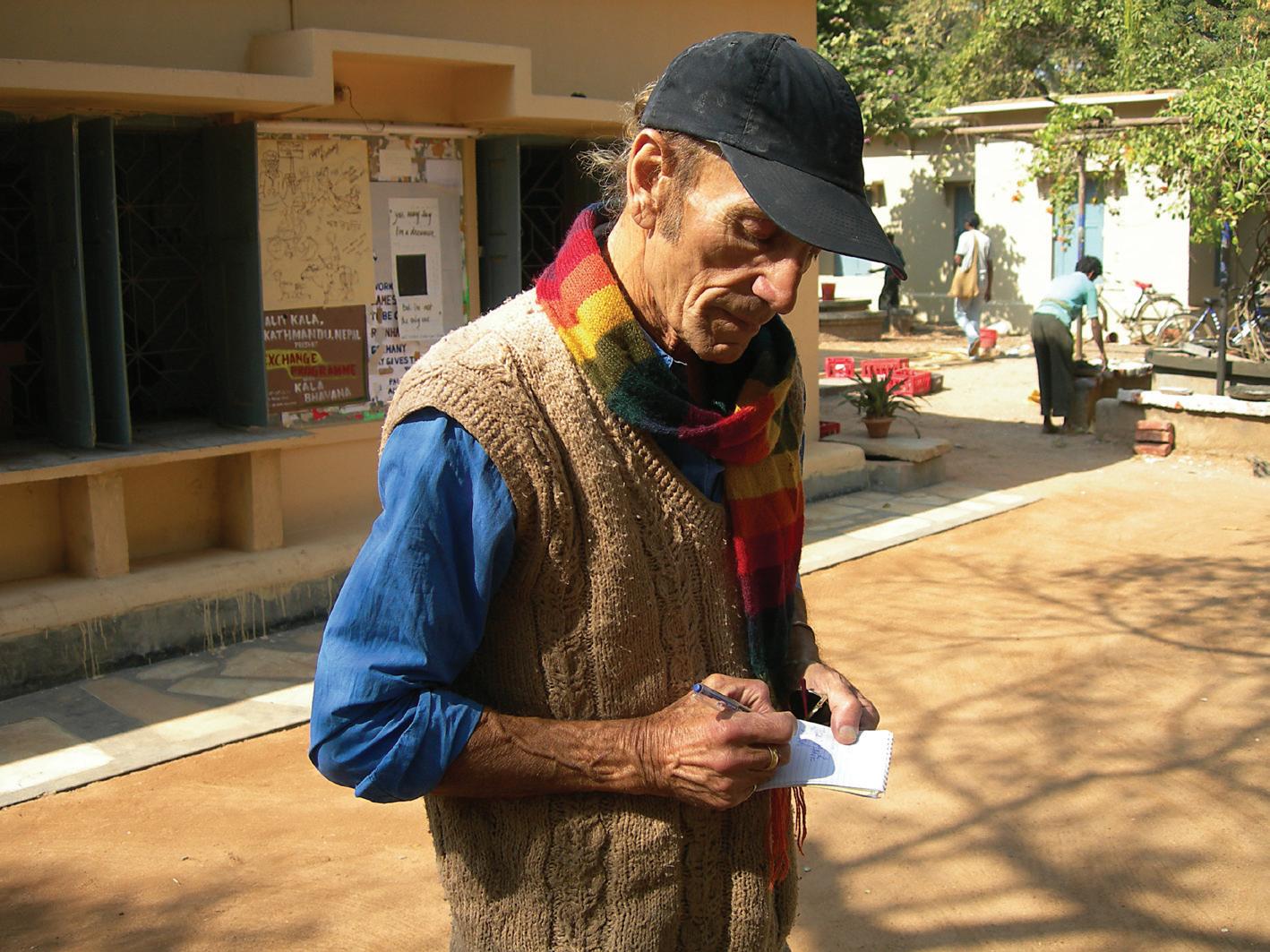
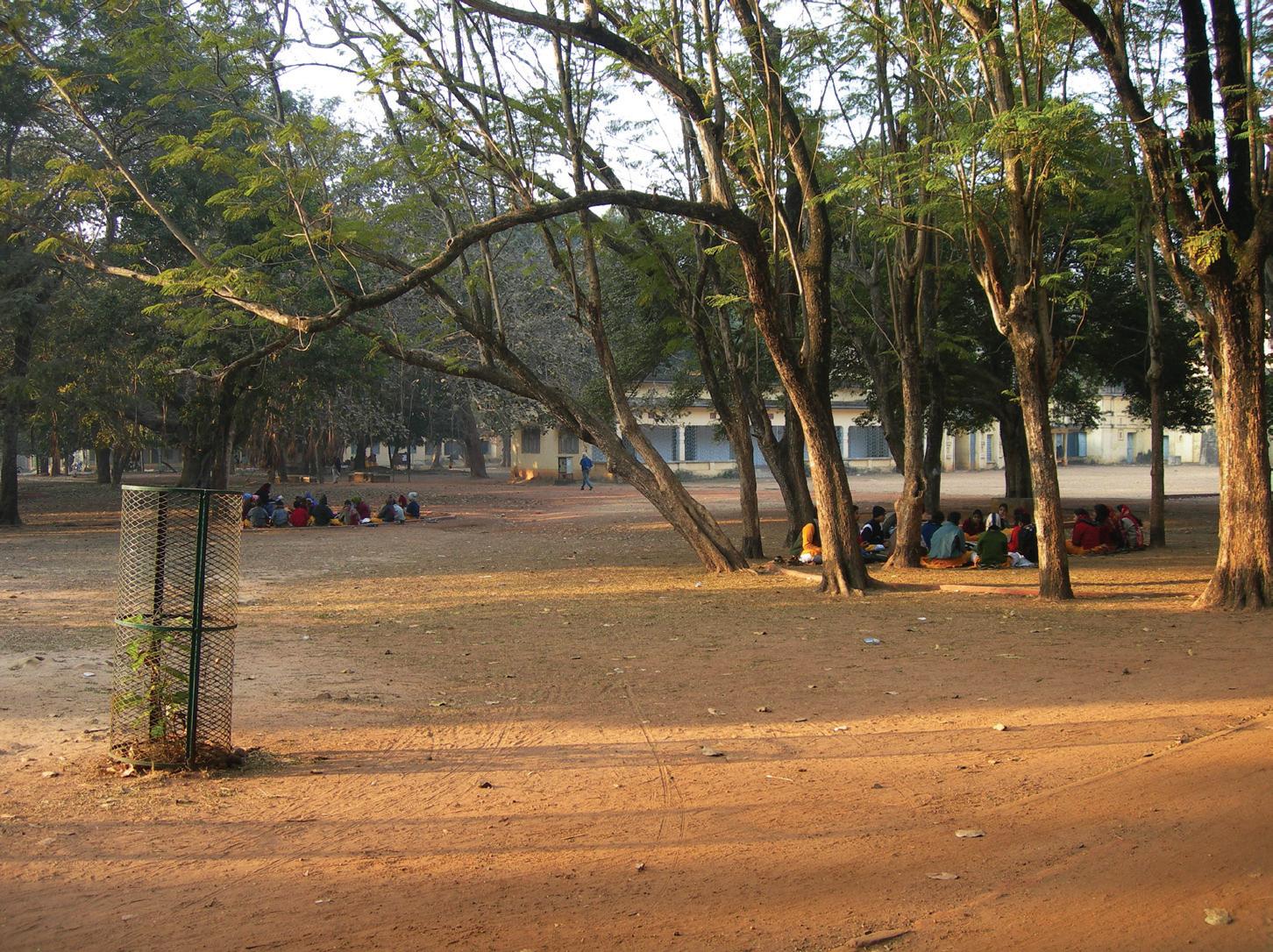
GETTING THERE
Singapore Airlines (www.singaporeair.com) has regular flights from Australia to Kolkata from where Santiniketan is only 3 hours by road or rail.
ACCOMMODATION
Visva Bharati guest houses or Chhuti Holiday Resort (www.chhutiresort.com)
BEST TIME TO VISIT
November to March when the weather is cool.
UNIVERSITY CAMPUS OPENING TIMES
Closed for half day on Tuesdays and full day on Wednesdays.
MORE INFO
www.visva-bharati.ac.in
1. Tagore’s Prayer Hall
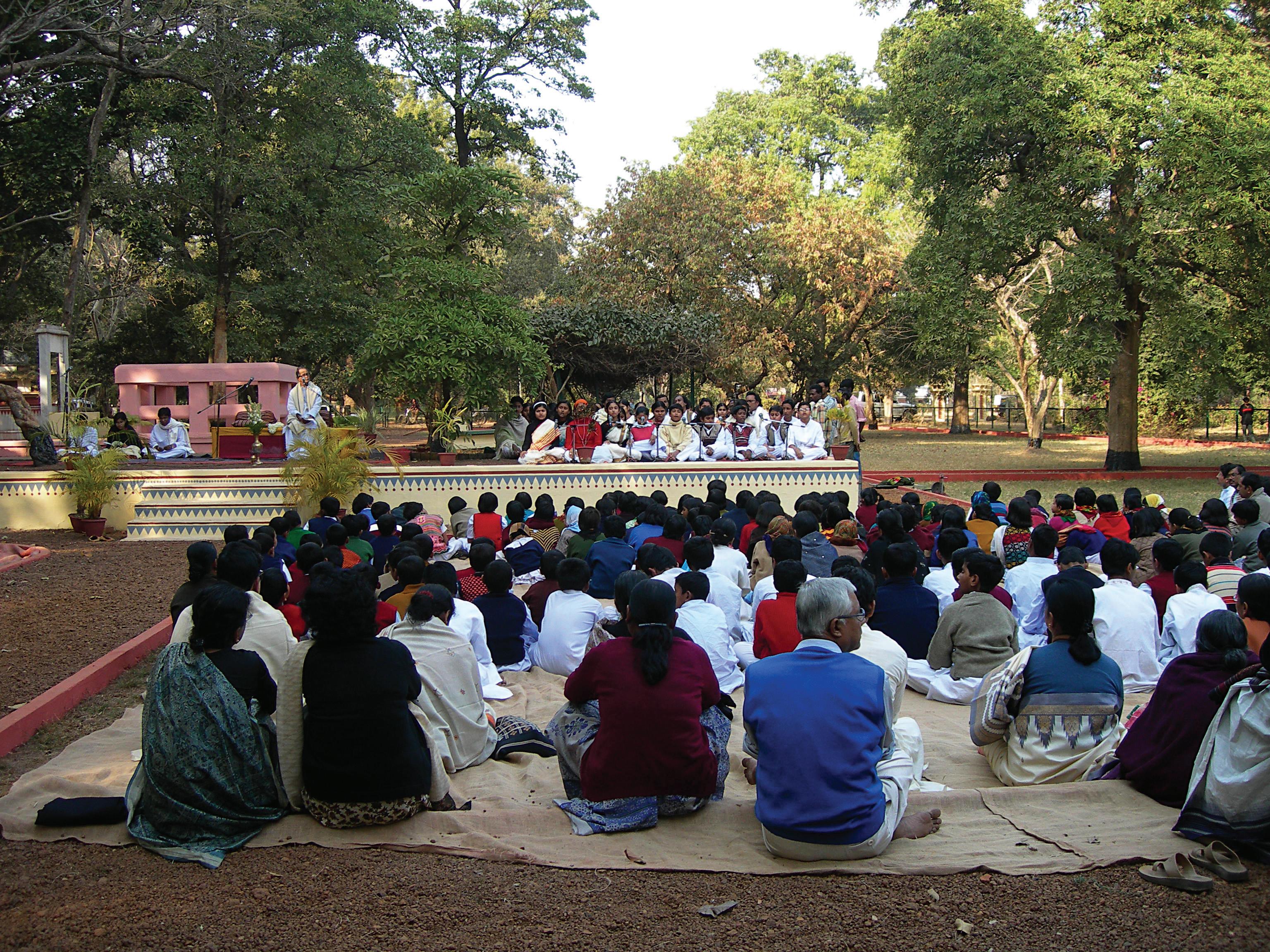
2. An outdoor presentation
3. Gandhi with Tagore at Santiniketan

4. Frenchman Jeearie: “Tagore is my life”
5. Campus building
6. Visitng Korean students
7. Morning class in progress

INDIAN LINK
Qui doluptibus sit ipsamene evendantis aboris atem expligeniam, omnisquat acculla que nonserio. Sed quis se quo dollectati beatiis
2 4 5 6 7
Photos: Sandip Hor

36 <> MAY 2011 INDIAN LINK

MAY 2011 <> 37 INDIAN LINK



38 <> MAY 2011 INDIAN LINK


MAY 2011 <> 39 INDIAN LINK Urgently Wanted Chef/Partner for an upcoming Indian restaurant in south Eastern suburbs in Melbourne To set up an interview Please call 0469350026 Your chance to have a business in India Experienced, Successful Network Marketers who are looking for a Ground Floor Opportunity with a large, debt free, International Company soon to launch into the Sub Continent. This Company is present in 19 countries. Only one product, no warehousing, health beverage. We are looking for 3 leaders. Must be Ambitious, Hard working, Honest and Teachable. Give me a call. I am 79 years old I am only looking for people who are genuinly seeking 'their Big Chance' in life and are prepared to work hard to get it. Free sample of product given to all who attend the interview Call Helen on 0414461673
great foods for lactating mums

Some
foods have been
known to increase the production of breast milk in lactating mothers
A very important part of motherhood is the emotional bonding between mother and child, which becomes stronger during periods of breastfeeding. Some mothers are lucky to have an abundance of milk, whereas others struggle with their output. Throughout history, mothers have known and acknowledged foods which increase breast milk. These foods have been valued in earlier cultures and even highlighted in mythology. Mother goddesses have also been associated with plants and foods historically used to increase the production of milk.
Eating a balanced diet and getting an abundant supply of nutrients is very important for the mother, as well as the baby. Though the supply of milk mostly depends on the demands of the baby, adding some ‘galactagogues’ to your diet can help in increasing milk production. Any herb, food, or medication that increases milk production is called a galactagogue. This word originates from the Greek language where ‘galacta’ means ‘milk’ and ‘gogos’ means “leading”. ‘Galactagogues’ therefore means “leading milk from the breast”. But traditionally Indians use the word “lactogenic” to describe herbs and foods that enhance breast milk production.
as a herb that increases milk production. Boil fennel seeds in water and drink it for the first few days post-delivery. Fennel seeds can also be eaten raw or cooked, for instance, steamed, or sautéed in butter or
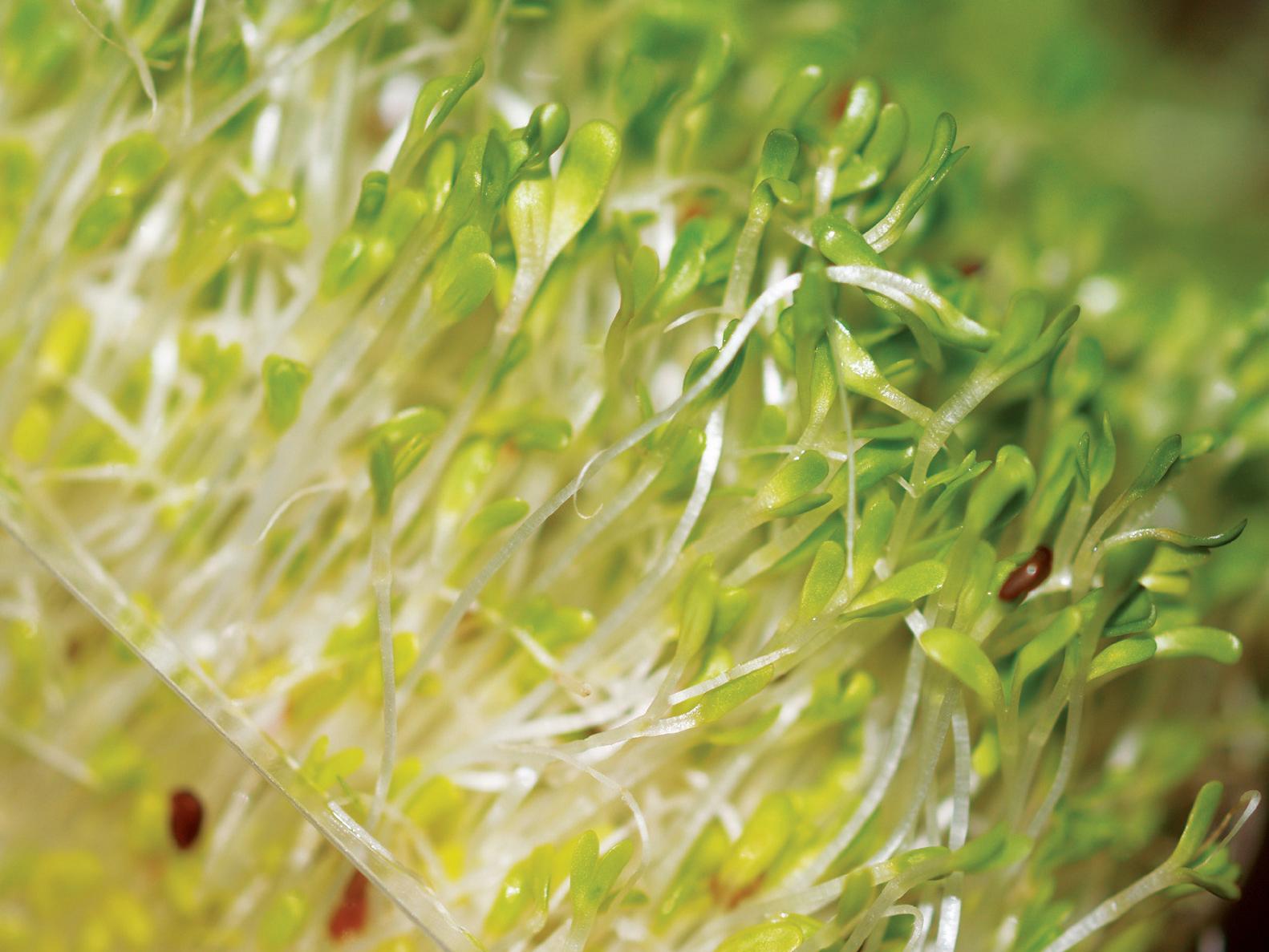
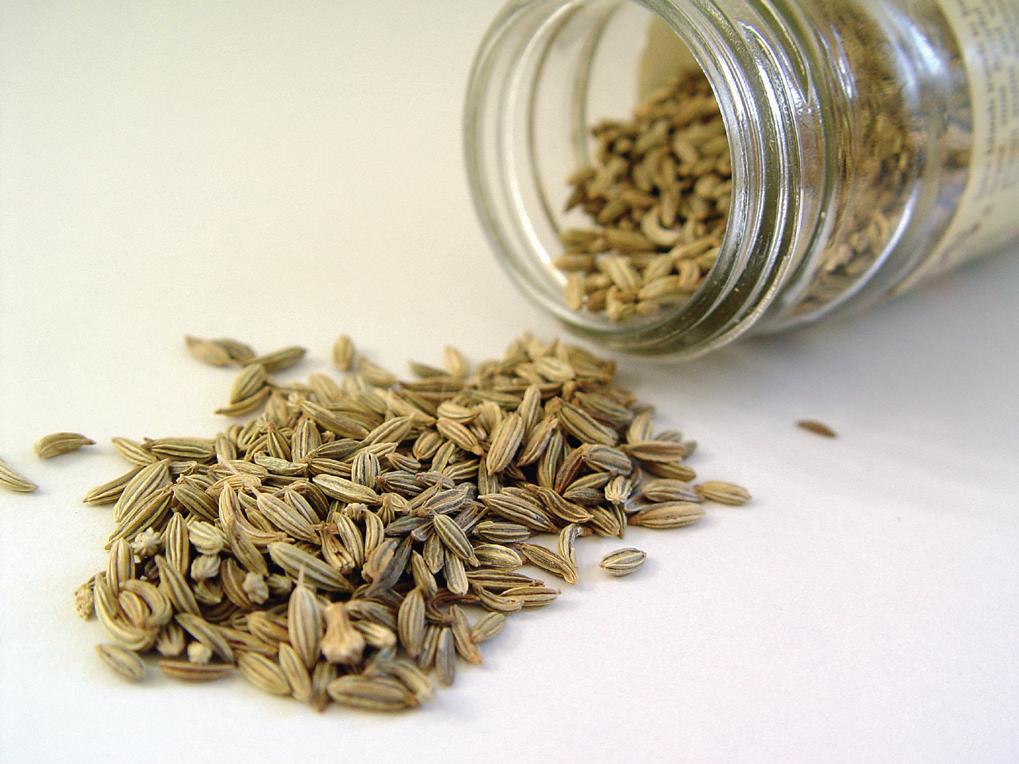
Sesame seeds are considered to be the most lactogenic seeds. They are rich in calcium and are crushed, boiled, or roasted in most traditional preparations to increase the availability of
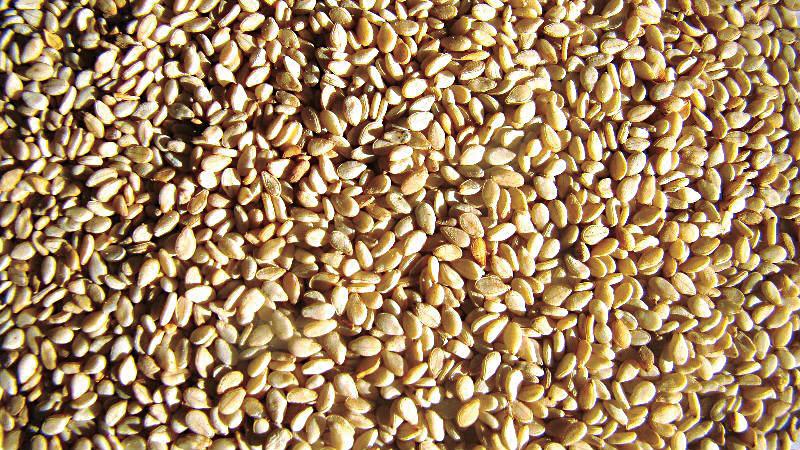
Grains and legumes
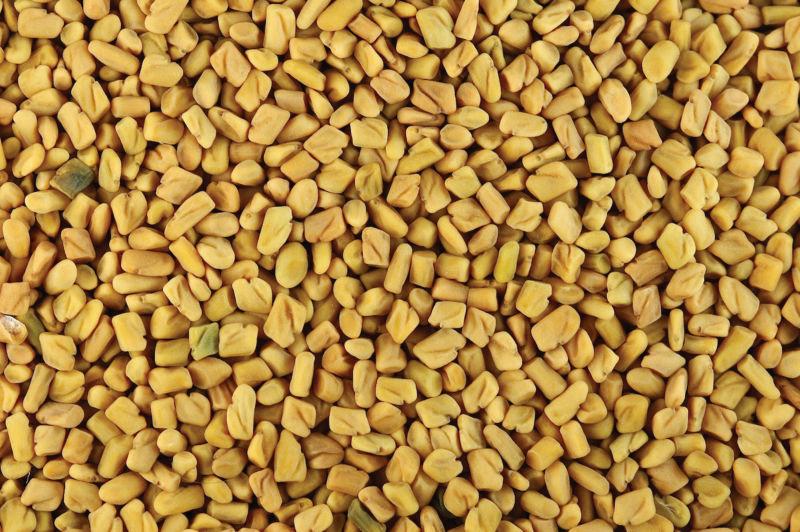
A combination of grains and legumes provides good protein for vegetarians. The most common lactogenic legume is oats. Most women experience a modest increase in milk production after having a bowl of oats for breakfast each morning. You can also have an oatmeal bar or munch on some oatmeal cookies. Other grains and legumes include barley, chickpeas, lentils, and amaranth.

Grains and legumes are rich in phyto-
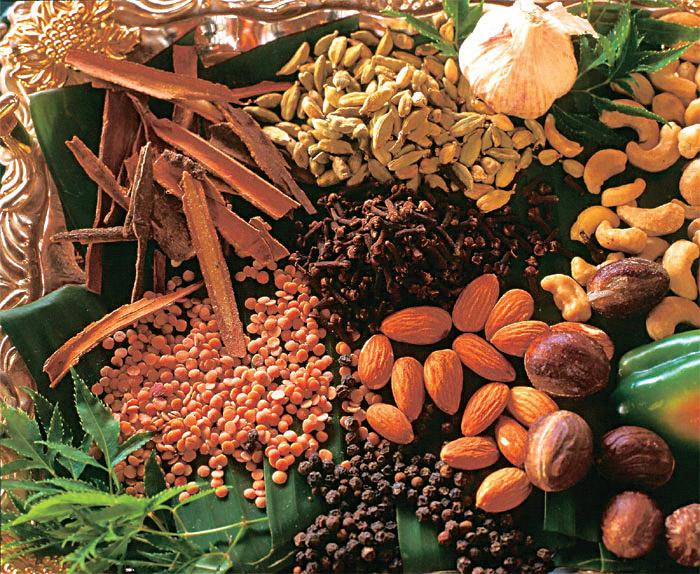
that helps stimulate the milk ejection reflex. It can be had as a vegetable, or fenugreek seeds can be added to curries and chutneys.
Garlic
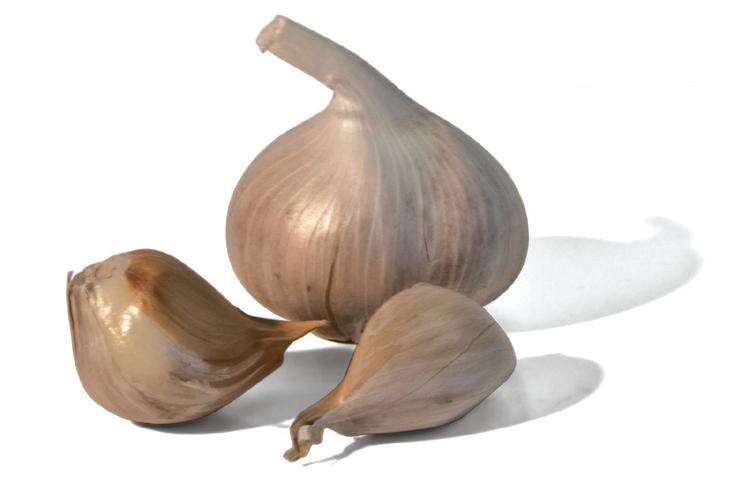
Garlic is well-known for its medicinal properties and lactogenic effect. Start with having one or two cloves per day. These can be swallowed whole or can be added to vegetables and curries.
Nuts
Nuts are considered to be lactogenic due to their high content of minerals and the amino acid tryptophan, the precursor of serotonin, a pro-lactation neurotransmitter. Snacking on almonds and adding these to the panjiri traditionally consumed in the post-natal period, is said to make the milk thicker, sweeter and creamier.

Barley Water
BY GEETA KHURANA
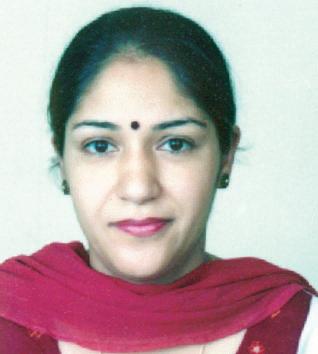
Most women experience a modest increase in milk production after having a bowl of oats for breakfast each morning. It wouldn’t harm to try them as all of these foods are considered healthy and would contribute to a wellbalanced diet.
amino acids. Alfalfa leaves and flowers can be steeped and drunk as a tea. Alternatively, alfalfa seeds can be sprouted and the sprouts can be consumed in salads, stir-fry dishes,
Using spices like sea salt, dill, cumin seeds, aniseed, caraway, basil and gomasio helps increase milk supply, as these are known galactagogues. Caraway is a tangy carminative spice - it soothes the intestine, is anti-spasmodic and anti-inflammatory, reducing cramps, relieving flatulence and improving digestion. Use caraway when cooking vegetables that are difficult to digest, such as cabbage or cauliflower, or if your baby has colic or is fussy. Most of these foods do not have much scientific backing behind their efficiency, however many women claim they work. It wouldn’t harm to try them as all of these foods are considered healthy and would contribute to a well-balanced diet. But if you do not have a low milk supply and you take an abundance of herbs and foods to increase your supply, you may create unnecessary difficulties for yourself such as over-supply, engorgement, plugged ducts, or mastitis. Your baby may develop colic because of too much foremilk, or sucking difficulties due to an overly strong letdown reflex, both of which are common with over-supply. Use these foods and herbs wisely, and reduce or stop their use if you notice such problems developing.

INDIAN LINK
www.indianlink.com.au
WELLNESS
Handbag helpmates
BY MINNAL KHONA
Every woman’s handbag is a treasure trove of deeply personal stuff. But to be prepared at any time to meet the man of your dreams, land that dream job, or just look your best at short notice, there are a few things a woman should never do without. And carrying small, pocket-sized versions of these accessories or cosmetics will come to your rescue not just any time, but all the time.
While most of us do carry the odd lipstick in our bags, it is better to get organized and have a small pouch to accommodate several little things so you can find them easily inside your bag.
Here’s what you need, but not necessarily in order of importance.
Lip Balm
Be it Sydney’s harsh winters or just a long hot day, a lip balm is a must-have in a bag as the weather and sometimes our diet, could make our lips go dry and chapped. How often does one remember to refresh one’s lipstick after a meal? Nine out of ten times we do, right? So why forget to moisturize this very important feature? A good lip balm with the right ingredients can keep your lips looking good even if you don’t have lipstick on. Choose a fruit flavoured one, a coloured one that doubles up as a gloss or even one that has sunblock in it. Just never go without one.
Moisturiser
Yes, you would mostly moisturize your face before leaving in the morning, but it always helps to carry some along. Especially if you have a party to go to after work. A wash with a gentle cleanser and a dab of moisturiser before refreshing your makeup will make your skin look fresh. What’s more, it keeps the skin from going dry which prevents early signs of ageing like crow’s feet and wrinkles.
Foundation
A foundation works as a good barrier against dust and pollution. What’s more, various brands come in really handy-sized packs these days. Some even have moisturising abilities. Or simply opt for the compact kind, which doubles up as a concealer, foundation and powder all in one. I personally prefer this kind as it saves you carrying a few extra cosmetics. Just one thing – always choose a shade closest to your skin tone and not one that is a few shades lighter in the hope that it will make you look fairer. It won’t, and if you are a part of a photo shoot, the results would be disastrous.
Soap free cleanser
Sitting in air conditioned offices or wearing makeup to work and after can impact the skin due to all the chemicals used, in addition to the drying effects of the AC. So always carry a soap free cleanser to wash your face. This is important especially on days when you are planning to go out
after work or have a job where your makeup needs to be refreshed often. A gentle hand sanitizer to keep away the germs, used before you eat is also important to carry along.
A clean comb
Having a neat and well-groomed appearance at all times can even help score over good looks at times. And if you don’t tie up your hair while at work or college, carry a comb or brush in your bag. You can comb your hair more frequently, say when you visit the washroom, and keep knots at bay. Also, frequent combing keeps the blood circulation in the scalp going, thereby providing nutrients to the scalp that will help hair to stay healthy.
Deodorant
Again, a must have for anyone who cares about their personal hygiene. Body odour can put off the most ardent of suitors and leaves you feeling very icky too. So always carry a good, effective deodorant or anti-perspirant. Roll it on sweaty parts or spray it on before stepping out and you will always smell fresh. A word of caution: avoid the ones with very strong fragrances – the muted, fresh smelling ones are the best.
Lipstick
Like I mentioned earlier, most of us do carry one in our bags. It is best to carry a neutral shade of brown or nude that would go with most outfits in case you have forgotten to carry one that matches your outfit. A lip gloss to add that extra sheen is also necessary to complete your make up.
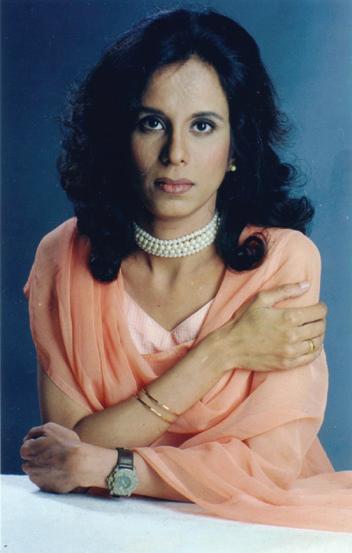

Mascara
Most women wouldn’t think of carrying this cosmetic, but if you are going out or just want your eyes to look fresh after a long day in front of the computer, carry a tiny version of the regular brand you use. Mascara automatically widens the eyes and gives them a fresh look.
Eye liner
An eye pencil would do just as well and is probably less messier than the liquid liners. Even if you haven’t applied any and have to suddenly look your best, a few quick strokes and you’re looking good.
Sunscreen
The thing with sunscreens is that they need to be refreshed every few hours. If your lifestyle or job is one where you are in and out of the office or home often during the day, it makes sense to carry a tube of sunscreen. Just remember to apply it 20 minutes before stepping out for best results. You can’t afford to not carry this important cosmetic. If you feel you’re carrying one too many cosmetics in your bag, pick a brand that is a sunscreen that moisturizes, or a moisturiser which has an SPF of 15 or 30.
Other important things that should go in the little pouch could be a hair clip, sanitary towel, some wet wipes and a little mirror. Make these items a must have in your bag, and you will never look anything but your best.
MAY 2011 <> 41 INDIAN LINK
BEAUTY www.indianlink.com.au
There are some essential beauty aids that you just can’t do without, which will always keep you prepared for looking good
Ask Auntyji
Budhaape mein diwaangi?

Dear Auntyji
Asha hai ki aap tandroost hai and everything is tickety boo in your world. Bahenji, mere paas ek somewhat perplexing question hai aap ke liye . I am of the same vintage as you I am thinking, and my pyaari saheli Usha Bahen also is in her 60s. Aajkal however, while I have grown graceful and dignified in my twilight years, Usha Bahen has grown thodi si .....senile. Bilkul paagal ki tara jhoom rahi hai woh . She has started dyeing her hair with henna and so it is quite bright orange and she looks like Ronald McDonald. Then, the other day, she put on some jeans, all the way up to her armpits and booked a ride on a motorcycle with some gora cheez up and down the streets of Footscray. Then, she hangs out with her grandchildren, and uses words like dude and like and I even saw her text her grandson with a lol . A lol?! Can you imagine, a lol, no less. What has gotten into this buddhi ? And has no one told her that buddha ghoda and naya lagaam just does not work? Ahsaan kijiye and please advise me on how I can broach this subject with my confused saheli without todo ing her dil or hurting her feelings - after all, she has not been the same since her pet chihuahua Muffy died. Meanwhile Govind Bhai is tolerating all this by putting on a show of support and to my face, said to Usha Bahen just the other day, You go, girl . You go girl? Since when do buddhe log speak like this? Ye kis tara ki zaleel language hai ? What is the world coming to? Have I woken up in an alternate universe where nothing makes sense anymore? Please tell, Auntyji, you are my akhri resort.
Auntyji says
Oh, my gola little gulab jamun , my twisted little jalebi , my hot little pakora , why must you torment yourself with what others are doing? There is only one solution for you and I insist that you follow through on it. If Usha Bahen rides a motorcycle with a gora pakora , then you too, must ride a Harley with three gora pakoras . If she dyes her hair peela , then you must dye your hair neela . If she says lol, you must say rofl. Do you catch my matlab ? No? Well, let me spell it out for you. Achche bachche don’t judge others, and achche log seek to understand others before they, well, make any sort of judgements. Usha Bahen is having fun and she is not hurting anyone, and the only one being hurt in a twisted way is you. So the only thing for you to do is to support Usha by doing everything she does - and I can guarantee you that you will have so much fun, that you won’t recognise yourself. Just try it - and see what happens. Oh, wait. Don’t wear jeans up to your armspits. At least get some that suit your gola damola Ajanta ki murat figure. Let me know how it goes and I might come along for a ride on the Harley, as long as the goras are built like Brad Pitt in Thelma and Louise
Dear Auntyji
I found out from Facebook that my 21-year-old son who is studying medicine has become interested in a girl. Can you please tell me how we should handle this?
We come from a strict family of Brahmins and everyone will want Ankit to marry a nice girl from the same background. Please help me - as Ankit was born and raised in Australia and he is a wonderful sonbut his choice of girlfriend is causing me concerns.
Auntyji says
I am sorry to tell you this, but the world has changed and people’s thinking has changed with it. While Ankit may be a wonderful son, and a bright one, if you start telling him who he can marry and who he can associate with, it will only be a recipe for disaster. Honestly, do you really expect him to follow family
The Lelyveld controversy
Dear Auntyji
I am outraged by a book by Joseph Lelyveld that asserts Bapuji had... questionable conduct. I have read the book and some of the points raised are so outrageous that I feel like burning the book. How could he say such horrid things about the Mahatma? How could the publishers allow this book to be published? Auntyji, I am so angry that this author has said such things that I am at a loss about what to do. I have studied the work of Gandhi and have read multiple books on him - and I can easily refute all the claims made. What do you suggest I do?
traditions to that degree? I am all for following certain values and customs, but imposing such rules as dictating who one must marry is out-dated. Now, if little Ankit was a complete nerd who didn’t know that girls existed and who needed mummy’s help in finding a wife, then in this instance, you can have some say in his choice of wife. Otherwise, please, leave your son alone, especially if you want him to be happy. And another thing. Honestly, why are you following his Facebook updates? Seriously, parents of 21-year-old studious youngsters should stay off their social media sites. Give your son some privacy. Unless of course he has shown signs of being a sociopath, in which case you should definitely monitor his social media activities. The only way you can tell if he is a sociopath is if he wet the bed till he was 14 and he mutilated furry animals when he was young. Happy pondering!
Auntyji says
Well, my dear self-righteously indignant fellow. The answer is quite simple. Write your counter claim to Lelyveld’s assertions and make sure you back up everything with evidence, and send to this paper for publication. Who knows, maybe the Guardian or the New York Post might pick up your piece. But, please ensure that your sentiments on the subject are not framed by emotional attachment to the topic. You must be able to verify all your claims with real life evidence - and not just from other authors. I am quite looking forward to what you have to say on the topic. One final point - note that we are talking about a human being here, and he had human flaws - so let’s not assume that he was divine perfection. How soon before we can see your first draft?
KNOW THYSELF AS SOUL
Sant Mat is a practical spiritual path based on meditation, ethical living, service to others & love for all creation. Its goal is to enable the soul to return & merge into its source; the purpose of human life described by mystics of all traditions. Discipline & dedication are essential, as is the help of a competent living master. Entry is via a preparation program. There is no charge at any stage.
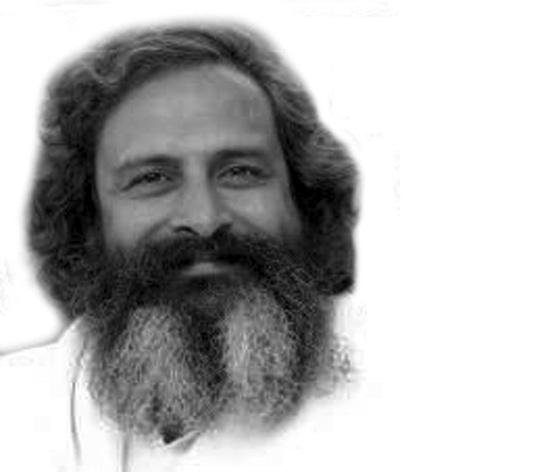
42 <> MAY 2011 INDIAN LINK BACKCHAT
you have a question for Auntyji?
it in to GPO Box 108 Sydney 2001 or email it to info@indianlink.com.au
Do
Send
www.indianlink.com.au
Get out of his face(book)
information...
Vikas 0430 918 646
Know Thyself As Soul Foundation is a not for proft association incorporated in NSW
For more
Contact
www.santmat.net.au
Yes, Prime Ministers!
BY GEORGE THAKUR
During my years in the hospitality industry in India, I was fortunate to meet various political heads and experience some interesting events and encounters. Here are a few anecdotes for
Haanji, Chachaji
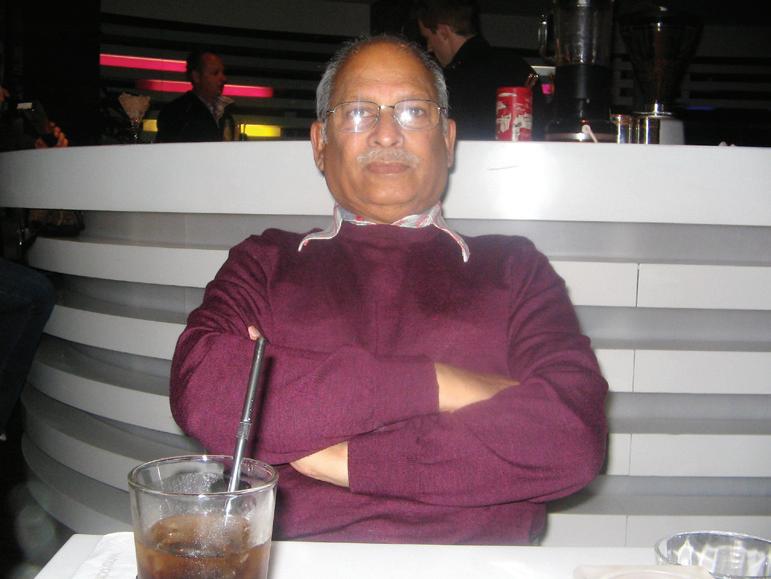
In the late ninety-fifties, I was invited to the inauguration of the Lalit Kala Akademi, India’s national academy of arts, in New Delhi. Prime Minister Jawaharlal Nehru was the Chief Guest. When Chachaji, as he was fondly called, arrived in his sluggish Ambassador, everyone milled around, and wished him ‘Namaskar’ with hands folded. Fresh from university, I was the youngest and the only one who dared to break the unwritten protocol by actually engaging him in conversation. “Chachaji,” I asked, “What do you think of the name ‘Lalit Kala Akademi’?”

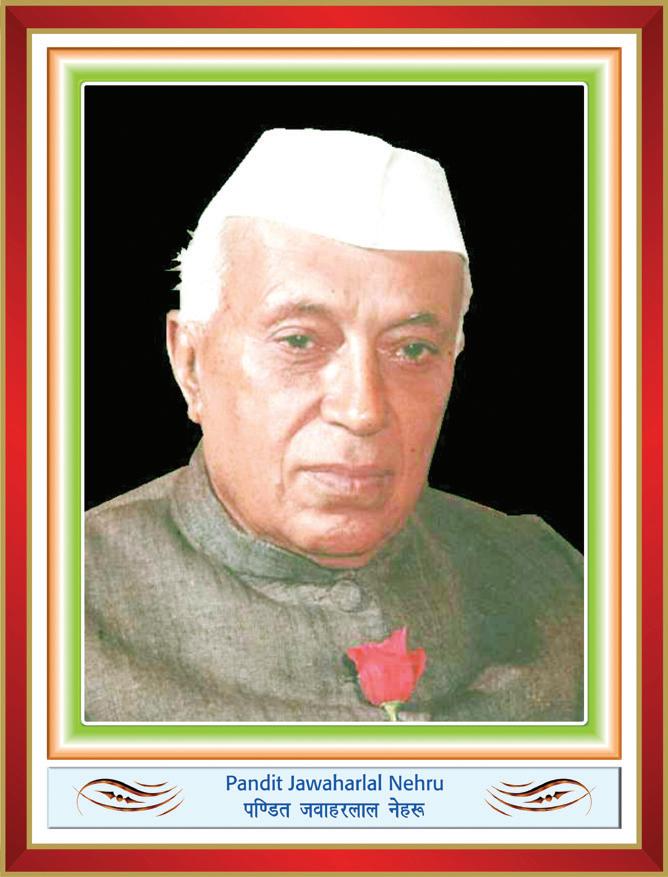
Chachaji placed an arm around my shoulders and ushered me inside. “Arre yaar, naam men kya rakkha hai,” was his jocund rejoinder. “A name is a name, is a name!” When departing, Chachaji reciprocated by bidding farewell to all with folded hands. However, when he came to me, he held out his hand and shook mine heartily. “Keep up the good work,” was his encouraging advice to me.
Words of wisdom from Mataji
As the Manager of VIP Catering at New Delhi’s Vigyan Bhawan (India’s premier conference centre) in the early ninety-seventies, I would come across Prime Minister Indira Gandhi practically every other day. As we grew acquainted, I began to ask if she had a speciality dish in mind to try on that particular day. Despite all the cooks who worked under me, I would still sample the dish that Mataji, as she was known, was to eat. Pandit Mohan Lal, Mataji’s personal bodyguard and her father’s before her, would carry two flasks: one coloured orange which would contain orange juice, and the other, white, for water. On some occasions, while Panditji would ensure the PM’s security and watch every spot and everyone in the dining hall, Mataji would attract my attention and would point one finger if she wanted water or two if she wanted orange juice, and I would intimate her demand to Panditji. Mataji would
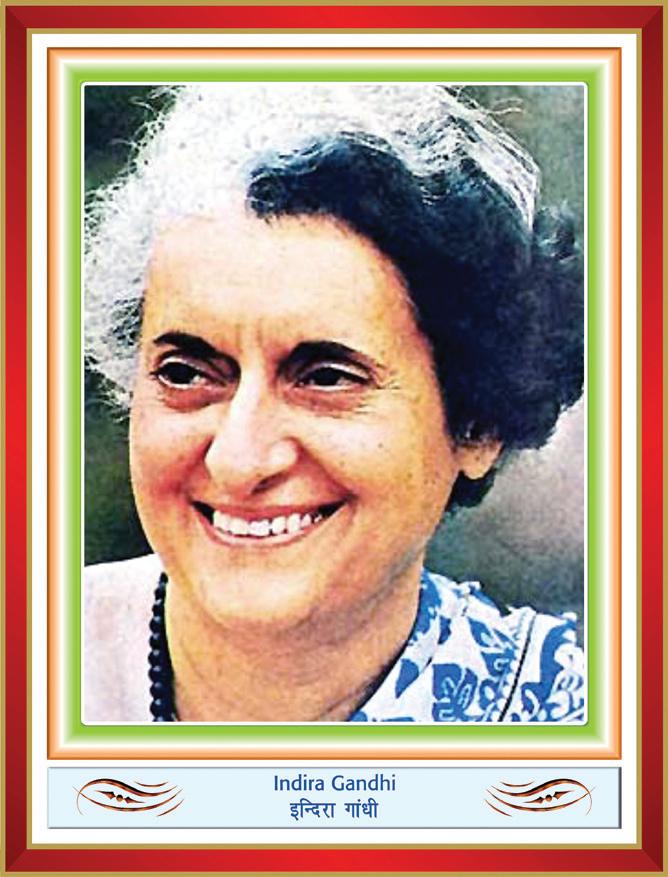
always be short of time, but one day when she appeared relaxed, I naïvely asked her why didn’t India invest in heavy earth-moving machinery that would do the job in half the time. Well before I had actually finished speaking she retorted, “George! You fail to realize that heavy machinery will also leave half the workers jobless!”
Lunch with black tea and Urdu poetry
President Fakhruddin Ali Ahmed would also visit Vigyan Bhawan regularly. He was frail and walked supported with a stick. On seeing him, I would gently hold him by the elbow and escort him from the large lounge room to an equally large dining room, where he would sit on an emperor-sized leather chair, his favourite. I would then place a coffee table in front of him, which would suffice as his dining table, and inquire if “Fakhruddin Sahib” wanted his usual lunch of poached chicken breast with steamed vegetables, washed down with a glass of warm water or occasionally, black, sugarless tea. The President would then ask me to stay on and discuss Urdu poets and poetry. While my heart and mind were with the foreign guests of United Nations pedigree, I was obliged not to displease the President of India, so I would perch on the carpet and we would converse across the coffee table. While Sahir Ludhyanivi’s romanticism was his favourite, the President adored Iqbal who wrote: Saare jahan se achcha, Hindustan hamaara. Hum bulbulen hain uski, woh gulistan hamaara, etc. The President was disheartened that Iqbal had chosen Pakistan over India. In Sahir’s work, his favourite was,
Mujh se pehli si mohabbat, mere mahboob, na maang Occasionally, Mataji would walk in and ask me to give her two minutes with the President. Once she had finished her discussion, she would ask me to resume discussing Urdu poets and poetry with the President. I always wondered how she knew what I was discussing with the President.
I was employed with the Ranjit Hotel as we had opened Santoor, the first Kashmiri cuisine restaurant in New Delhi. The National Emergency had been promulgated, and I visited Vigyan Bhawan to assist with a luncheon. The President entered the hall, he saw me and smiled, and as I escorted him to his usual chair, he asked how my wife Rose and our first-born Steve were doing. He also asked what I thought of ‘NE’. However, our conversation from that point on will remain confidential!
A memorable short break
Once, as we served coffee and biscuits to Prime Minister Pierre Trudeau of Canada during a break in his meeting with Indian experts, he asked me to join him as he wanted company. Of course, I was proud and happy to comply. The Prime Minister spoke little, but as he returned to the meeting, he asked for my name, shook my hand and told me to let him know as and when I intended travel to Canada.
Food fest in Prague
When in Prague, Czechoslovakia (now the Czech Republic), the Indian Ambassador Raja Surinder Singh of Alirajpur summoned me to his office one day, with the news that
Prime Minister Morarji Desai, accompanied by Foreign Minister Atal Bihari Vajpayee, was visiting Prague. His worry was that the PM’s cook had contracted chicken pox and had to be flown back to India. There was no-one to prepare special meals for the PM, who was on a special diet: non-grain meals, juice of carrots grown in north India during winter, Indian sweets made from cottage cheese, dried fruit and water. As I wondered where I fitted in the equation, the Ambassador handed me a menu card of the PM’s diet and asked if I could spare one of my two chefs for four nights to cook for the PM. I explained that as we worked for the Czech government and neither of my cooks knew how to prepare Indian sweets, I would take on the job. As Manager of the Indian government’s first Indian food restaurant abroad, I had been trained in preparing delicacies in cottage cheese
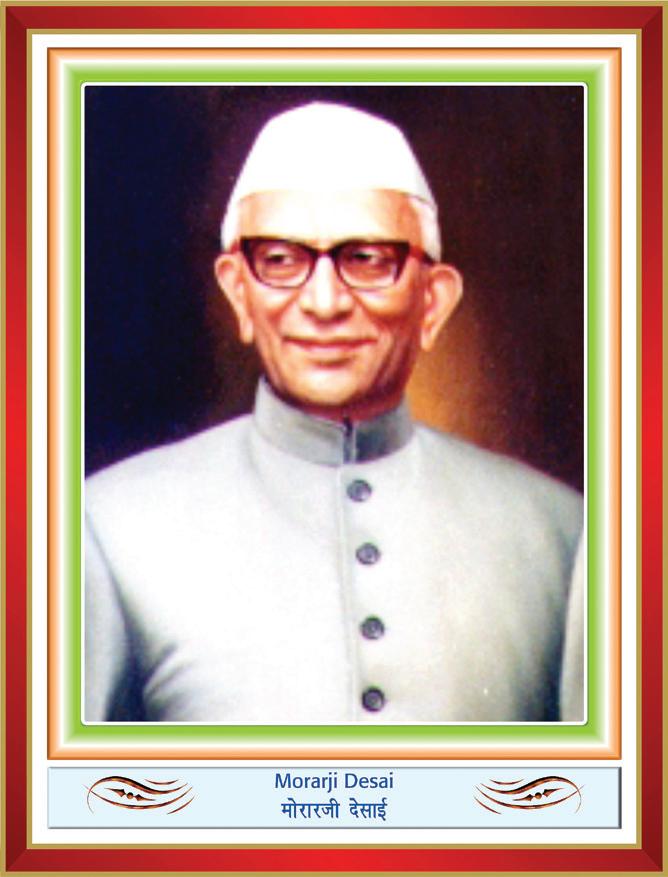
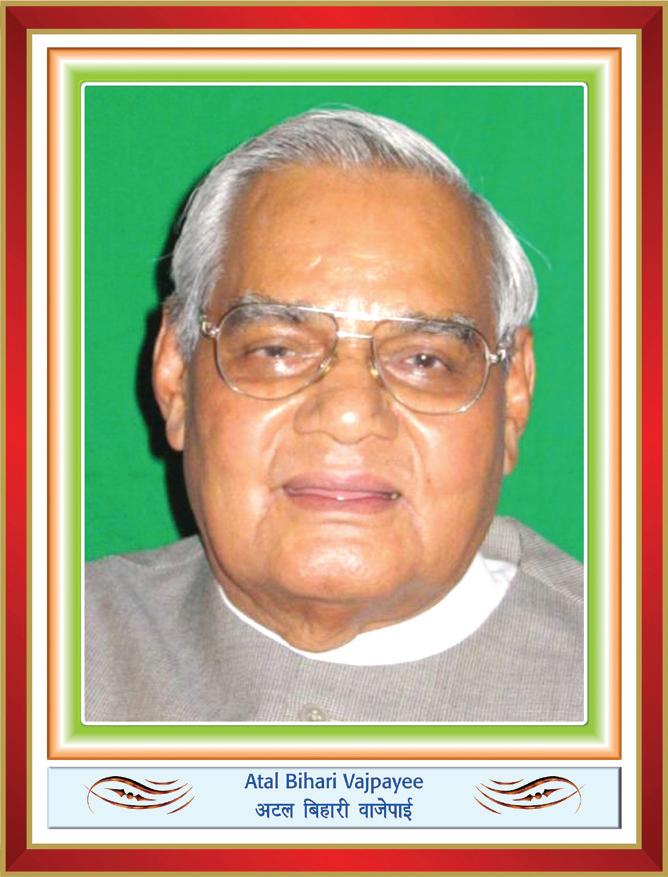
which would suit the PM. I drove to Germany to buy cottage cheese, ginger, garlic, coriander and spices and stayed at the Ambassador’s bungalow for four nights. During that time I prepared rasgullas, ras malai, chum-chum, burfi and gulab jamuns, etc. Seekh kababs, sahmi kababs ajmeri, murgh musallam, Tehran biryani, Mughlai parathas, and shahi tukra, etc., were served, and I also ate with them. A memorable piece of general advice was imparted to me by PM Desai in the course of a general conversation, and I quote: “The row of degrees after your name does not necessarily grant you membership into the club of the genteel.” How truthfully beautiful!
Each person wearing the Prime Ministerial hat does their best for the people and the country, but their personal beliefs can truly overwhelm those they come in contact with over the course of their normal day.
MAY 2011 <> 43 INDIAN LINK www.indianlink.com.au FIRSTPERSON
While my heart and mind was with foreign guests of United Nations pedigree, I was obliged not to displease the President of India, so I would perch on the carpet and we would converse across the coffee table.
It is rare for a person to have a wide range of experiences with people in the highest echelons of politics, and has something to recount about each of them
Photos: bharatmatamandir.in
Shades of yellow
Banana, cadmium yellow, chartreuse, chiffon, cream, golden, goldenrod, khaki, lemon, mellow yellow, saffron, topaz, ochre
Did you know… In ancient India, painters made the colour yellow by using the urine of cows who had been fed nothing but mango leaves.
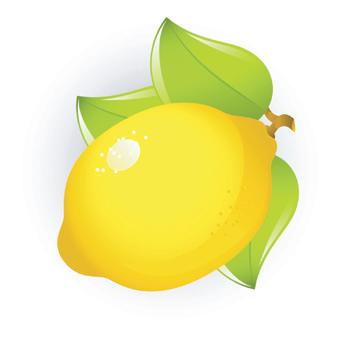
What yellow stands for


Yellow is a ‘warm’ colour and represents sunshine. It stands for cheerfulness, vibrancy, youthfulness, freshness, and also friendship. In India, they wear yellow to celebrate spring, and one of its shades (saffron) is the colour of spirituality.






But yellow also has negative symbolism, as it stands for cowardice and deceit.





After the World Wars, women in the western world waited for men to return from war by tying yellow ribbons for hope. Even today, yellow can say ‘welcome home’. Because of its brightness, yellow can also mean ‘danger’ or ‘caution’, as in yellow traffic lights, or a yellow card in football.
Famous yellow things
Famous yellow house: Artist Vincent van Gogh’s house in many of his paintings
Famous yellow cartoon characters: Sponge Bob Squarepants, Tweety Bird, Pokemon, Bart Simpson
Famous yellow river: China’s Hwang Ho, so named because of the ochre-coloured sediments in its water
Famous yellow car: New York taxis; Mr. Bean’s car (a British Leyland Mini 1000 which has padlocks and can be driven from the roof); Alice Cullen’s Porsche in the Twilight series ML
The Simpsons
The Colour Yellow
Bart and his family in The Simpsons are all yellow, but there was actually a whole episode called The Colour Yellow. In it, the Simpsons kids find out they have some black ancestry. They are 1/64th black, and while Lisa believes this explains her love of jazz, Bart believes this explains why he is so cool.

Hello yellow!
Match
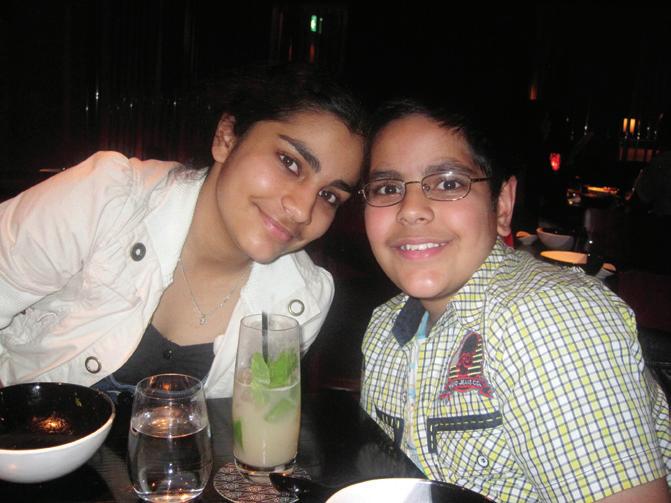
Type of bird
G. Type of fungus
H. Leader in a stage race such as Tour de France
I. The supposed danger to Western populations as the number of Asian migrants increase
J. Cowardly
K. A viral disease transmitted by mosquito
L. Members of a protest movement against the Thailand government
44 <> MAY 2011 INDIAN LINK
DL
YELLOW
ML
DL
these yellow things to their definitions Answers: 1. C 2. A 3. B 4. I 5. D 6. J 7. K 8. L 9. E 10. F 11. H 12. G 1. Yellow card
Yellow flag / Yellow jack
Yellow
4. Yellow
5. Yellow journalism 6. Yellow-bellied 7. Yellow fever 8. Yellow Shirts 9. Yellow
10. Yellow hammer 11. Yellow jersey 12. Yellow
A. A flag on a ship that indicates it is all safe in terms of quarantine
Uranium oxide, used in nuclear reactors
An on-field warning for a sportsperson D. Sensational reporting E. Type of fish F.
2.
3.
cake
peril
tail
foot
B.
C.
DL PEARL OF WISDOM: Yellow wakes me up in the morning Yellow gets me on the bike every day Yellow makes me suffer Yellow is the reason I am here Lance Armstrong, cycling champion PEARL OF WISDOM: There are painters who transform the sun to a yellow spot, but there are others who transfer a yellow spot into the sun Pablo Picasso artist APRIL (2) 2011

MAY 2011 <> 45 INDIAN LINK
In the final analysis
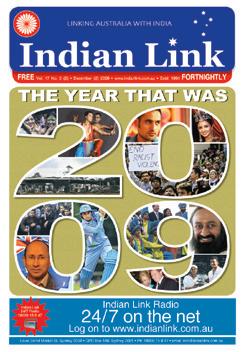
To take control of our lives and lead them according to how we think they should be led, we need to assess our self-worth
BY SAROJA SRINIVASAN
Every day we do some things that are important and meaningful, but also many things we would consider trivial and meaningless. How do we decide what is trivial? The meaninglessness of many actions is not necessarily static or fixed forever. Many actions that we consider trivial turn out to be the beginning of something far more influential than we could have ever imagined. Think of something that is very important in your life now, like where you are living or the career you are pursuing. When and where was the seed for this culmination planted? Perhaps it was in a trivial conversation somewhere in an unlikely place, or a word or statement made by a passerby. Who knows?
There are many things in life we discount as a mere coincidence. But when these things are looked at more closely, there is a pattern or regularity that the mind misses which only surfaces if we make a conscious effort to see it. It is the same with the
Matrimonials
SEEKING BRIDES
Decent Indian Hindu gentlemen. Aquarius. Invites matrimonial alliance from a pretty, affectionate lady for a successful relationship, aged 24 to 48 yrs. Caste /nationality open. Please respond by phone (02) 9676 2512. Mobile 0458 153 193

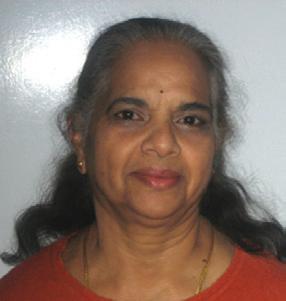
Iyer Vadama, Moudhgalyam Visakam, fair, handsome Mar 78/170 BE PMP, resident of Melbourne working as a Sr. Project Manager with Infosys Australia, seeks fair good looking Iyer graduate girl from reputed family. Early marriage. Profile in TM1462233. Kindly contact krishnakv@gmail.com.
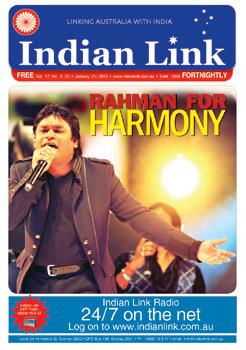
Parents of Australian-born Sikh boy 31, 5’8”, living in Adelaide, qualified engineer, seeking suitable Sikh girl. Australian citizen age 24-31. Contact with photo raone@live.com.au
Fiji Indian, 24-year-old male, seeking female partner who has a permanent residency or Australian citizenship, with a view to marriage. Looking for a genuine partner who is loyal, well respected. Genuine replies only please call on phone number 0406 017 240.
Professional, Australian citizen, fair, good looking, well settled, 42 years, divorced (no issues), Gujarati man, seeks alliance from single or divorcee (no issues), good charactered Indian or Nepali lady for marriage. Please forward details with photograph to inblisstogether@ gmail.com
Match required for an Australian citizen Sydney resident north Indian 26 years old, 5’7”, slim, handsome and very fair engineer boy from Kayastha family. Looking for a suitable well educated Indian girl with family values. Caste no bar. Please send details to akhilsns@gmail.com or contact 0412 487 801.
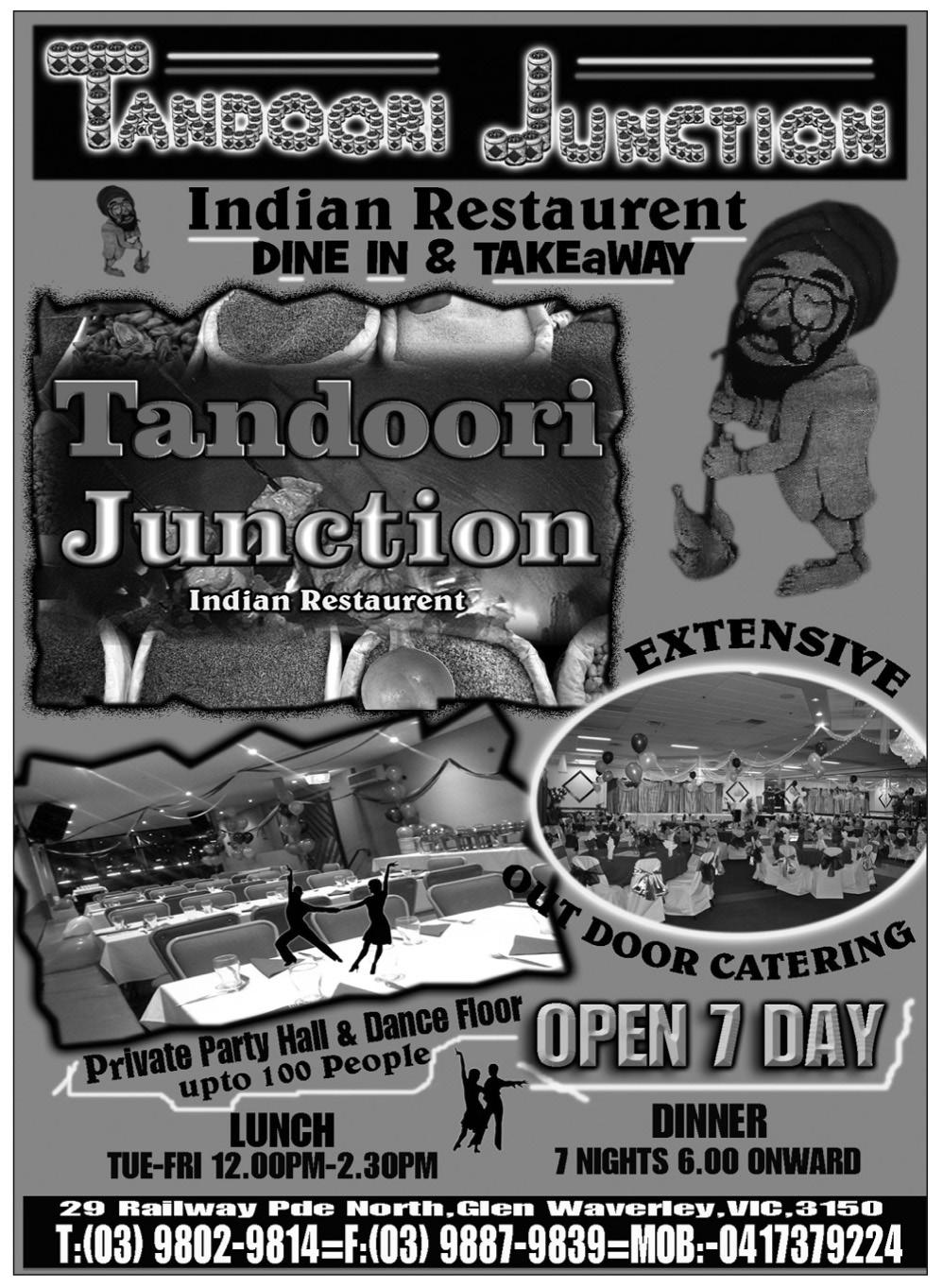
Sydney-based Hindu Punjabi parents invite suitable match for their son, 29 (April 82), 6’ 2”, Masters in Computer Science from
way we think. We are so used to thinking in a certain way, as society inadvertently conditions us to do, that we have allowed our own unique way to see the world to be completely overshadowed.
Yet, in the final analysis, it is our own self-worth and the way we see ourselves that gives meaning to what we do. We are so conditioned to how others see and evaluate us, that we are not even aware of what we would like our life to be.
often say, “What would others think?” as a reason to continue doing what they are doing, even though it is against their own wishes. These “others’ are rarely attending to your wellbeing or even if they do, they may not know the full circumstance of how your decision was made. In the final analysis what people remember after one has gone is how content and happy the person was, not just what they had achieved monetarily or materially.
Despite their materialistic preoccupation, most people secretly admire those who are fulfilled and content in their own way. There is a saying that gets repeated, though quite often somewhat inappropriately. People
Sydney Uni, Project Manager in leading MNC and getting $130K per annum. Non manglik, professionally qualified, beautiful and tall girl from educated family is required. Caste no bar. Please respond with girls particulars and photo. Email: eskay82@gmail.com
SEEKING GROOMS
Punjabi Arora parents seeking well-settled / professional match for beautiful slim unmarried daughter, 37 / 165, IT professional with strong family values. Brought up in India, settled in Sydney. Australian citizen. Status family. Caste no bar. Early marriage. Email with photo: ausgirl101@gmail.com
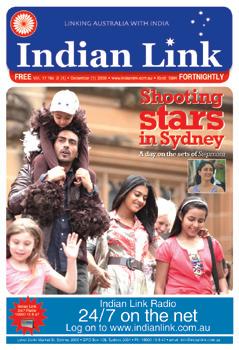
Punjabi Hindu Khatri girl, good looking, smart homely, never married, 33 / 5‘11”, looks very young, seeking tall Indian boy settled in Australia, two brothers well settled in Sydney. Caste no bar. Contact with photo and details on 0425 910 007 or ricky.bhalla@gmail.com
Seeking match for 39/165 unmarried fair slim beautiful Indian Punjabi girl, family oriented and responsible, traditional values, IT professional, brought up in India. Australian citizen. Early marriage. Can relocate. Serious enquiries only. Caste no bar. Email with photo: sydgirl09@gmail.com
Match required for an Australian citizen, Hindu br, 29-year-old girl, 5’8”, smart, well-cultured, working in Sydney. Looking for an educated, honest and well-settled boy in Sydney/Melbourne. Caste no bar. Contact with photo and details on madhumarch@hotmail. com or tel. +673 7157739
Seeking clean-shaven match for Punjabi Prajapati girl, beautiful, slim, (born July 1981), 5’5”, graduate (PU), diploma in fashion designing. Family in Chandigarh. Brother in Sydney, running own business. Girl is in Australia for 2 months. Caste no bar. Australian/New Zealand PR/TR preffered. Email: rk_sangar@yahoo.co.in or +91 9417072965 (India), 0422 669 082 (Sydney)
It is self-doubt that creates this uncertainty about the present and future. What we need to do is to stop and reflect periodically on what we want to do with our life. Of course, this requires time and a strong will to accept what we have and what we can do with what is given to us. Quite often this time for reflection appears after moments of misfortune, or when our expectations are thwarted. Sadly, it also tends to be brief and if one does not grab the momentary opportunity that this brief reflection presents and pursue it to bring about the change we would like, life will go on in a monotonous, predictable fashion within the confines of one’s own comfort zone. Yes, it will be comfortable but alas, the sense of meaninglessness will continue.
46 <> MAY 2011 INDIAN LINK
www.indianlink.com.au PSYCHE
One paper five editions SYDNEY CANBERRA MELBOURNE PERTH ADELAIDE BRISBANE GOLDCOAST For details call Indian Link 1800 015 847
In the final analysis what people remember after one has gone is how content and happy the person was, not just what they had achieved monetarily or materially.
ARIES March 21 - April 19
Tarot
Tarot predictions for February 2010 Tarot ‘n’ You Tarot ‘n’ You
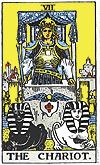

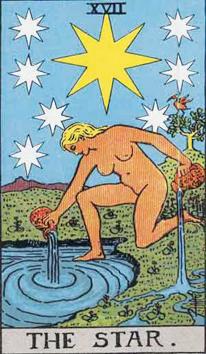
Tarot predictions for May 2011


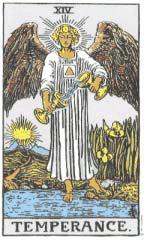
LIBRA September 23 - October 22
The cards suggest that you will have burdens and responsibilities this month. For those working, this is a challenging time. Things will ease with the appearance of the sun card, as you will be rewarded for your hard work. There is a possibility that you may decide to get married, as romantically you want some kind of security right now. Take a long hard look at things and do not rush into anything as your emotions are high.
TAURUS April 20 - May 20
The cards indicate a promotion or increase in money around you this month, with the Ace of Pentacles. There is harmony with family members and a friendship that may have been on the rocks will be sorted out this month. Financially, you will feel much more secure and happier. Take care of your health, as you have not been as regular with your exercise routines as you would have liked to be.
GEMINI May 21 - June 20
The cards indicate, with the presence of the Hermit, that you are not too happy with your career progress. You may be worried about the health of a family member. Take care of losing your temper, as you have been very supportive of someone and you will find it hard to keep your cool. Take a look at your diet this month, as there is an indication that you may have to give up dairy food due to intolerances.
CANCER June 21 - July 22
This month, with the presence of the Four of Pentacles, you will try to save money. Balance is on your mind these days, and you are trying to bring about changes in lifestyle and family. Your mind will be very occupied with plans to invest and acquire status and property. The cards also show that you need to take care of your mother figure, as she may be complaining about fatigue and headaches.
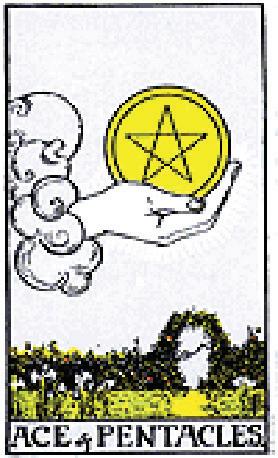

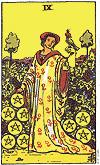
LEO July 23 - August 22
There are some plans to look at a new business with the Ace of Wands, or if you have a business, there will be changes made to it. I can also see here that you have many new ideas and a strong desire to branch out and explore. Financially, make secure investments and take things easy as you are putting a lot of pressure on yourself. Take your car for a service, do not neglect the brakes and oil checks.

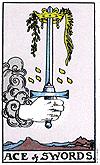

VIRGO August 23 - September 22
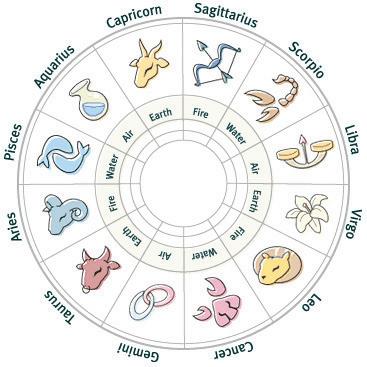
The cards indicate choices around you this month, with the 7 of Cups. You are not sure which direction to take with life. You seem to be feeling a little under the weather lately, and need to look at things with an objective mind as there are some excellent opportunities coming your way. Lack of sleep is indicated, as you are worrying about a relationship. Take a mental break from it and things will come back to the way you want them!
MELBOURNE LUXURY CUSTOM TOURS
ABN: 44 844 840 170
Try us for a premium Victorian touring experience with the following features:
• Personalised luxury tours by BMW or Mercedes vehicle
• Tours will be customised as per your requirements
• Tours cover Melbourne and tourist attractions within Victoria
• Can cater for all age groups but specialise in mature or elderly
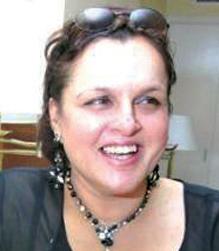
• Indian tour operator – hence ideally suited for your relatives or friends visiting from India or overseas or if you are an Australian resident touring Victoria
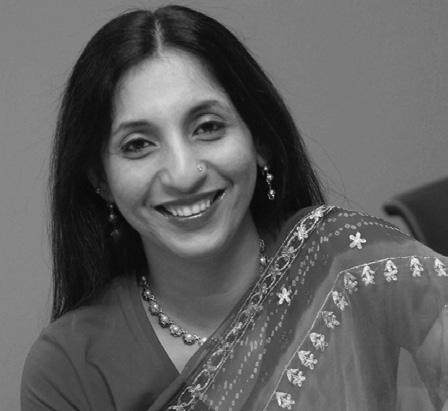
• Meals may or may not be included at your option
• Admission Fees to tourist attractions [if applicable] may or may not be included at your option
If interested, call us on 0423 001 508

The cards indicate here that you are trying to be strong at the moment, with the presence of the Queen of Swords. You seem to be regretting a decision or choice you have made recently. This month is going to be about making plans for the future, and also making changes around your environment. There is a journey coming up that will prove to be very beneficial. You will be walking away from something that has been disturbing or annoying you for some time!
SCORPIO October 23 - November 21
The cards suggest a change of residence and you will also be feeling very intuitive lately. There is a lot of urgency around matters this month, and you will want things to be done immediately. You are at the stage where you do not want to wait for things to happen, but make them happen. You may consider further study if not now, then in the future. Work relationships and money are your priority this month.
SAGITTARIUS November 22 - December 21
This month is all about making the right choices. You seem to be bored in a relationship, with The Lovers and 3 of Swords in your spread. You are also looking at travelling and generally looking at the future in your life. Take it easy, as your mind will be racing with many ideas and feelings. Things are going to work out in your favour, as luck is on your side. Look after your knees this month.
CAPRICORN December 22 - January 19
The cards indicate that you will be looking at your work, as you are feeling disappointed and frustrated, with the presence of the 2 of Swords. You are looking forward to a trip which could be of a spiritual nature. You will be working on ways to change your appearance, as you have not been as active as you would like to be lately. There is an indication of an engagement ring around you if you are single!
AQUARIUS January 20 - February 18
This month is all about making things work for you. The cards indicate here that you are trying to change your work or gain a promotion. You are feeling a bit upset because your work is not being recognized. If in your own business, you will be making major changes. You may decide to buy yourself a companion, a dog maybe… as your love of animals is now surfacing strongly. Make sure you have time for your new pet!
PISCES February 19 - March 20
This month you will want to free yourself from a relationship that has been upsetting you. The cards are indicating here that you have not been happy for some time. If you decide to walk away, take courage that you will be fine. If not, there will have to be some major compromises made. The 7 of Swords indicates a time of change and improvement around you. Take time to meditate and relax as you have stress around you.
MAY 2011 <> 47 INDIAN
LINK
STARSFORETELL
By NANCY SOOD www.nancysood.com
www.indianlink.com.au
BUZZThe
ABHILASHA SENGUPTA brings us up-to-date on what’s hot and happening in Bollywood

Single life for Singularity girl
After her break-up with long-time beau John Abraham, Bipasha Basu is now being linked to her Singularity co-star Josh Hartnett. But the dusky beauty is unperturbed and believes link-up rumours are a part of her profession. “The rumours don’t bother me any more. The world speculates, and let them do that,” Bipasha says.
“It’s a part of the business we’re in, and both Josh and I understand that. What is important is that the two people who are being spoken about should know what the truth is and what is not,” added the actress who was recently seen in Dum Maaro Dum
The 32-year-old recently ended her
equal, if not superior roles!
relationship with actor John Abraham, with whom she worked in Jism, Madhoshi and Dhan Dhana Dhan Goal. Her growing friendship with Josh was talked about as a potential romance, but the actress maintains she only shares a working relationship with the American actor. Singularity, a period film, is being helmed by Oscar-nominated filmmaker Roland Joffe. The film, which kicked off production in Queensland, later moved to India and was shot at places like Gwalior and Orchha in Madhya Pradesh.
Prestigious award for K Balachander
brought to it the same perfection and intensity that he exhibited on the big screen.
the storyline in movies. She feels they get little chance to take on the burden of a film, and end up playing the wife, girlfriend or love interest. That’s why, explains the feisty actress, her production company is called Bhigi Basanti, a tongue-in-cheek take on how they are viewed in Bollywood.
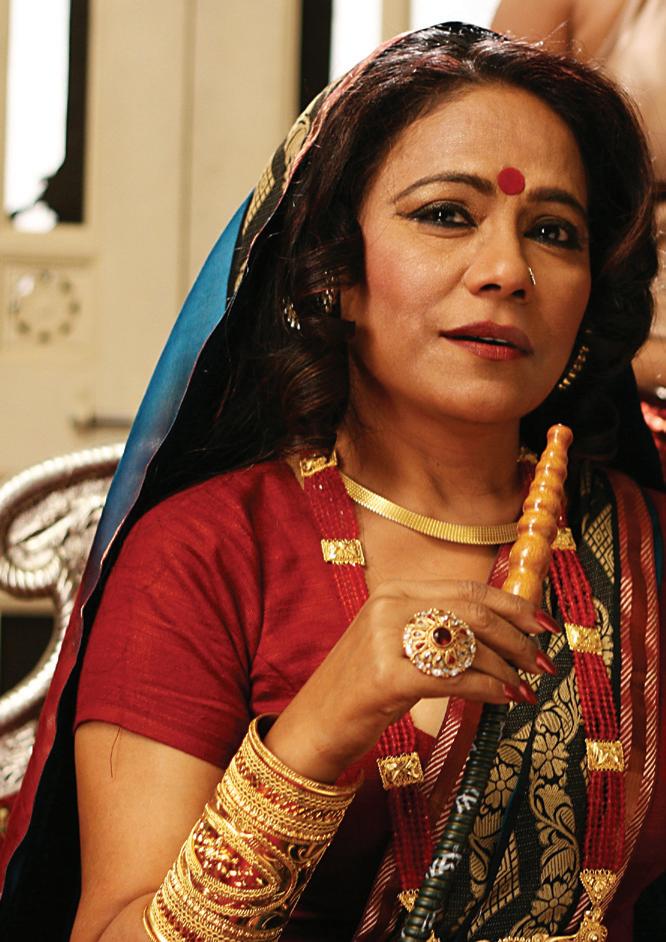
“Basanti obviously came from Sholay and it’s also a typical Hindi film heroine name. I think Bhigi Basanti is a very quintessential, typical image of a Hindi film heroine that has been in cinema across time. For me, it was a little bit of a tongue-in-cheek take also on how heroines are viewed in the Hindi film
GUESS WHO
Lara is (obviously) the female lead, while Vinay Pathak is the male protagonist.
“ Chalo Dilli was a very special film that came to us. It’s not a femaleoriented film. It’s a story where both the leads have equal footing, so it feels nice to make a film which is not arty or alternate cinema. It’s a commercial film with the simple story of a journey,” said Lara.
Lara is confident of her role in being paired across actor Vinay, but she says that his role is an essential part of the story. “It’s not necessary that you do all films with a superstar. The story demanded someone like Vinay. He was very, very suited for the film. In fact, Shashant had written the script keeping Vinay in mind for the male character,” explained the actress.
Now the wife of tennis star Mahesh Bhupathi, Lara longed to exhibit her acting potential as a solo lead, after working in multi-starrers like Housefull, No Entry and Partner Challo Dilli gave her that chance, and put the onus of responsibility on her, as she had to juggle two roles as producer and actor, and proved a challenge. However, the added pressure didn’t distract her from acting at any point. “I think the level of professionals we are, once we are in front of the camera, nothing else matters,” she said. Let’s hope Lara’s forthcoming ventures see women in
Veteran Tamil filmmaker K. Balachander, the director of hits like Ek Duuje Ke Liye and Sindhu Bhairavi , who has also won numerous national and Filmfare awards, has been conferred the Dadasaheb Phalke Award 2010 for his outstanding contribution to the growth and development of Indian cinema.
The award, given on the recommendations of a committee of eminent persons, consists of a Swarn Kamal, a cash prize of Rs.10 lakhs and a shawl.
Multifaceted Balachander has been a director, screenplay/writer and producer and has written, directed and produced more than 100 films in Tamil, Telugu, Hindi and Kannada in his 45-year-long career.
The 81-year-old is renowned for his distinct filmmaking style, focusing on unusual or complicated inter-personal relationships and social themes.
He has been responsible for kickstarting the careers of actors like Rajnikanth, Kamal Haasan, Prakashraaj and Vivek, among others.
Balachander came into prominence as a playwright with his dynamic plays, many of which received critical acclaim. He entered the film industry in 1965 and since, six of them have won many National Awards. For the last few years, Balachander has also turned his attention to the small screen and has
Balachander was conferred the Padma Shri in 1987, and was honoured with the title ‘Kalaimamani’ by the Tamil Nadu Government in 1973. He has also won the Golden Nandi award and Silver Nandi awards from the Andhra Pradesh government and has also won numerous Filmfare Best Director awards. The Padma Shri will be presented to him at the National Film Awards later this year.
Naseer’s hard to please!
It isn’t surprising that actor-musician Imaad Shah is a tad nervous about his latest movie release, as he’s the son of veteran actor Naseeruddin Shah. Well, before you think it’s another star-son jumping on the Bollywood bandwagon, Imaad’s situation is a bit different. He shares a friendly relationship with his father, but as a professional, Imaad admits that it’s an uphill task to please Naseer as he is the most critical person he has ever come across.
“He (Naseeruddin) is quite a harsh critic with everybody and applies the same with me too. He will be the last person to praise anyone wholeheartedly. He is the most critical person. I always feel I have to meet the standards that he has set,” said Imaad recently.
Interestingly, Imaad made his big screen debut in 2006 with his dad’s directorial debut Yun Hota To Kya Hota and featured in Dil Dosti Etc , the following year.
48 <> MAY 2011 INDIAN LINK
?
a new look ENTERTAINMENT
The daku queen tries
BIPASHA BASU
But after an unfortunate accident, he took a break from Bollywood, only coming back to the screen in 2009 with Sooni Taraporevala’s award-winning Little Zizou (2009).
Imaad will now be seen in Prawaal Raman’s 404 , a psychological thriller, which, to his pleasant surprise, even passed muster from his ever-critical father. “He really liked this film. I was expecting him to be very critical about it, but surprisingly he had a lot of good things to say about the director and all the performances. So, hopefully, the standard is met,” he said.
The film, in which Imaad plays an eccentrically genius college senior, also stars directors Nishikant Kamat and Satish Kaushik in pivotal roles.
Imaad admits that he does consult his father, but Naseer doesn’t have a huge influence over his professional decisions?
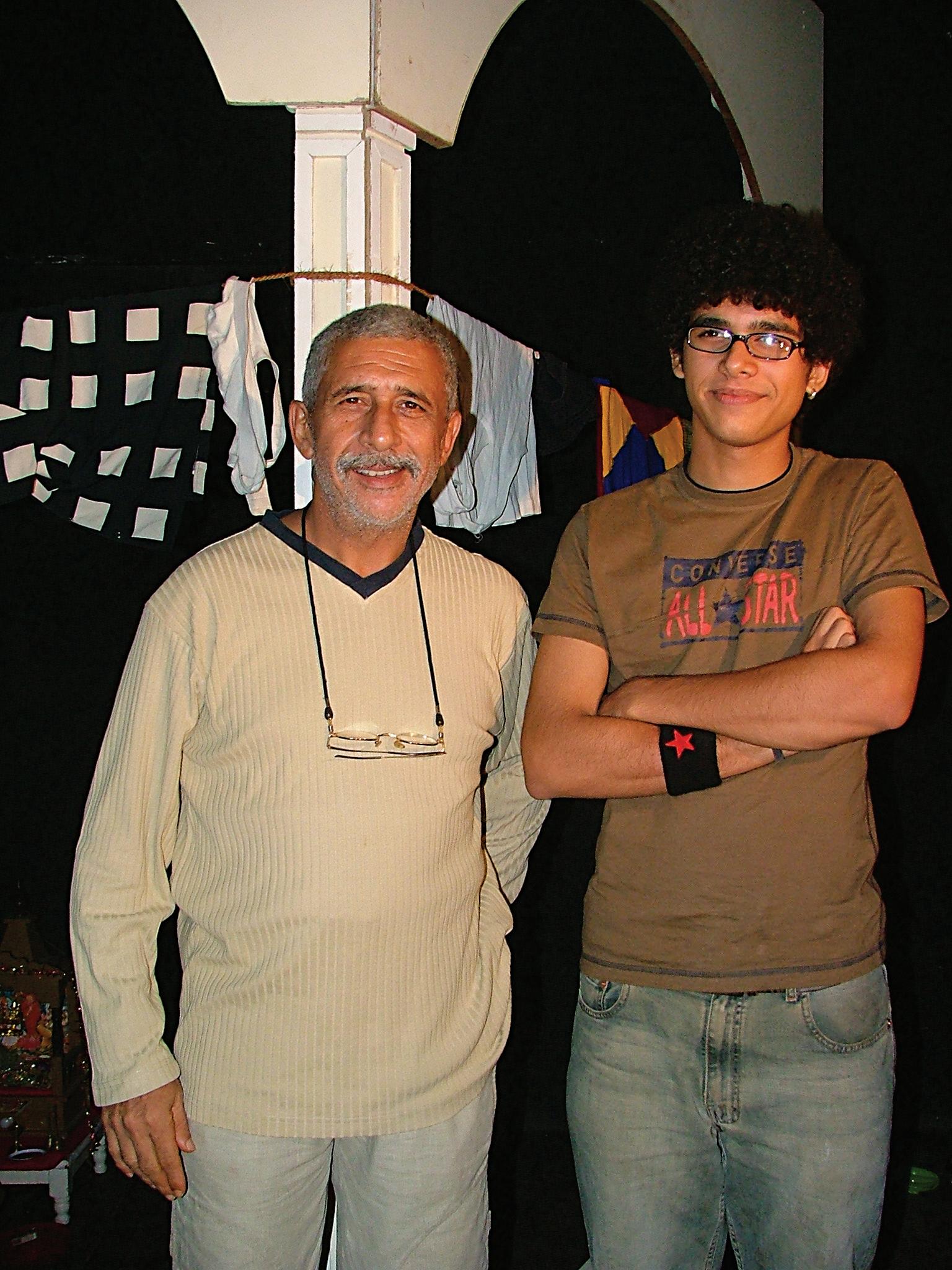
“My dad sees me as individual, and vice versa. We are good friends and we talk a lot about the positive and negative parts of the industry. We are very honest with each other but we are definitely two individuals in our own rights and we respect that,” said Imaad.
Naseer does want Imaad to open up a bit, to enhance his performance, reveals the upcoming, but talented actor. “He feels I’m too introverted and I’m not very free with my words. He feels I don’t share what I’m thinking, which has an effect on my performances,” said Imaad.
The actor’s own band called The Pulp Society, composed for 404 in which the sound and music are mostly punk and disco. “Thematically we had to stick to the theme of the film, hostel, college, ragging and other dark themes. So I have kept both - the film’s theme and what I wanted to add,” he said.
Well, if Imaad’s even a bit of a chip off the ol’ block and Naseer’s impressed too, a watch!
Intimate Freida
The first look of Frieda Pinto’s 3D film Immortals Rourke was recently released and the scene being viewed has certainly taken some effort. Freida was required to shoot a sex scene, which director Tarsem Singh says was a challenge for her. “Poor girl! It’s the first time we see Freida Pinto and guess what - it’s a sex scene. It’s a delicate situation. We’re trying to get all of the lights out so we can create an intimate situation. Only 80 people watching you and 20 of them with video cameras!” thesun. co.uk quoted Singh as saying. Freida plays priestess Phaedra in the ancient Greek epic, while Rourke is cast as evil King Hyperion and Henry Cavill who plays Theseus. I’ll bet Freida’s fans can’t wait to see if the movie makes her truly immortal!
Shaitan’s
the
The risque and violent promo of Anurag Kashyap’s next production venture is out, and has raised quite a few eyebrows. With novel shooting angles, this first-of-its-kind film deals with teenage angst and the rebellious attitudes of youth in metropolises. “Today’s youth is aggressive, sexual, violent, edgier and aware of everything happening around. They like to explore the darker side and push the envelope till they can be brought in check by authorities. The film is basically about how well you deal with the shaitaan (demon) within you,” said Nambiar recently. The movie stars Rajeev Khandelwal, Kalki Koechlin, Neil Bhoopalam, Shiv Pandit, Kirti Kulhari and Gulshan Devaiah. Sounds like the devil of a movie!
Minissha joins the Cannes bandwagon

Guess who’s thrilled to be one of the glamourous Indian actresses who will grace the red carpet at the forthcoming 64th Cannes International Film Festival? Yes, none other than apni Minissha, who will be in Cannes to attend the premiere of Woody Allen’s Midnight in Paris on the opening night and the all-important after-party. The actress will also stay back and attend other events at the fest, perhaps even look out for a plum role… This year Cannes is going to shine with Aishwarya Rai, Freida Pinto and Sonam Kapoor also showing up. Looks like the girls from India are set to sizzle the festival!
Sonakshi on hot seat, thanks to dad!
After the Big B, it seems that the Double S is ready to hit the TV-time bandwagon. Shatrughan Sinha is set to host the Bhojpuri edition of the popular quiz show Kaun Banega Crorepati (KBC) , and daughter Sonakshi Sinha will be one of those on the hot seat. Naturally, old pal Amitabh Bachchan will also be invited to the combination should be worth watching, and Sonakshi had better brush up on her GK. Strangely, Sonakshi doesn’t actually speak Bhojpuri but she understands it and feels it would be fun to be quizzed by her dad! Shatrughan too, doesn’t have a perfect command of the language, but he’s brushing up. The things one does
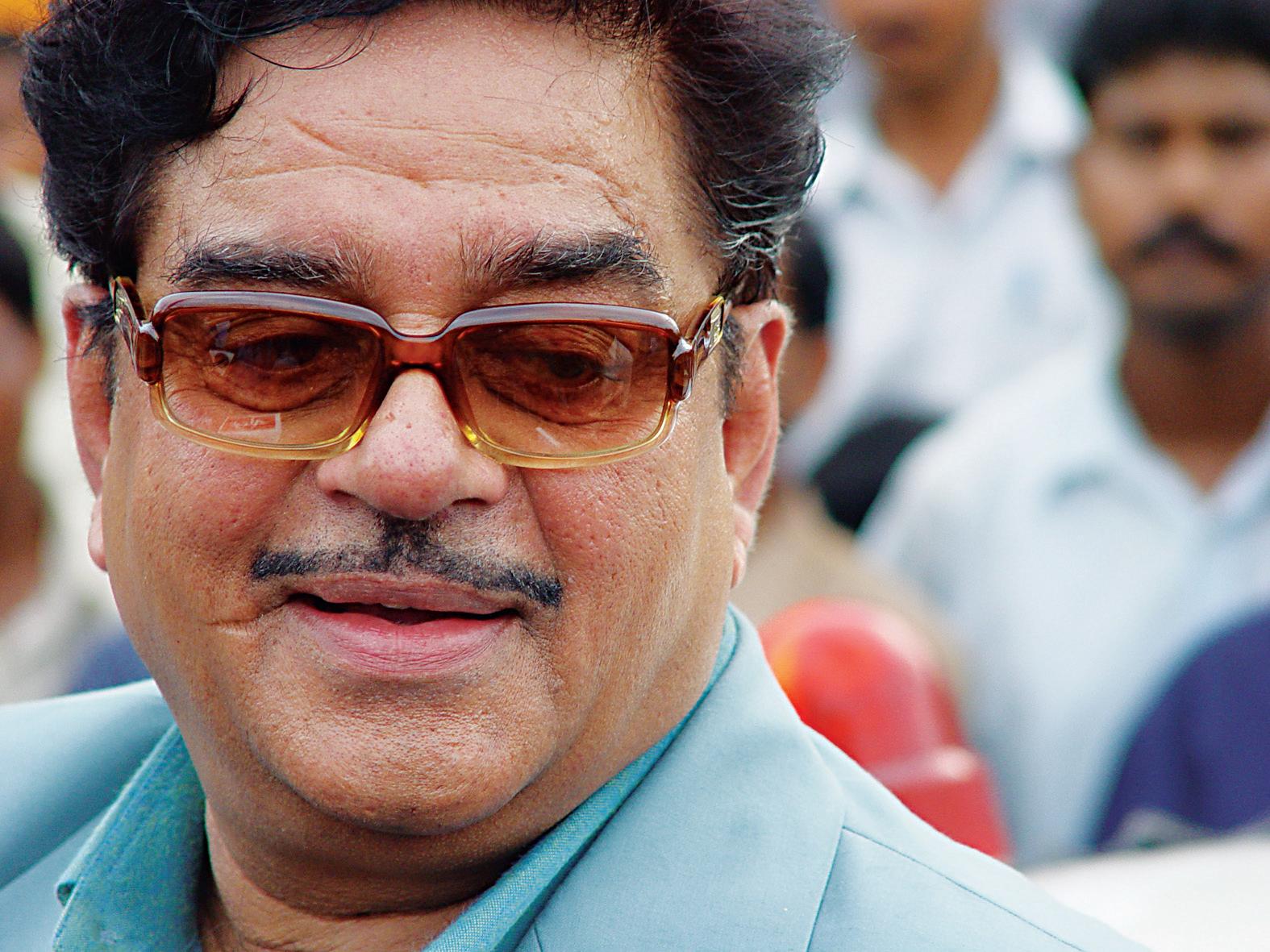
What’s the chitchat between Akshay Kumar and Anushka Sharma?

Send in your responses to info@indianlink.com.au and win a surprise prize
Last issue Caption Contest winning entry
What’s the chitchat between Sonakshi and co-star Vindu Dara Singh?
Sonakshi: It’s hard work teaching this pehlwaan his ABCs…
Vindu: Hey, I wouldn’t have dropped out of primary school if the teachers looked like her!
Priya Jagdeep St.Marys NSW
Priya wins an audio CD of new release Dum Maro Dum


MAY 2011 <> 49 INDIAN LINK
www.indianlink.com.au
GUESS WHO :ANSWER Seema Biswas
CAPTION CONTEST
SHATRUGHAN SINHA
MINISSHA
NASEERUDDIN SHAH WITH SON IMAAD
Cine Talk
An edgy
Film: Dum Maaro Dum

Cast: IAbhishek Bachchan, Pratik Babbar, Anaitha Nair, Bipasha Basu, Rana Daggubati, Govind Namdeo
Writer-Director: Rohan Sippy
By the end of it all, only one love story comes to a happy ending in Dum Maro Dum Love is not a popular emotion in the world that Rohan Sippy’s edgy thriller encompasses. If one loves in this hell-hole of pleasure then there’s only a dead end to look forward to.
This film is certainly not a ride for the squeamish. Violence dominates the proceedings.
Ladies and Gentleman, welcome to the Other Goa. The one that we don’t see in Hindi cinema. Unless we look really hard and come up with Pankaj Parasher’s Jalwa 24 years ago. There too Goa became the scene of a watchable drug-busting drama.
In DMD the characters in Goa are constantly up to something self-destructive. You really can’t afford to take your eyes off the screen as the lives of three unlikely ‘heroes’ -- one a redemptive cop, the other a student who sells his soul for a scholarship and the third a musician trapped in discordant notes -- converge in most unexpected ways. But then the ‘unexpected’ is only expected in a film that addresses the uneasy nexus between crime and conscience in hedonistic Goa, without taking sides.
DMD avoids getting judgemental. The writing, by Sridhar Raghavan, doesn’t assume a position of moral superiority over Goa’s inglorious crime syndicate. Probing into the anatomy of the global drug racket in Goa, the film sweeps us with a violent jolt into a world of doom and damnation where the innocent must perish and the incorrupt must suffer.
Abhishek Bachchan’s cop’s role as ACP Kamath acquires an interesting moral ambivalence. Yup, the celluloid cop has evolved from the seething simmering Bachchan persona in Zanjeer to the laconic almost-cynical and acutely suffering law
enforcer in DMD who must make hard decisions not in the last reel but Reel Now.
The vehement violence and illicit wealth of the crime syndicate and the immediacy of its annihilation are brought into one jagged but unified line of vision. Often Rohan Sippy’s direction seems to favour the craggy uneven route. But hey, that could just be Amit Roy’s moody cinematography capturing the crowd sweat and greed of the Goan drug cartel.

Sippy displays a tremendous partiality for restless visuals. The characters are always on the move though their destination is a mystery even to themselves. Maybe their aspirations are over-run by their greed. The narrative never stops long enough to let us come near to the characters to feel the heat of their hurt. A breathy wheezing anarchy rules over the universe that Rohan Sippy’s arching cinema embraces.
Some of the characters sneak in a warm regard for their individual space in unguarded moments of vulnerability. Abhishek Bachchan’s mourning for his lost family runs through the film like an aching limb that cannot be amputated from the proceedings no matter how hard it tries. To the cop Kamath’s role Abhishek infuses a kind of supple laconism that makes this suffering cop remarkably free of self-guilt, not to mention the khaki uniform.
How one wishes Kamath’s relationship with the troubled world around him was allowed to grow. The only time we see him in an interactive mood is with his subordinate Mercy who true to stereotype, gets bumped off.
Has the film been edited (by Aarif Shaikh) too tightly, sacrificing the need to let the characters space for emotional growth for the sake of getting on with the process of cracking the case?
Very often we want to enter the painlashed soul of the characters, the underage boy played by Pratik Babbar (vulnerable, again!) who gets caught in the airport while trying to smuggle out drugs. The musician Raba Daggubati (striking debut, this) who loses love to crime. The crime-lord’s mistress,

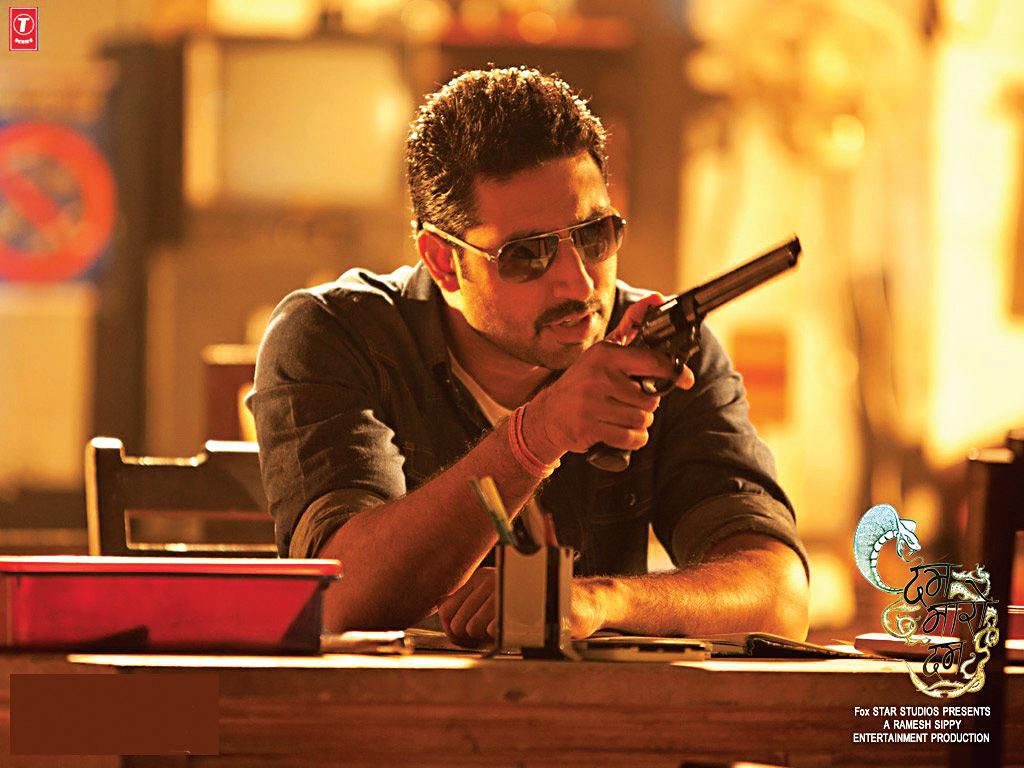
On some deeply ironic level celebrates that loss of innocence which haunts the beaches of many touristic paradise. And yet we see glimmers of stark humanity in Rohan Sippy’s characters. It’s not in the way the actors play these people. It’s in the way
replicated splendour, reminding us of the poor quality of the rest of the music.
50 <> MAY 2011 INDIAN LINK
ENTERTAINMENT
Outstanding ode to city of dreams
giant monster that consumes everything that moves. The characters are all casualties of that traffic-jam freedom that comes to a commuter stranded in the middle of a highway in a car with nowhere to go and nothing to do, with time than to spend it in idle retrospection (with or without music playing in the background).
The mood of this tense, clenched and thoroughly gripping humane thriller is so spiritedly Mumbai-centric you applaud the director’s vision after the last shot of the work swishes by. The rapid movements of images of extreme emotional crises and the ensuing violence, are so skillfully put forward you don’t feel you are being manipulated into staying riveted to the screen. You flow with the frenzied pace of a people whose lives are out of control.
The interaction between the NRI and the goons is chilling to the core. Abhay’s lapse into a life that he had probably left behind, is charted in a zigzag of humour and irony.
The pace is so relentless, we don’t even get a chance to applaud the even narration that defines these jagged lives as they hurl towards a karma that we are not allowed to guess.
escapades.
Nikhil Diwedi and newcomer Pitobash as Tusshar’s accomplices are entirely in tune with their characters blending so well with the milieu you are sure no one gave any of these actors a second glance on the streets of Mumbai where the script often ventures out.
I’ve seen the future of Hindi cinema. And it’s got a name: Shor In The City. They say Mumbai never goes to sleep. Catching the restless on-the-edge mood of a city and its people who refuse to fall off that edge of the hurtling local train that takes thousands of destinies every day to their work and then back home, Shor... throws forward the kind of seductive cinema that makes you think about the quality of life we all lead, irrespective of the city that we occupy, or rather, the city that occupies us.
Mumbai, in co-directors Raj Nidimoru and Krishna DK’s scheme of things, is that
Shor In The City pins you down to its brilliant screenplay from the first frame when we see the three waylaid youngsters Tusshar, Nikhil Diwedi and Pitobash negotiate the crowded streets of Mumbai in search of prey. The characters work both as predators and as victims. They feel the gun gives them the right of way when, in fact, the traffic snarl of life has got them by their balls.

There are three protagonists with their ‘Mumbai’ stories to tell. Sawan (Sundeep Kishan) wants to play national-level cricket. Tilak (Tusshar) wants to give up a life of crime to focus on reading and housekeeping (in that order). But the most interesting strand in the lucid lineup of conflicted characters is the NRI Abhay (Sendhil Ramamurthy), whose dreams of setting up his own business in the city are turned into a nightmare by goons who muscle into his work-place and life with menacing insidiousness.
The co-directors succeed in remaining many steps ahead of the audience. The masterly editing (Ashmith Kunder) and the moody earthy cinematography (Tushar Kanti Ray) aids the director in building a conflagration of compelling montages that add up to a climax that doesn’t quite add-up…and rightly so. There are no neat conclusions to these lives that are stuck in their desperate bid to escape their karma.
Karma, the theme song tells you, is a bitch. Watching the people who move through their designated anguish with such furious fluency, you have to agree with the opinion that destiny deals a bitchy blow to most working-class people in the cities.
Shor In The City is a work suffused in an inspiring glory. The characterization is so precise and the dialogues so perfectly attuned to the minds and hearts of the characters you wonder which came first. The people in the film, or the film itself.
I have not seen a film so filled with credible performances in a while. Even the smallest cameo is done by the perfect face and personality. Whom do we single out without doing injustice to the rest? But yes, Tusshar as the bad-boy finding salvation in books and wife gives an interesting spin to his character. This is a far cry from his over-the-top Golmaal
Taking the ‘FROM’ out of travel prices
Sundeep Kishan as the boy who wants to play cricket and get married brings a certain simplicity to the tangled goings-on. You could say he’s the voice of innocence in the cacophony of self-serving diabolism. Among the female characters Radhika Apte as Tusshar’s simple but strong wife reminded me of Tabu in Viraasat.
There are stand-out cameos by Amit Mistry (as a street goonda who specializes in organising dharnas), Zakir Hussain (as an extortionist) and several other actors who bleed a brilliance into the plot for just fleeting moments before vanishing into the crowds of Mumbai.
Yes, the city has been savage and inviting before in the cinema of Raj Kumar Santoshi and Ram Gopal Varma. But never so funny. There’s a moment when a little boy whose foot Tusshar thinks has been blown away by a mistimed bomb, stands and dances in the Ganpati visarjan.
That moment defines the cutting edge of the humour in Shor In The City. If Mumbai is troubled by violence and greed it survives so splendidly because it never takes its problems to heart.
Don’t miss this outstanding ode to the city of dreams, goons, guns and glory.
Subhash K. Jha
What you see is what you get … at Value World Travel’s website!
The innovative team at Value World Travel have done it again!
In what appears to be a world first for travel agency websites, the prices on the Value World Travel home page are the fares you actually pay when you go to the online booking screen!
When the Value World Travel team listened to feedback from their customers, they realised that many customers were frustrated by travel industry advertising that displayed prices that no one was ever able to get.
Most customers were becoming very sceptical about prices advertised for online bookings, especially when they saw the word ‘from’ in front of the price. Customers were saying
that whenever they tried to book online, they could hardly ever get their ticket at the prices advertised.
So the Value World Travel team got to thinking, “How can we give the customers what they want?”
After some very technical research and development, they have come up with a web page that displays current prices. If you have a look, you will notice that the word ‘from’ is not visible next to the advertised prices. That’s because the price displayed is the price that you will be able to book the ticket for when you get through to the online booking screen.
When they looked at other websites around the world, the Value World Travel team could
not find any other travel agency website that offers prices on a ‘what you see is what you get’ basis.
Neni Tiwary, Value World Travel’s Managing Director, said, “We wanted to do something to bring more credibility and trust from customers towards the travel industry. Despite the technical hurdles, we felt that it was really important to give customers some certainty when they look at a web page displaying travel prices.”
“We were a bit surprised when we could not find anyone else doing this. Given the resources of some of the more established travel groups, we thought that someone else would have done this before us”, said Mr
Tiwary.
This latest innovation adds to the list of other ‘firsts’ that the Value World Travel team have brought to the Indian Sub-continent travel market. These include being first to offer no credit card and bookings fees, first to offer a cheapest price guarantee and first to offer cash back rebates for online bookings. These innovations underline Value World Travel’s latest slogan: “Fly away – no more to Pay!”
“Keep watching this space,” said Mr Tiwary. “We will keep bringing innovations to the travel industry so that customers can have an even better travel experience.”
Restaurant for Sale
$ 185,000 Genuine Buyers Only. Please call on:
Restaurant for Sale 0405 100 222
• For an opportunity to be a part of a thriving Indian community

• Restaurant in the best location in Harris Park. Indoor and outdoor dining with newly fitted equipment
• Great for Husband and Wife team or a Partnership
• Loads of potential
• Cheap Rent
• Long Lease
MAY 2011 <> 51 INDIAN LINK
www.indianlink.com.au
ADVERTORIAL
Film: ShorInTheCity
Starring: Tusshar Kapoor, Sendhil Ramamurthy, Sundeep Kishan, Pitobash Tripathy, Preeti Desai, Radhika Apte
Directed by: Raj Nidimoru, Krishna D.K.
Matrimonial mayhem
The hype around the royal wedding may have just ended, but is this just the beginning?
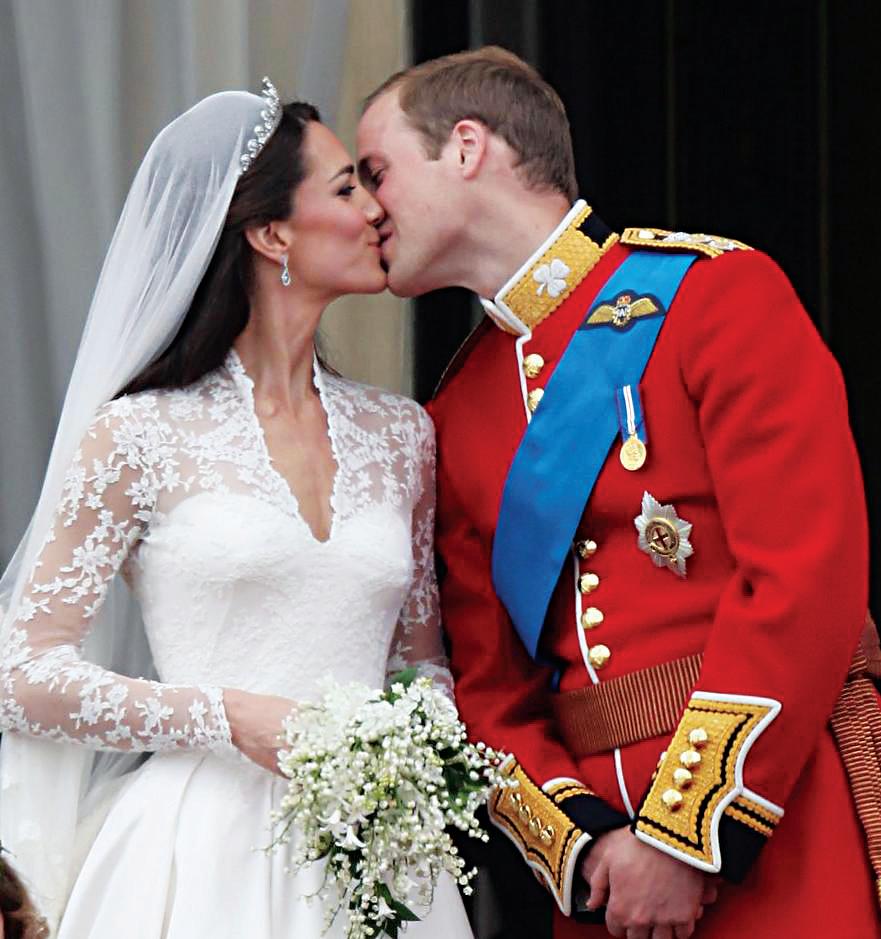 BY LP AYER
BY LP AYER
Honestly, I wish I could have been spared feedback on the royal romp in all its minute details in every kind of paper or magazine. Since the tragic death of Diana years ago, there has been a dearth of royal stuff and, as if the Gods have answered the prayers of women’s magazine editors, there was a glut of gossip since the couple’s engagement in November. Every act, move, speech and slip-up of this former party goodies peddler on e-Bay was subjected to micro and macro analysis by the media mob.
For a start, many a dame and duchess with dreams dashed of latching their little lasses onto the royal household, were out to portray how common Catherine’s clan is and how middle class the Middletons are. With hopes of crowning glory gone, some mothers were even mouthing how canny and crafty Kate’s mum was in placing her in the same college as William, simply to catch his eye.
more important than a princely “I do” declaration. In stark contrast to all this fuss over a commoner bride, was the casual treatment of the groom, a real prince. A week prior to his wedding the bloke from Bucks Palace was entertained to barbeque of bangers and beer at a buck’s party by best man brother Harry. Best man, eh? Harrible!
Now if you’re wondering how much this royal show would have cost, not a penny I assure you! In fact it is a royal treasure trove with trinkets of all sorts on sale – stamps, scarves, mugs and much more. You will be a mug not to buy one of them hoping it will be a collector’s item one day, as I did in the ‘80s; in fact, I am still safe-keeping a Charles-Diana stamp - the only place in which they still seem to be together.
And finally, the day arrived. April 29. The post-it disappeared from the TV, and from 4pm onwards, the land line and my wife’s mobile phone went on silent
Every act, move, speech and slip-up of this former party goodies peddler on e-Bay was now subjected to micro and macro analysis by the media mob.
pink dress with hat and gloves to match snored on our lounge. Sitting in the middle of the debris on the dining table sat a bunch of champagne glasses and, I almost reeled, two of my treasured bottles of Moet Chandon. My wife and her friends had certainly celebrated the wedding in royal style!
I had a good time too, seeing my son jump with joy at Carlton’s win!
My attention was drawn to the TV, which was almost obscured with post-it notes. The first read, “April 29, 2012, 1st Wedding Anniversary”. Next to it sat “July 2012, Birth of first child”; “September 2012, Christening party”, “October 2012, Harry’s wedding”. Well, I thought, seems like I’ll be watching Carlton play a lot more.....
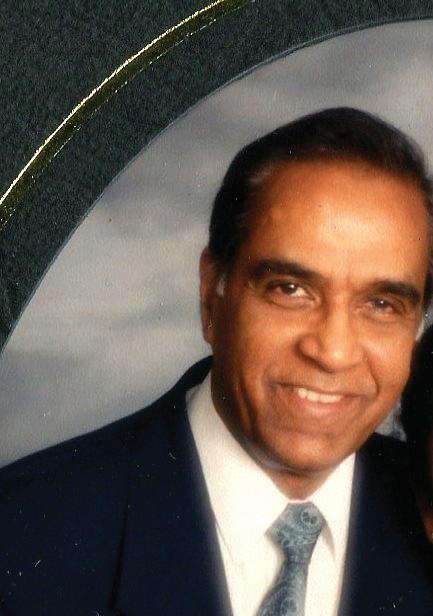
52 <> MAY 2011 INDIAN LINK www.indianlink.com.au BACKCHAT


MAY 2011 <> 53 INDIAN LINK

54 <> MAY 2011 INDIAN LINK































































 BY PRIYANKA TATER
BY PRIYANKA TATER



















 Preeti Jabbal
Preeti Jabbal







































































































 BY LP AYER
BY LP AYER



